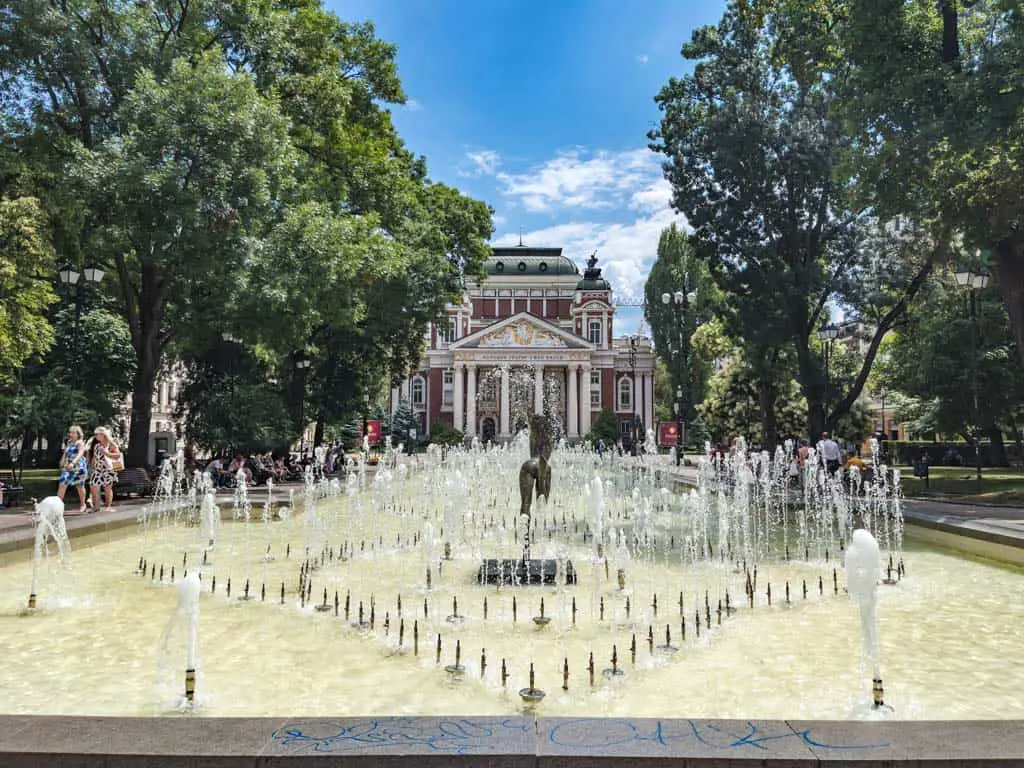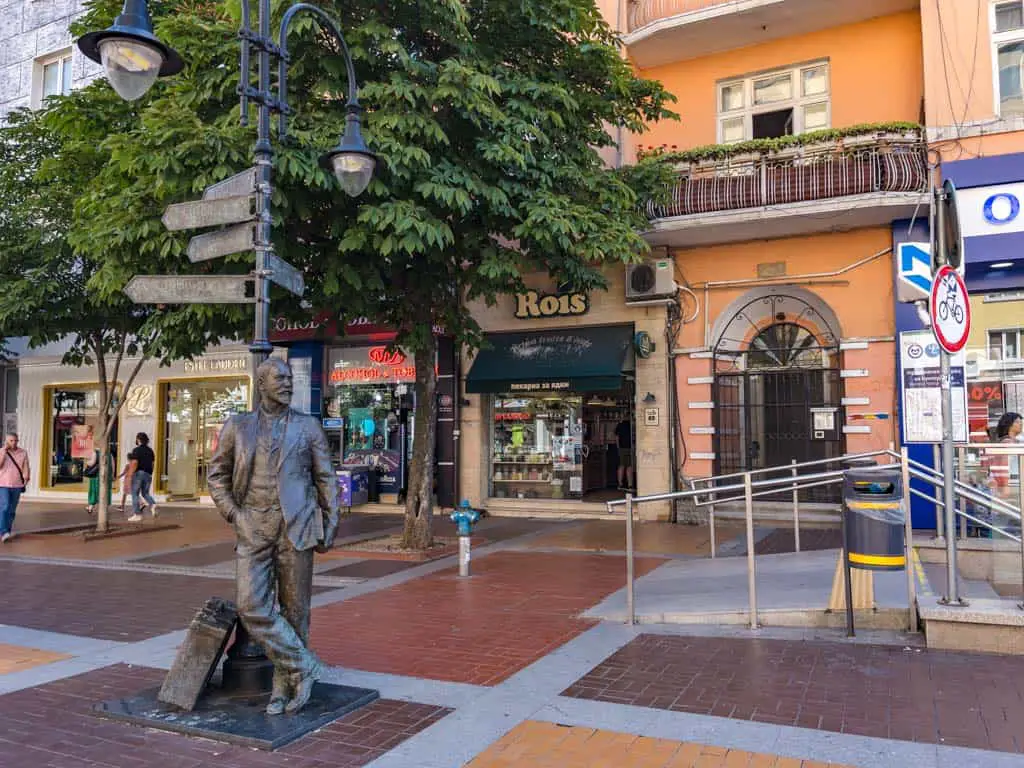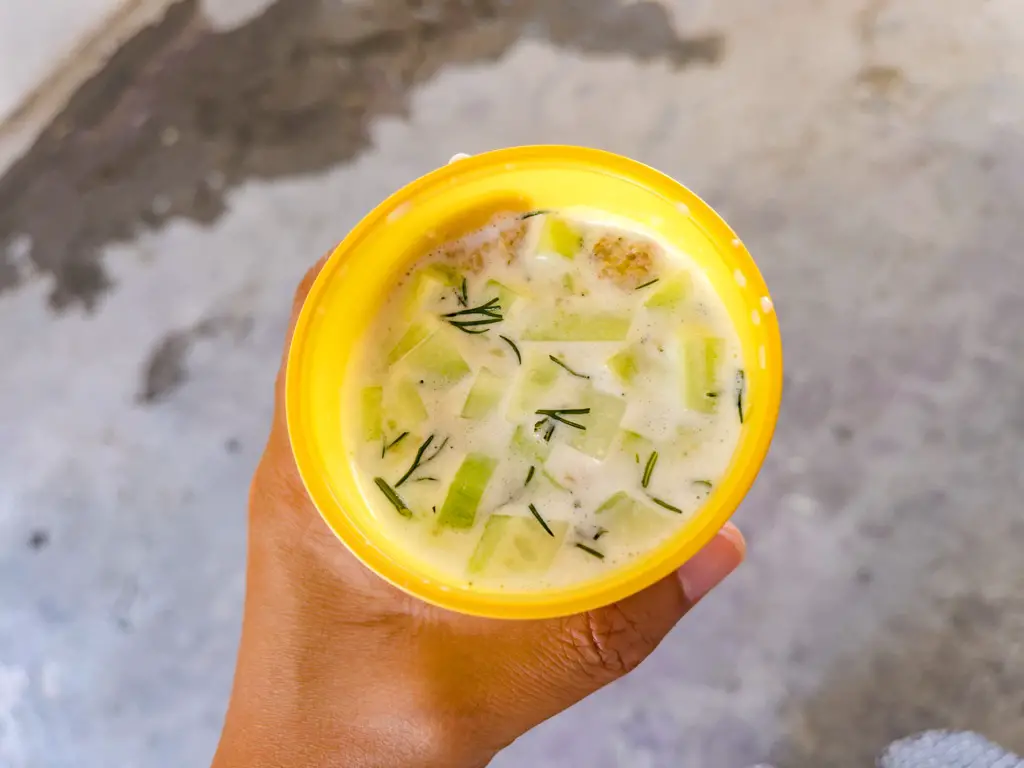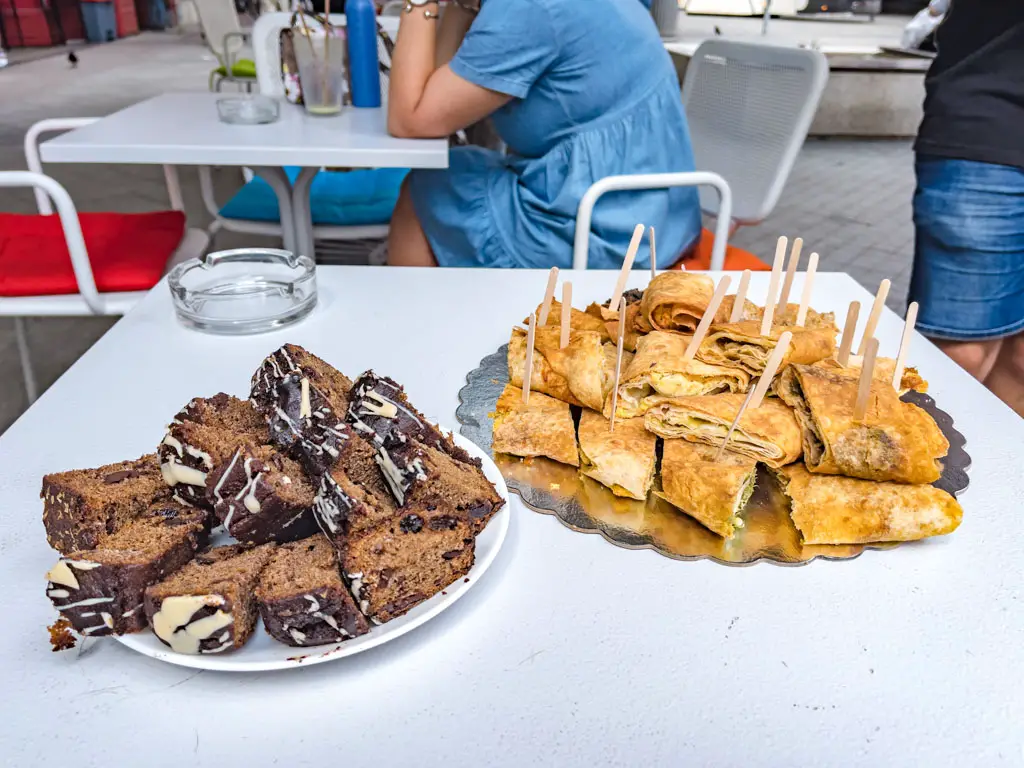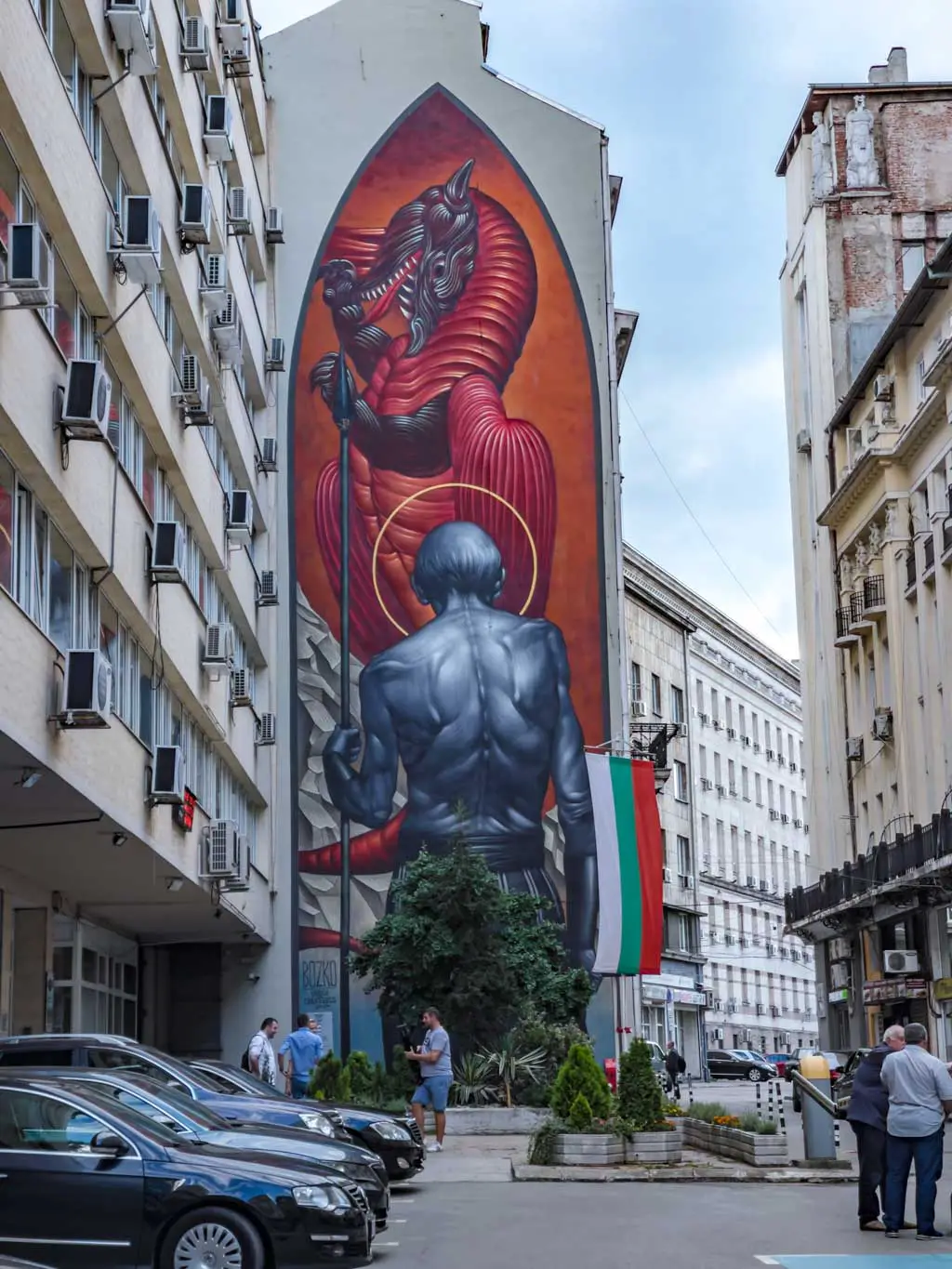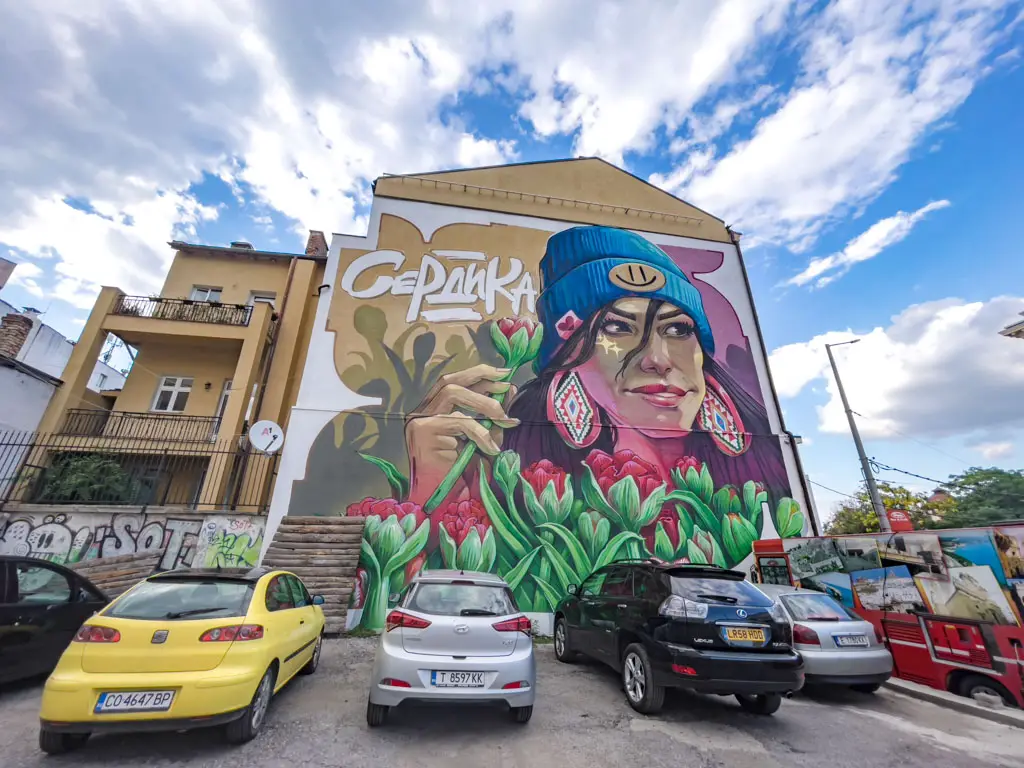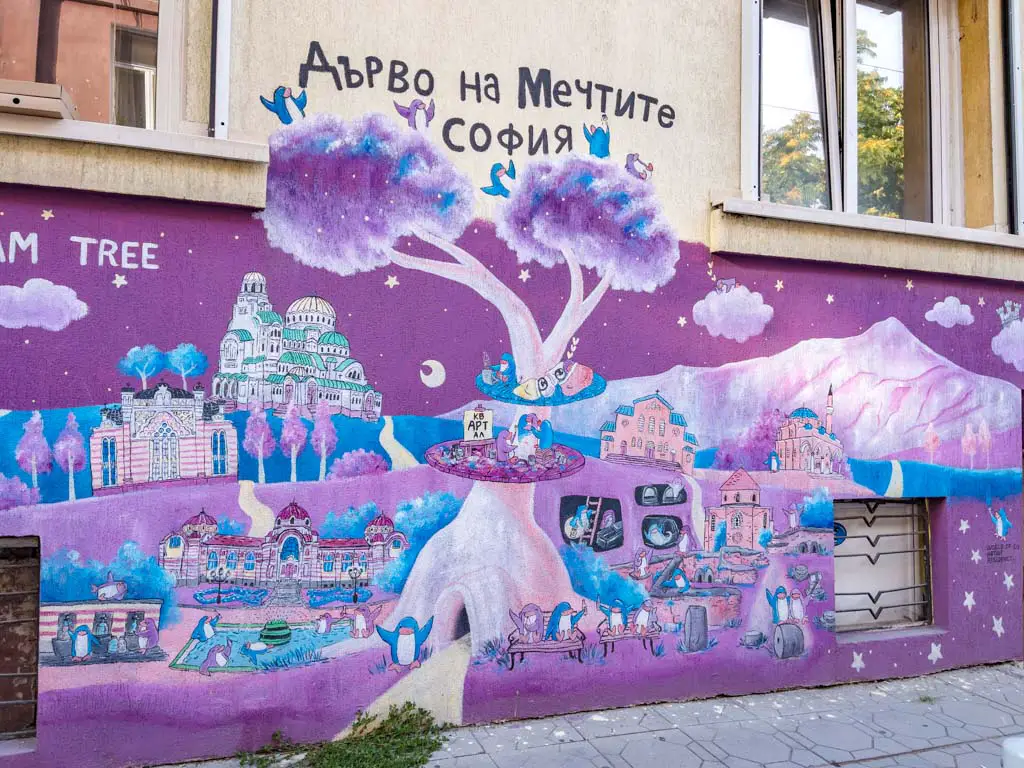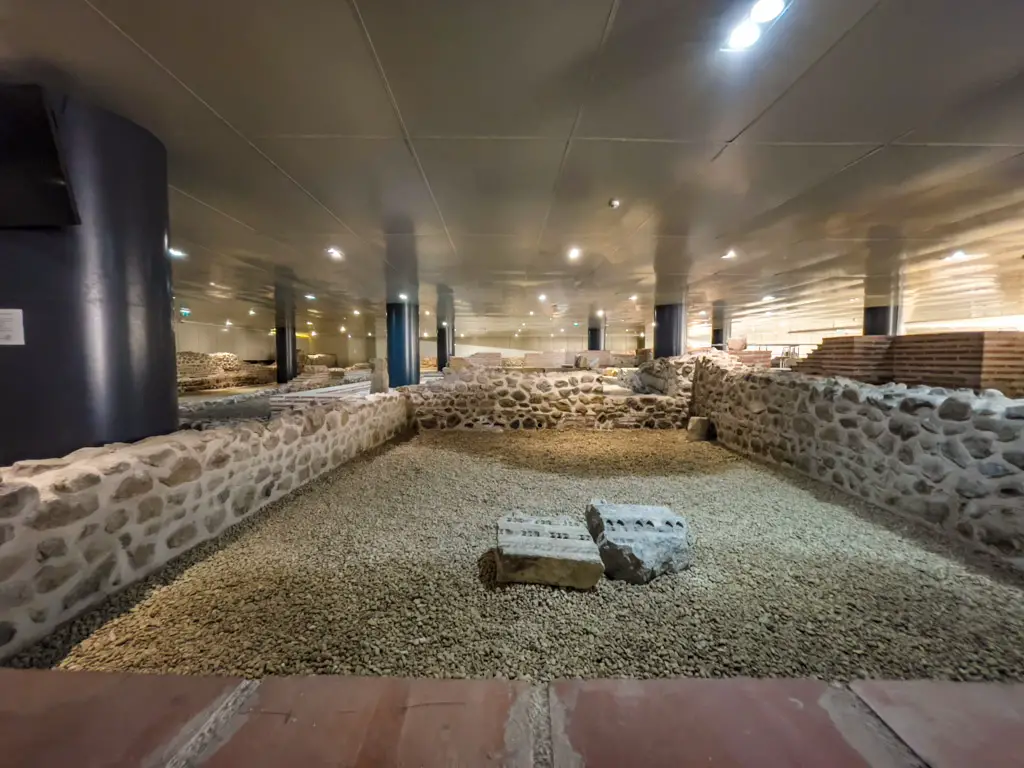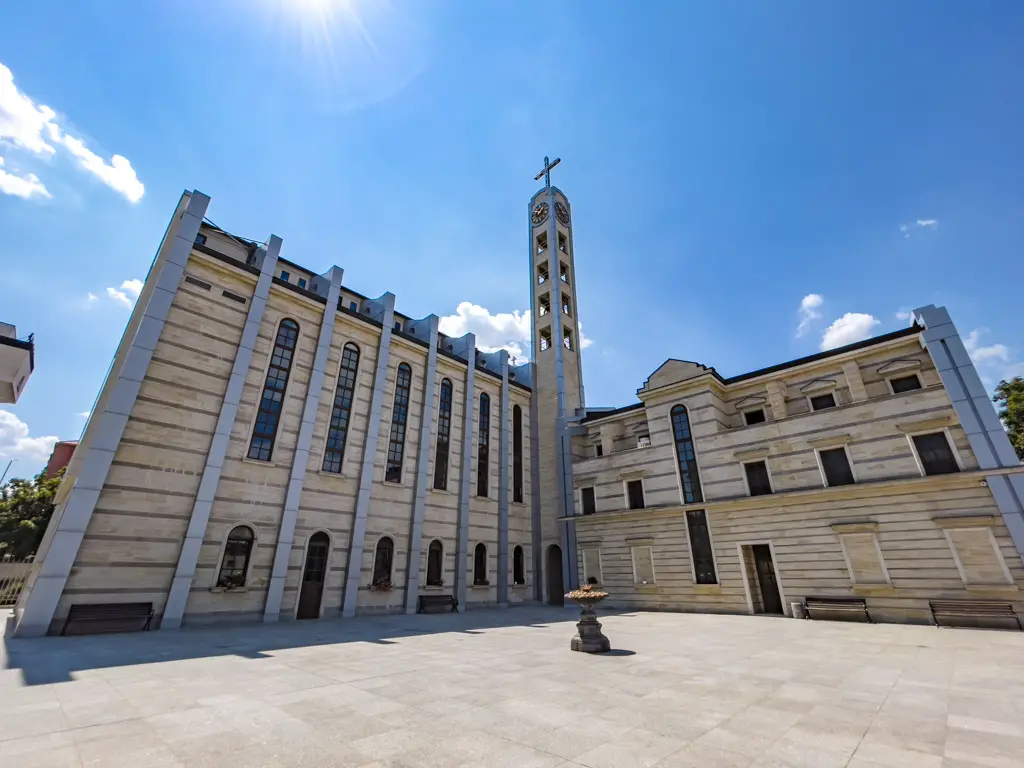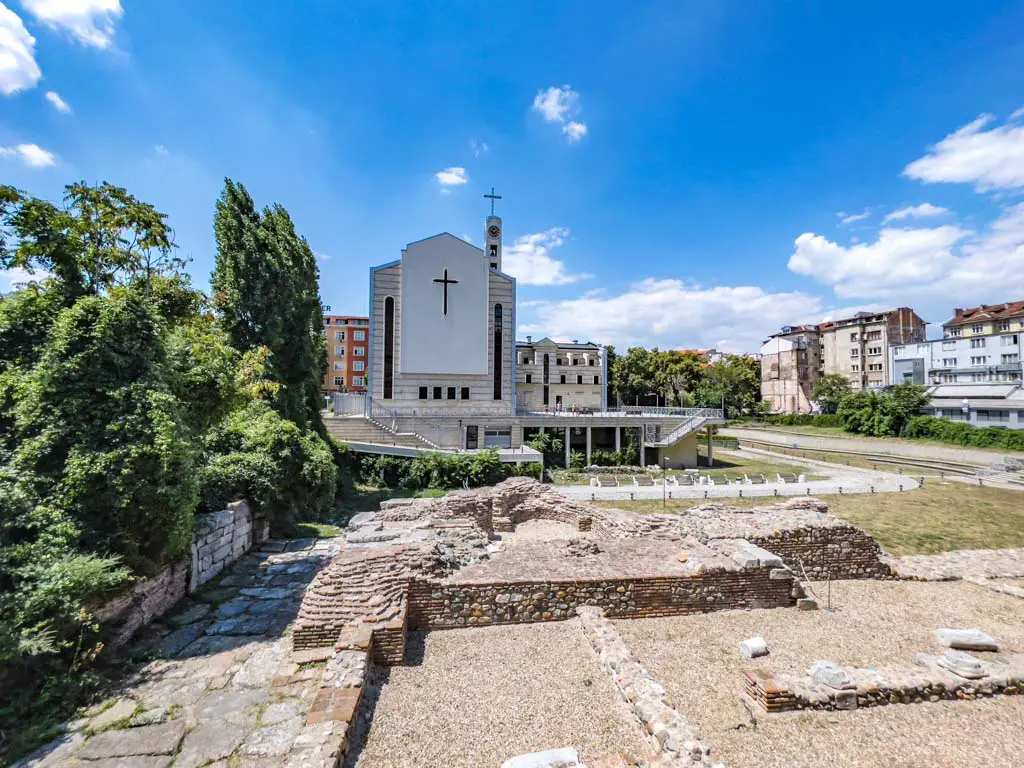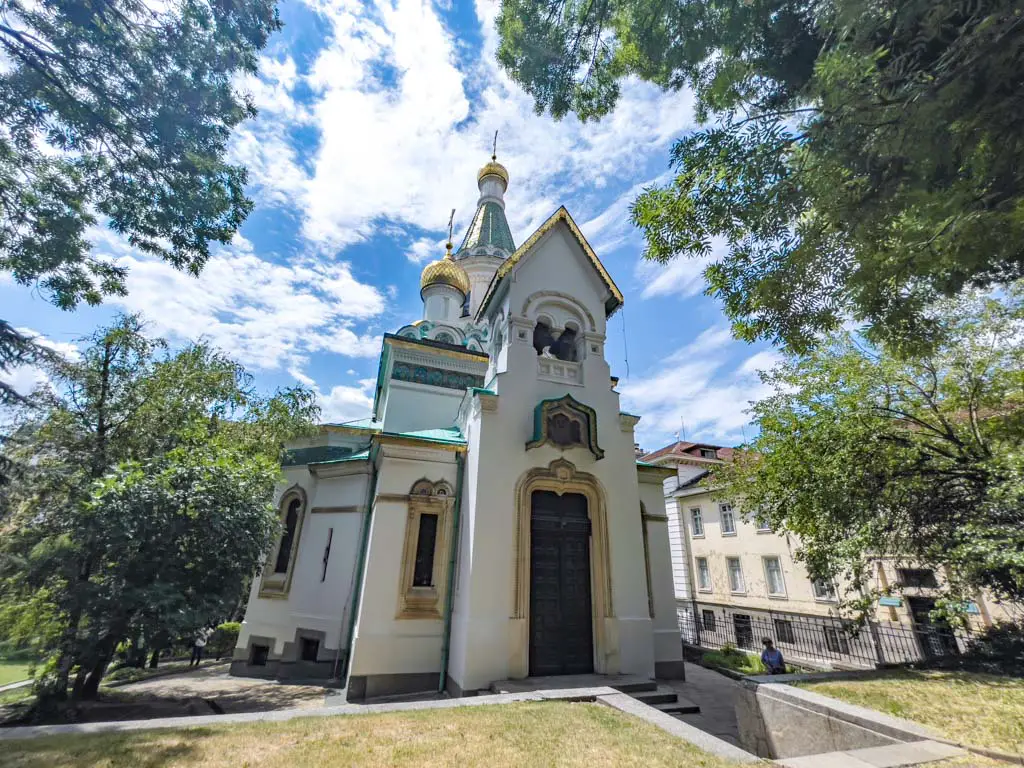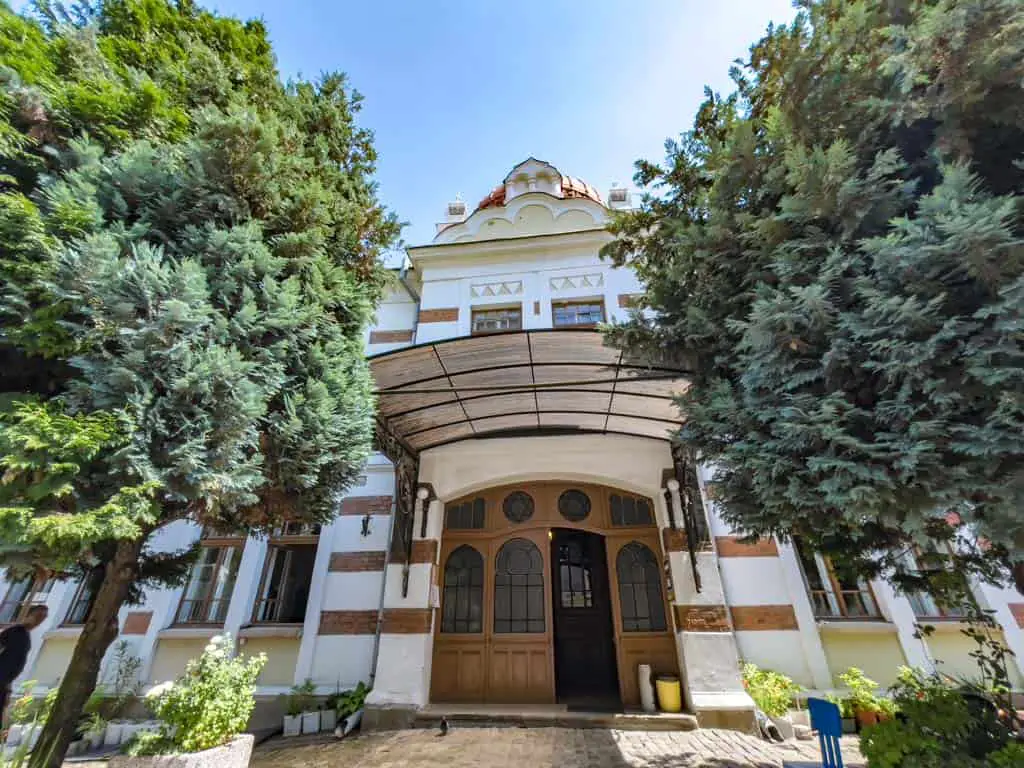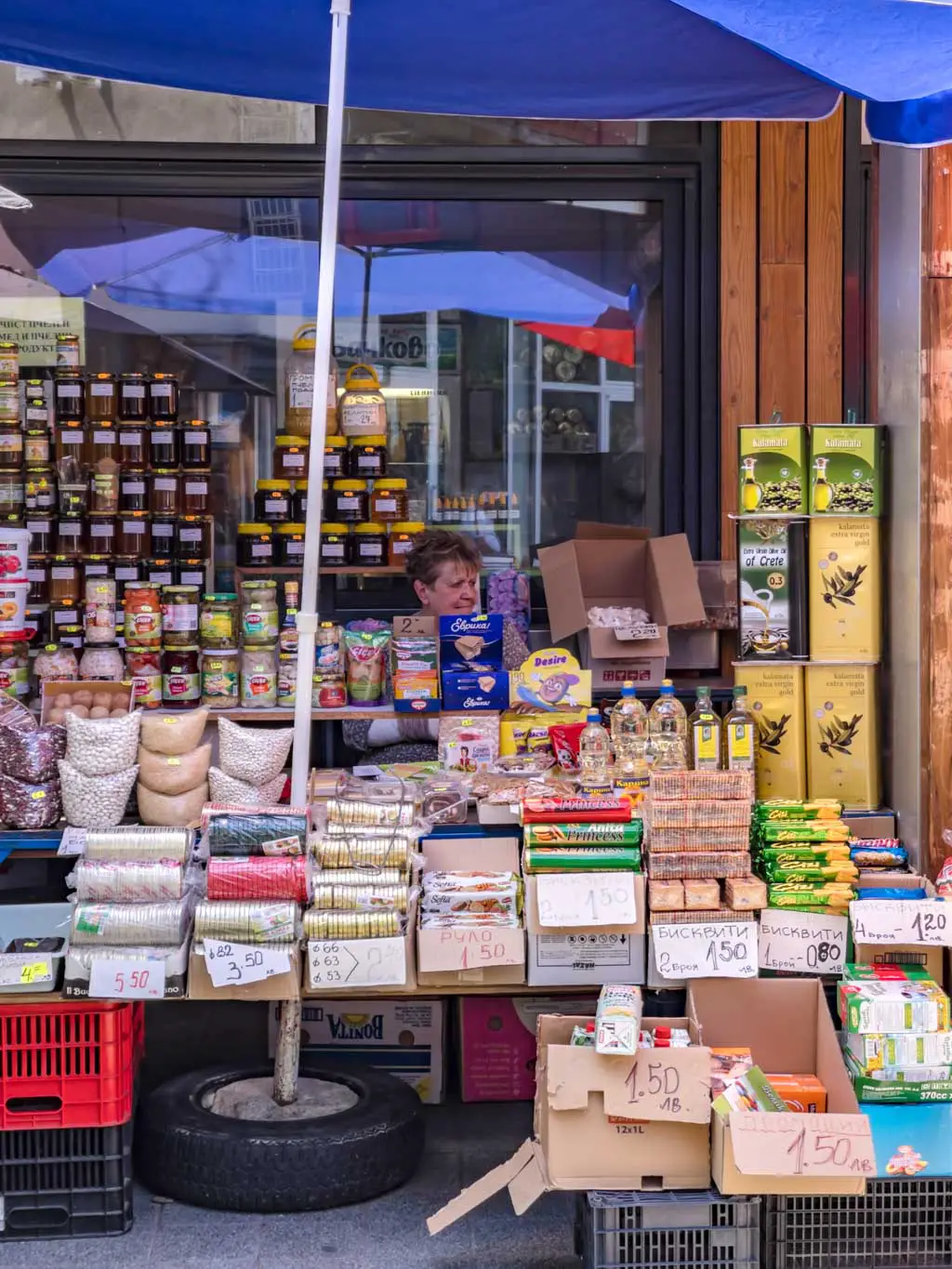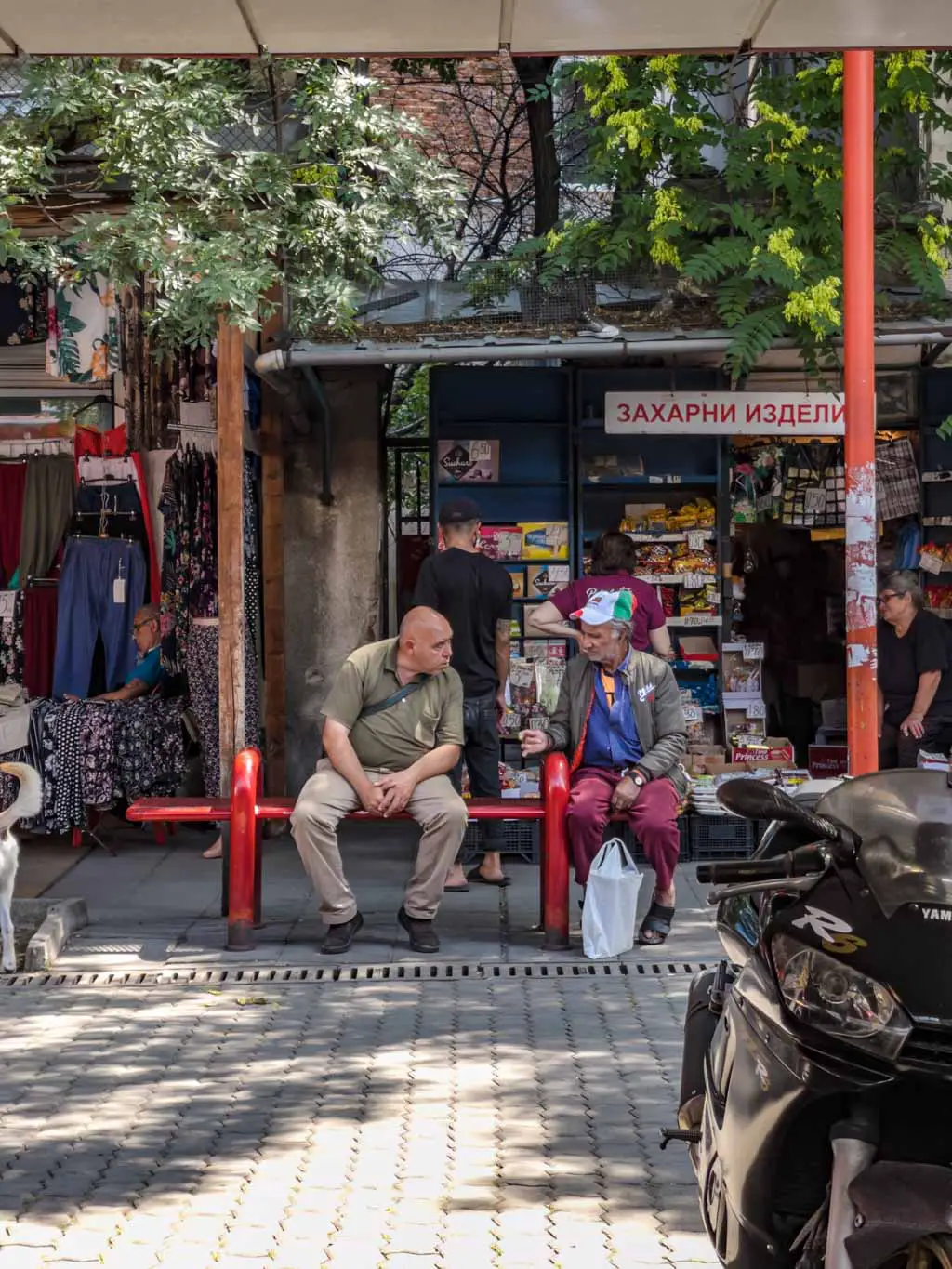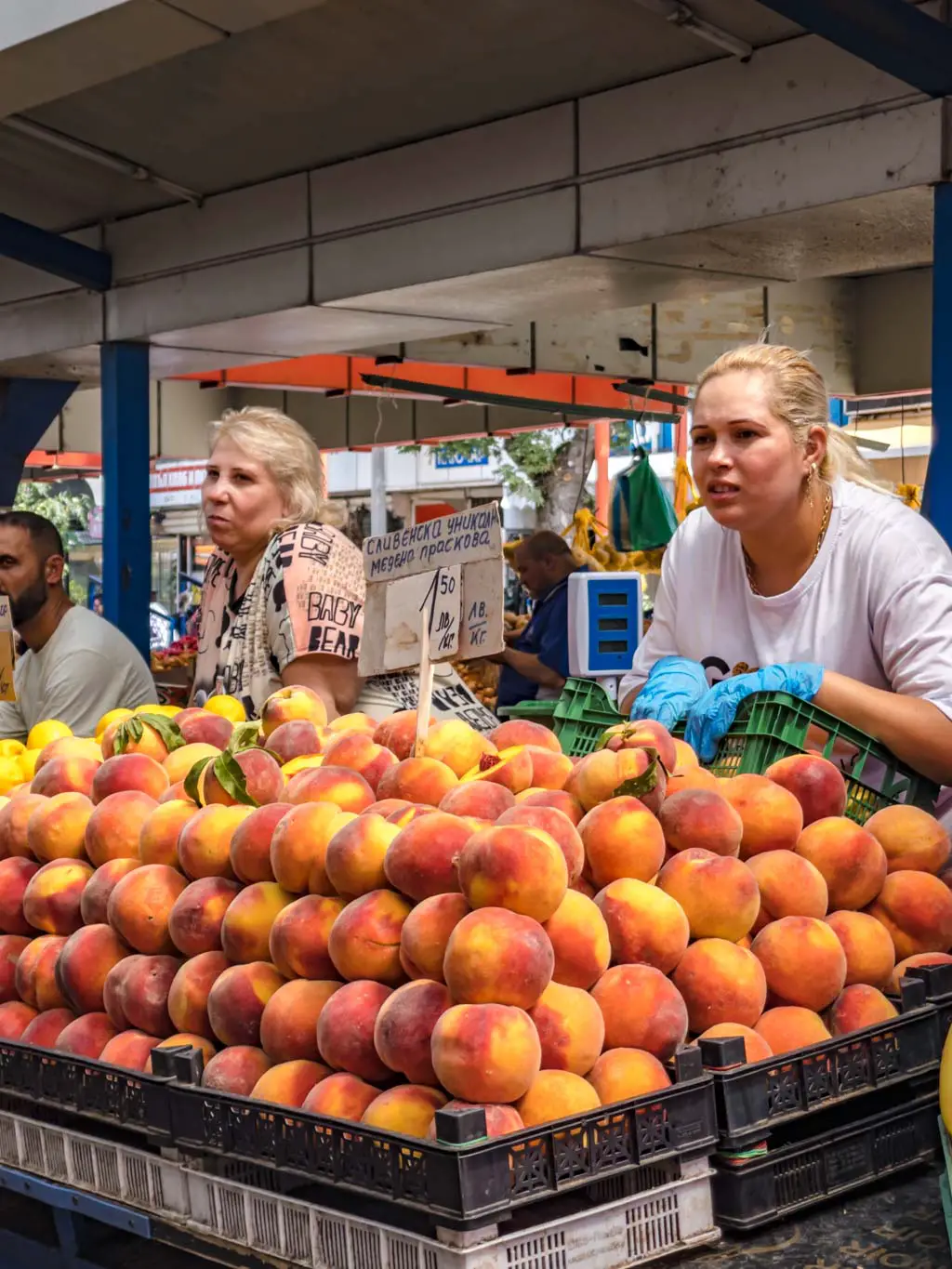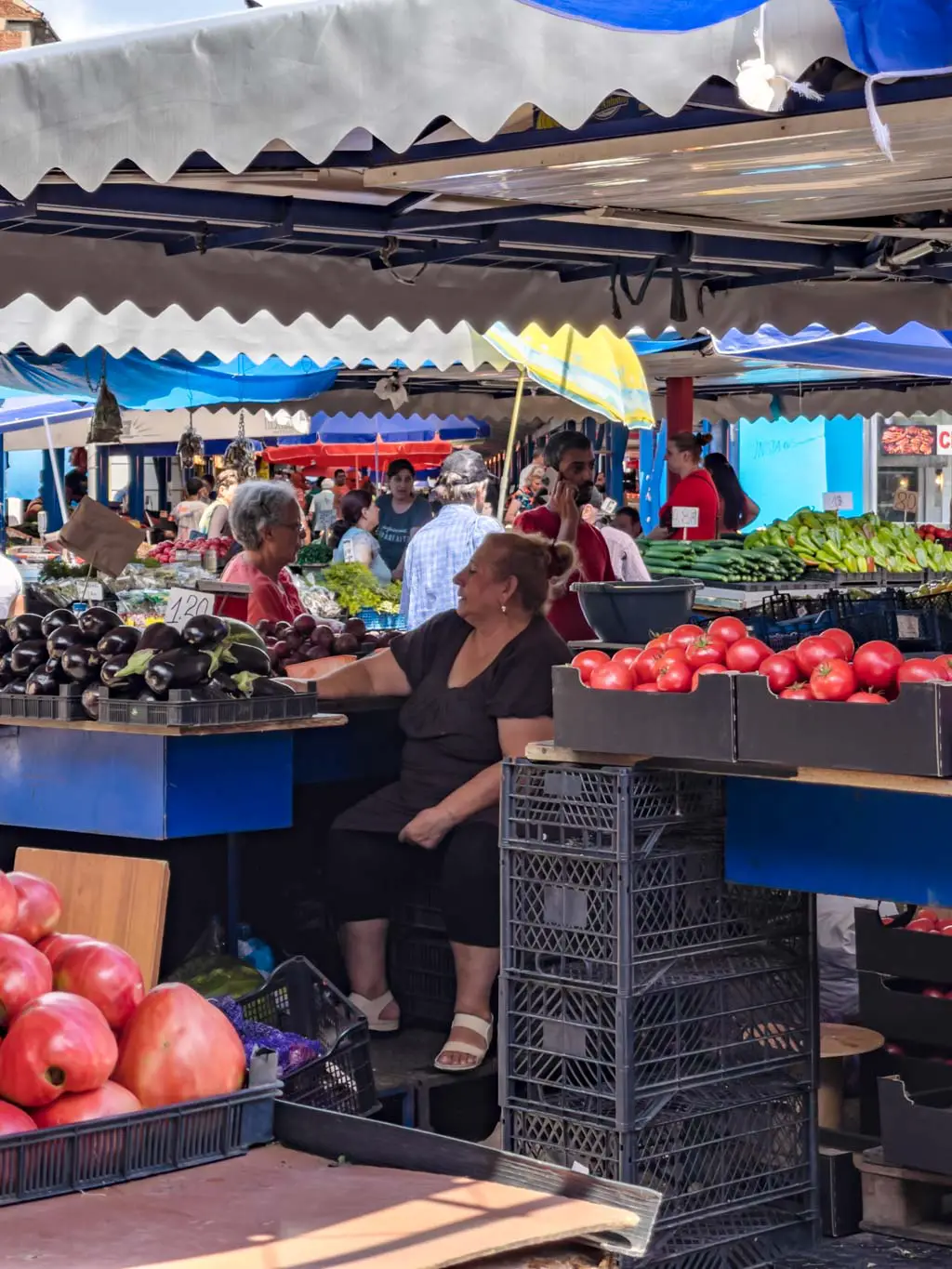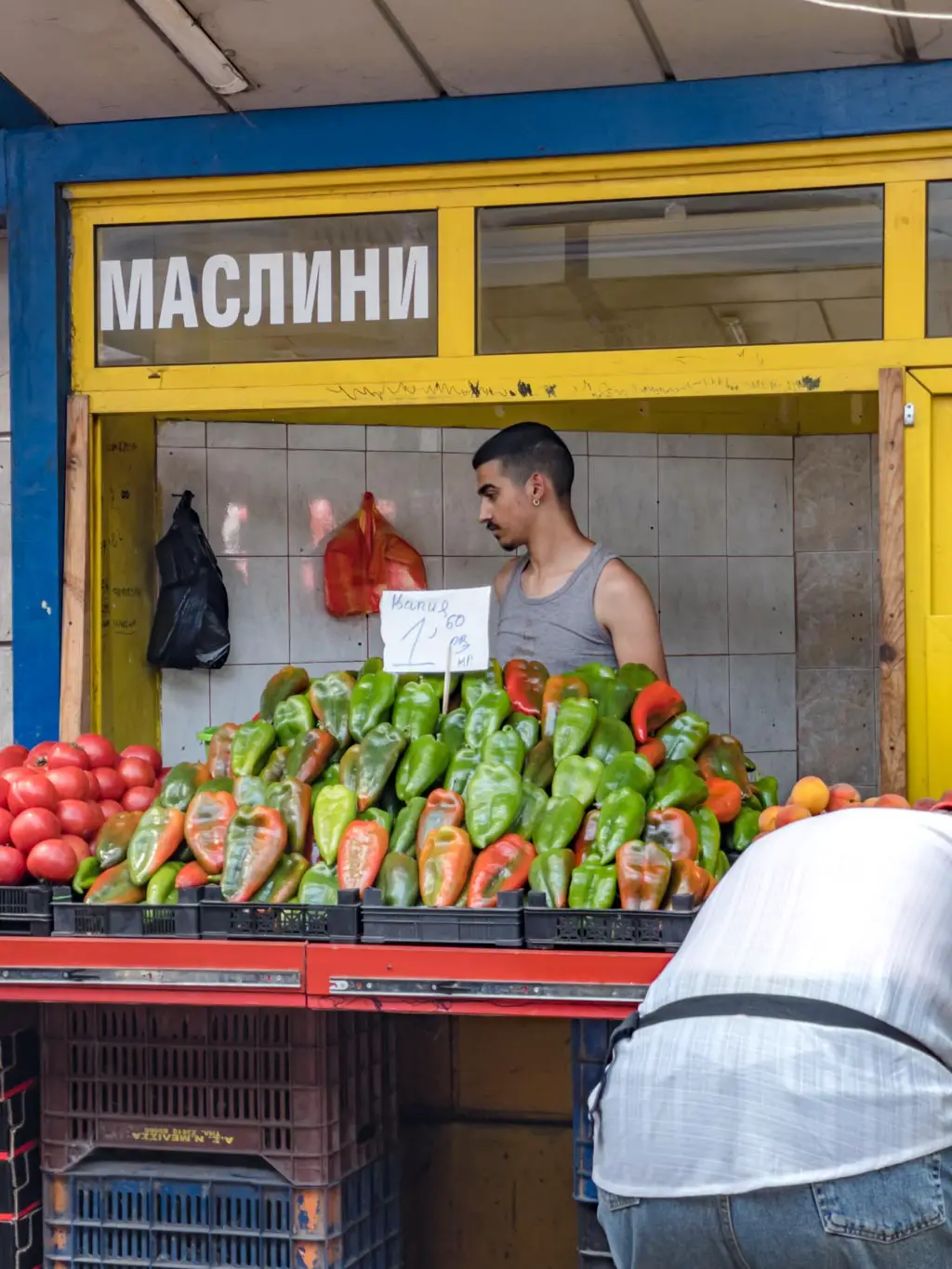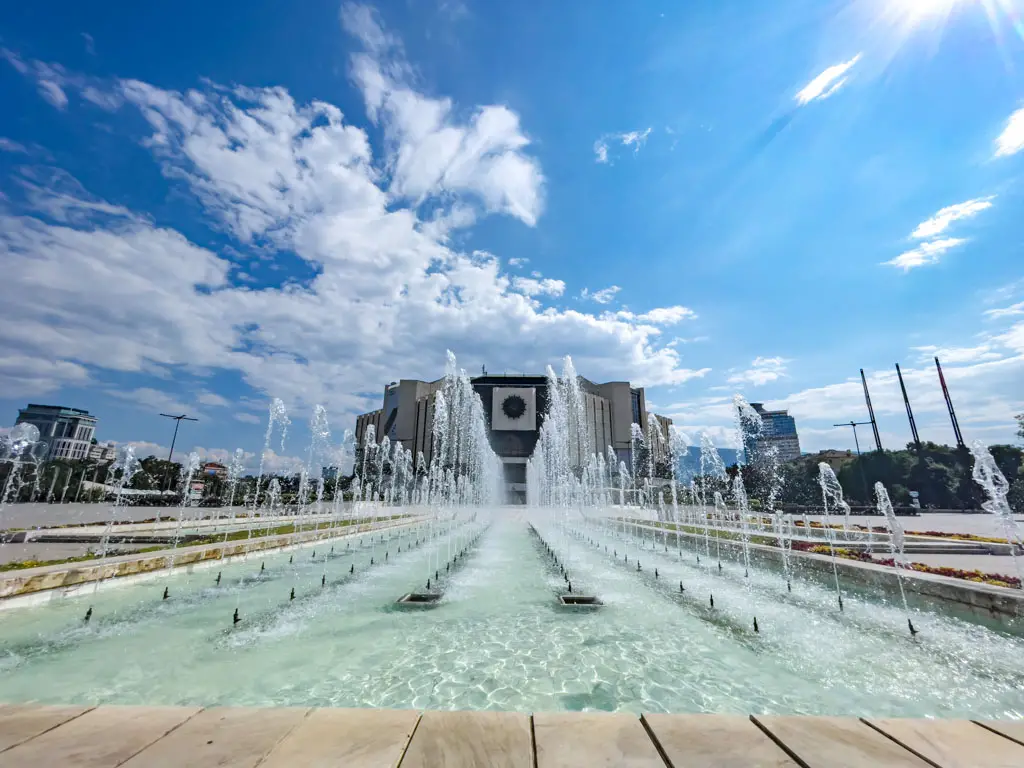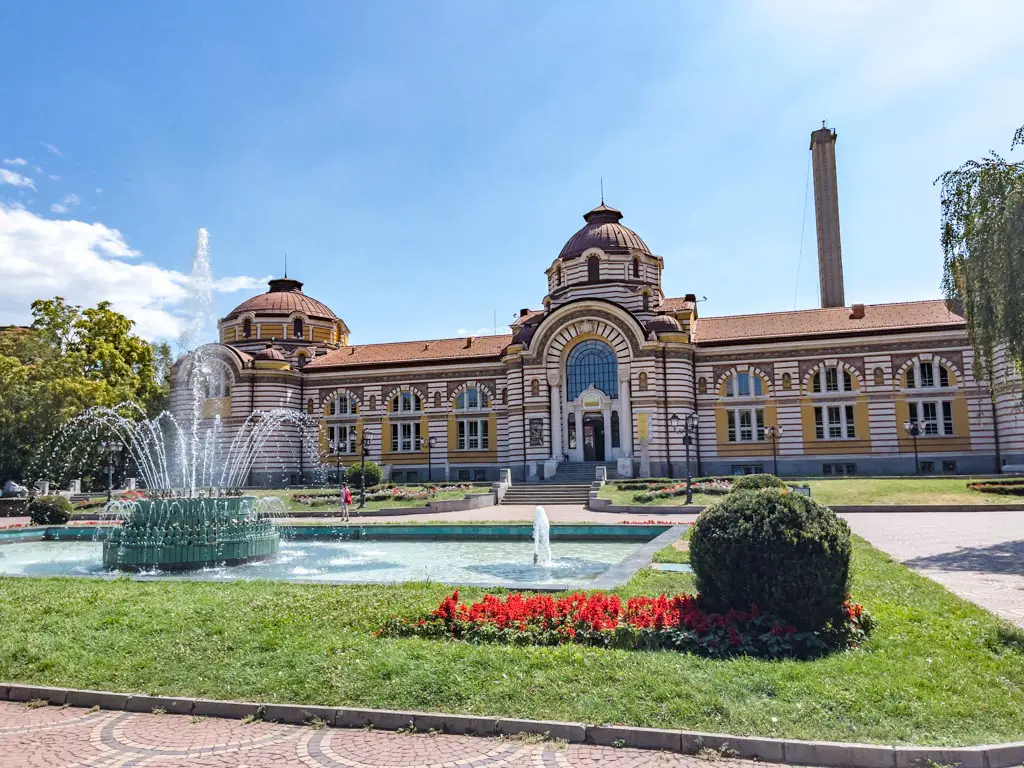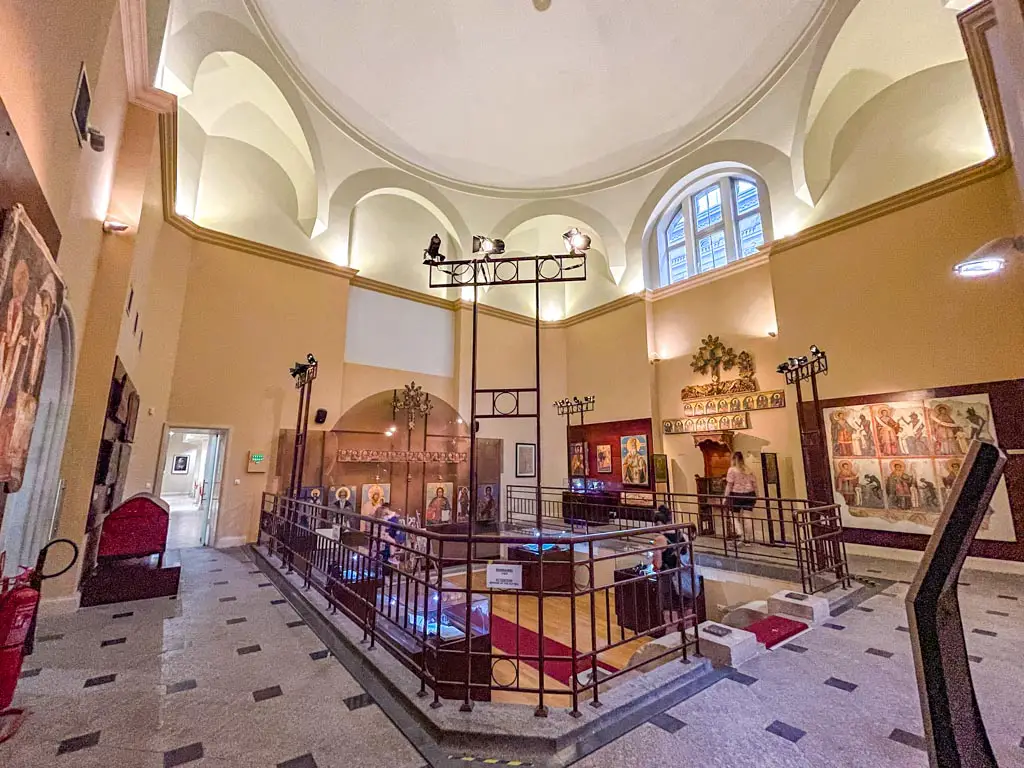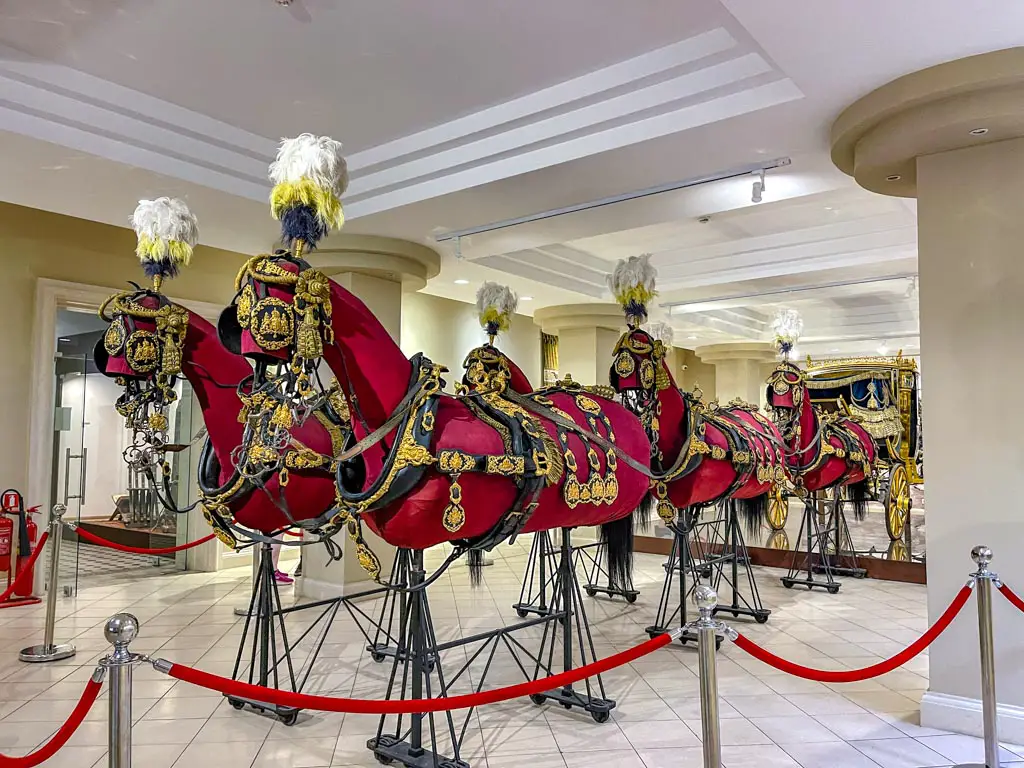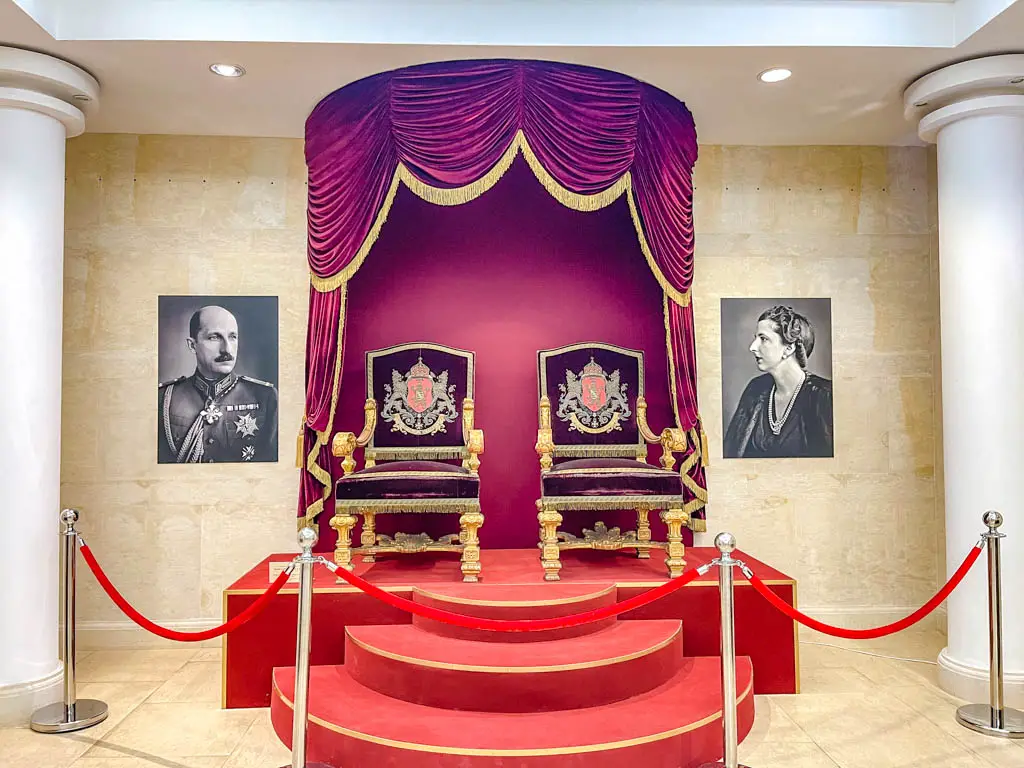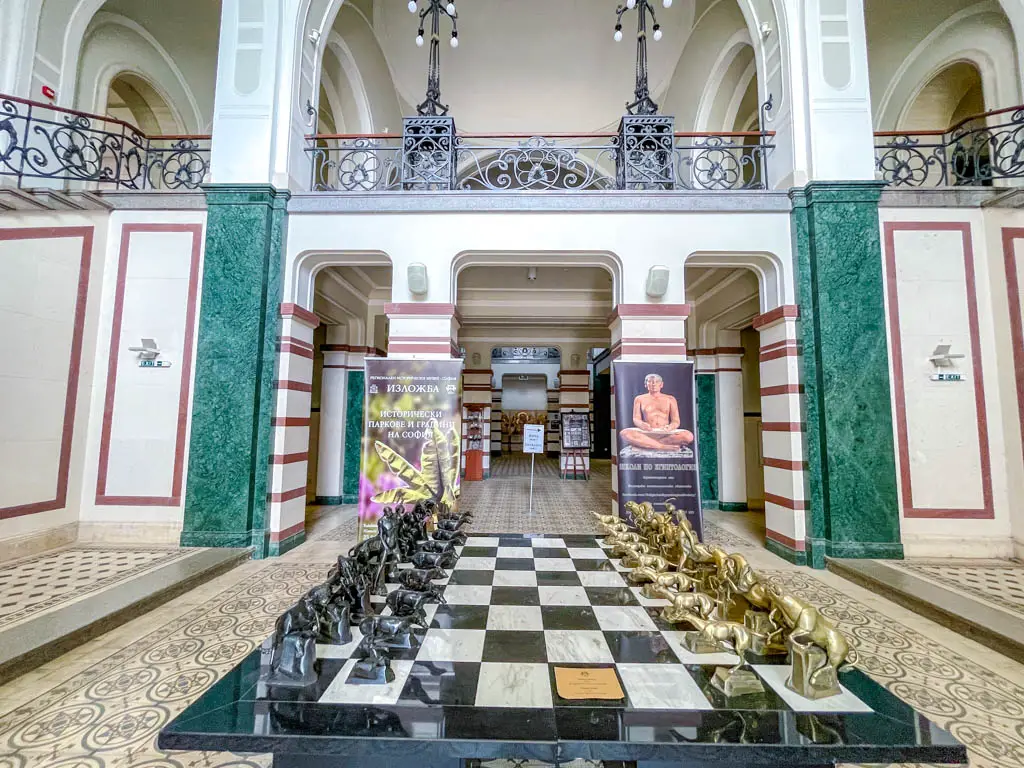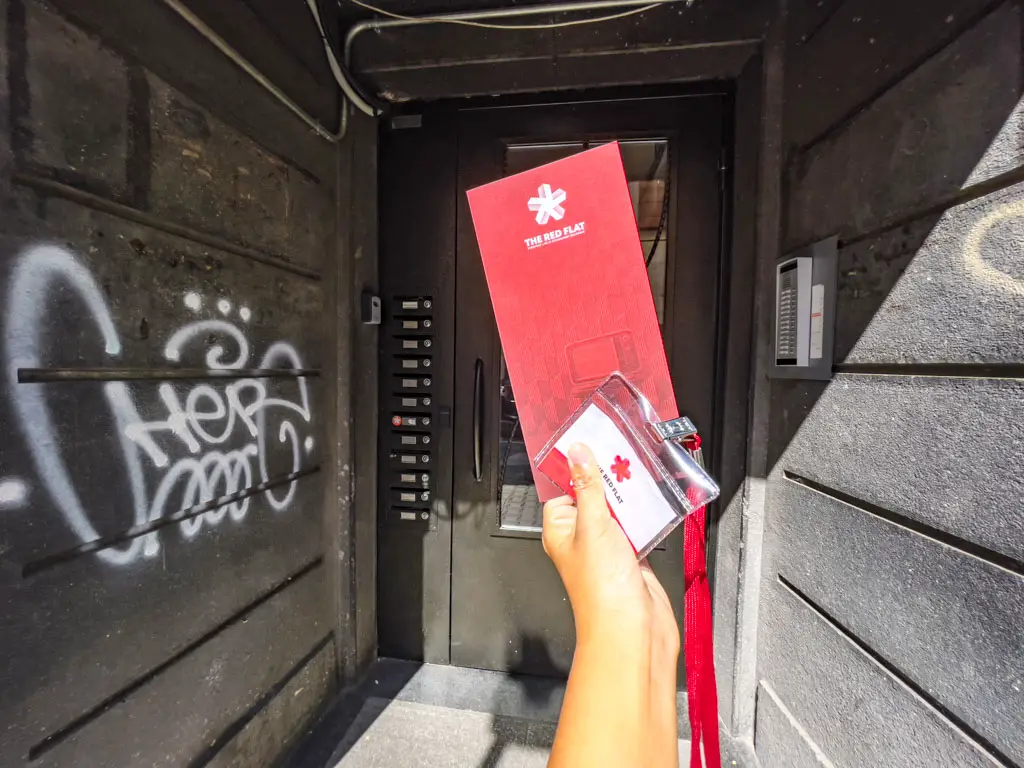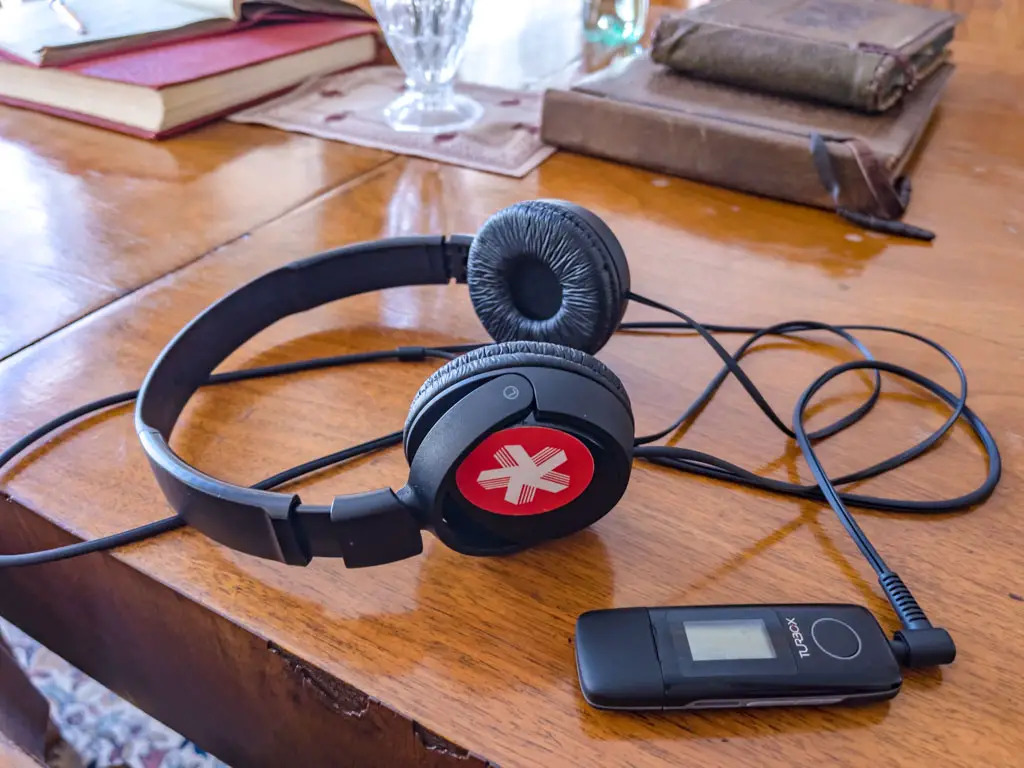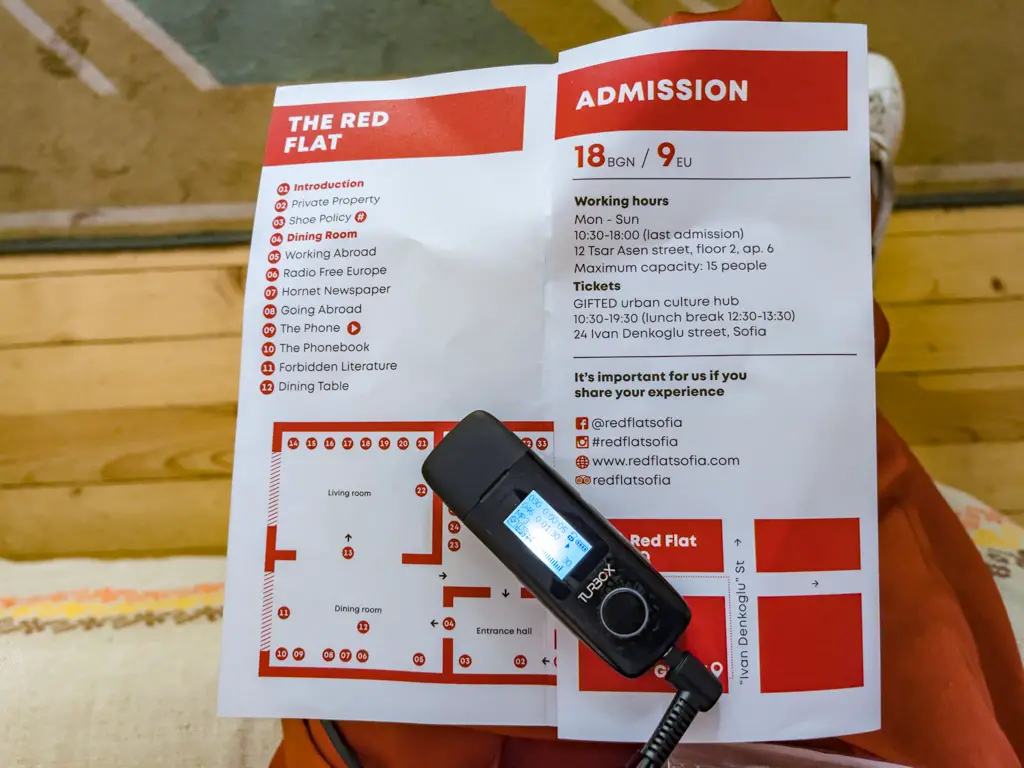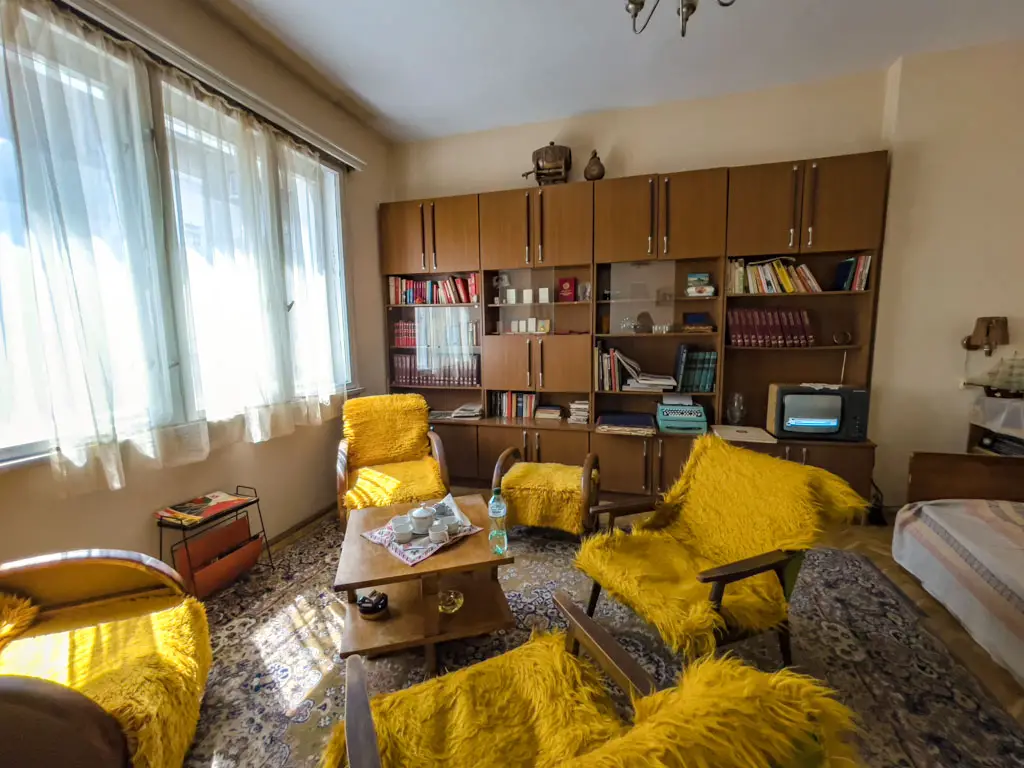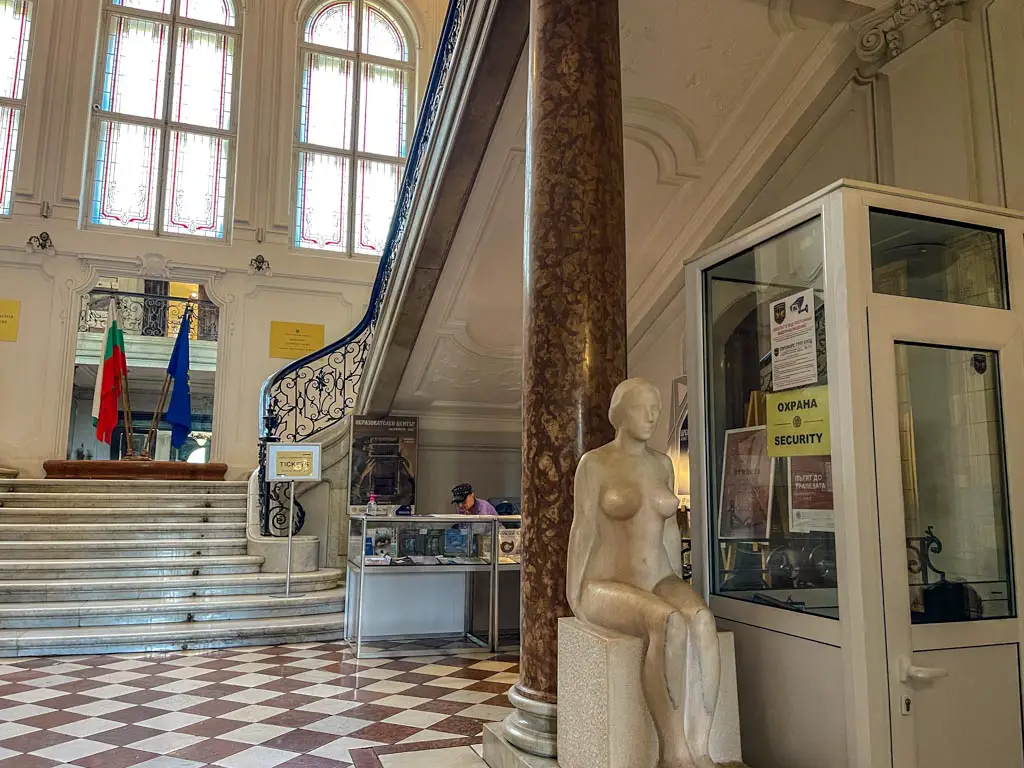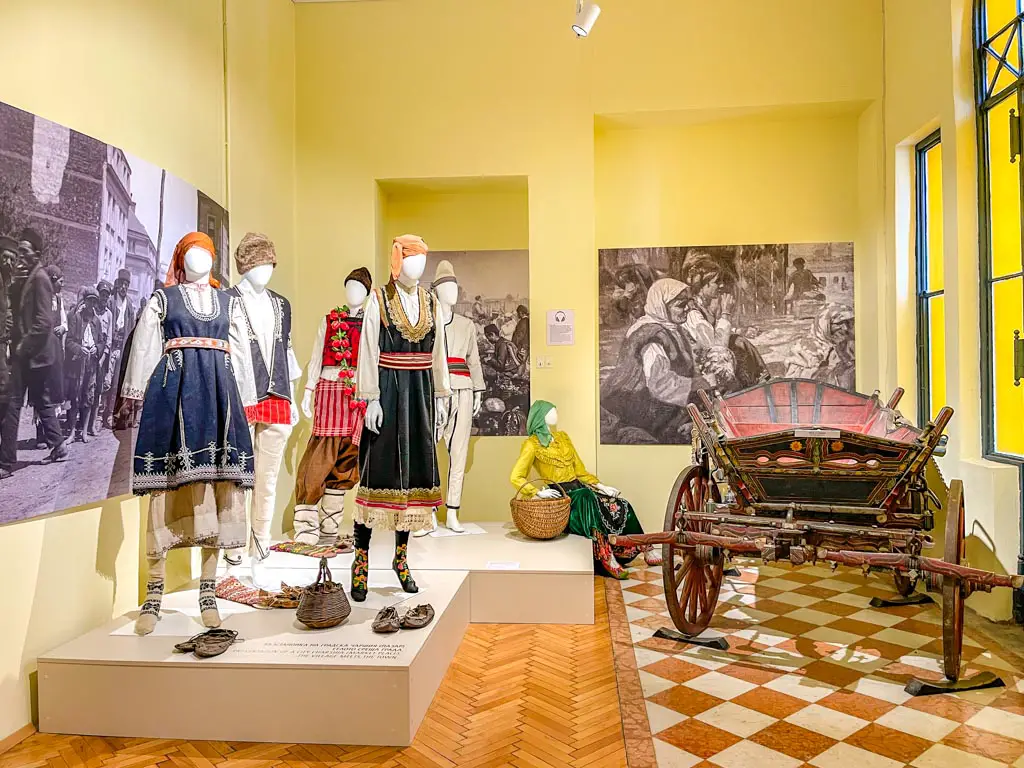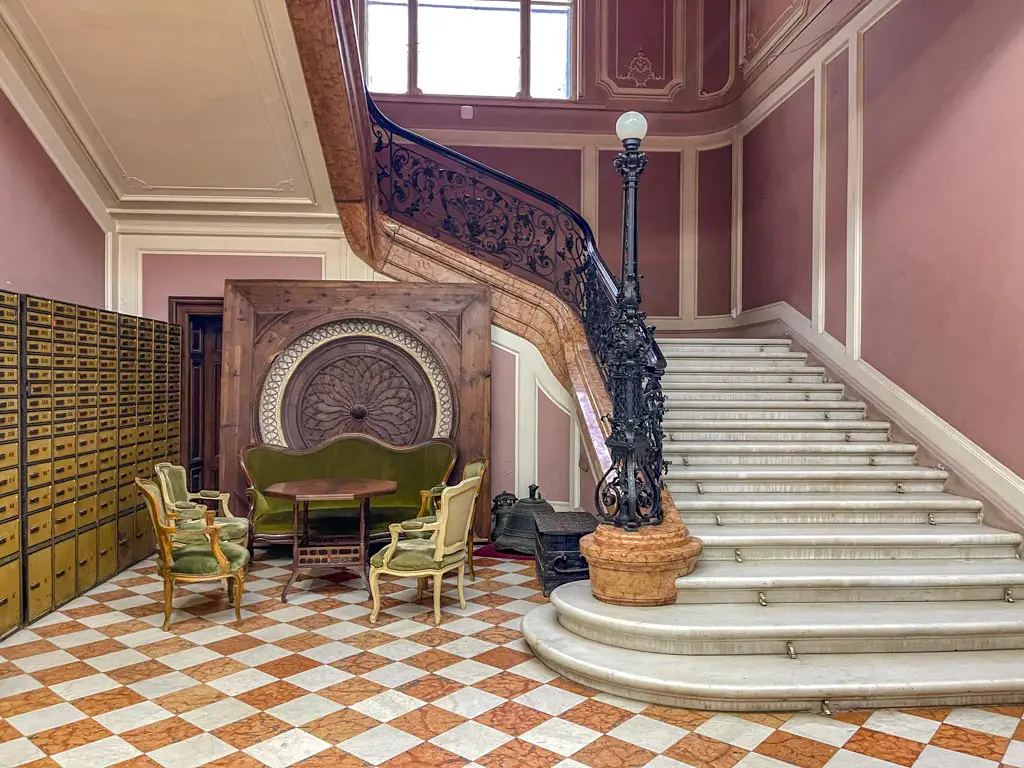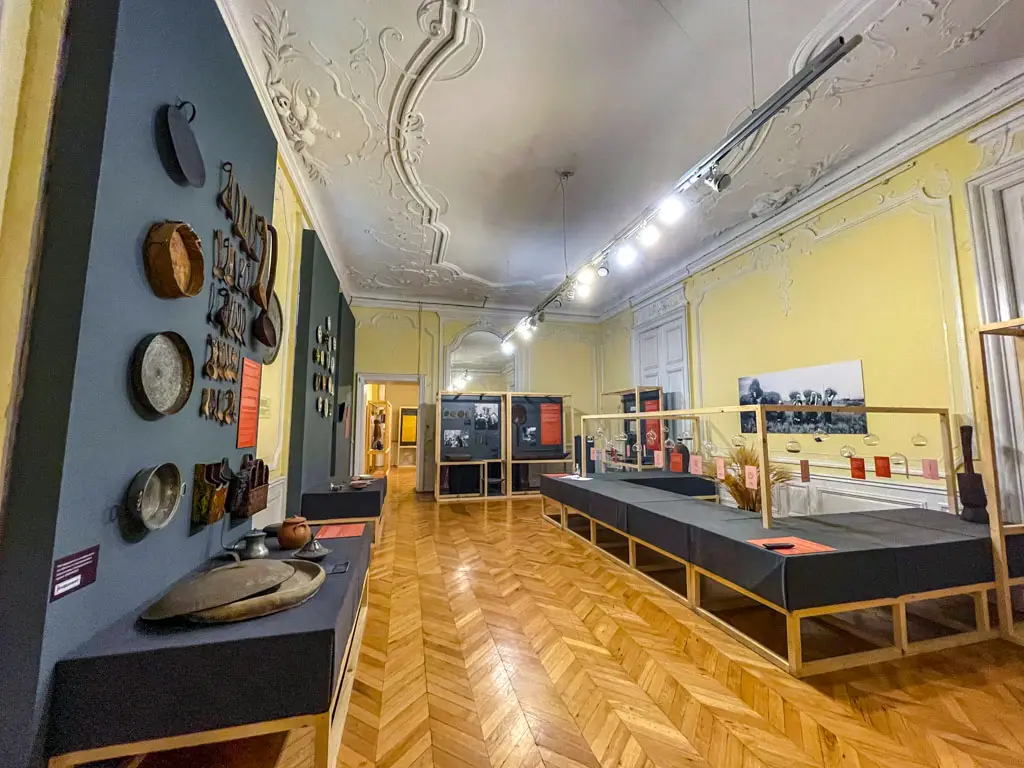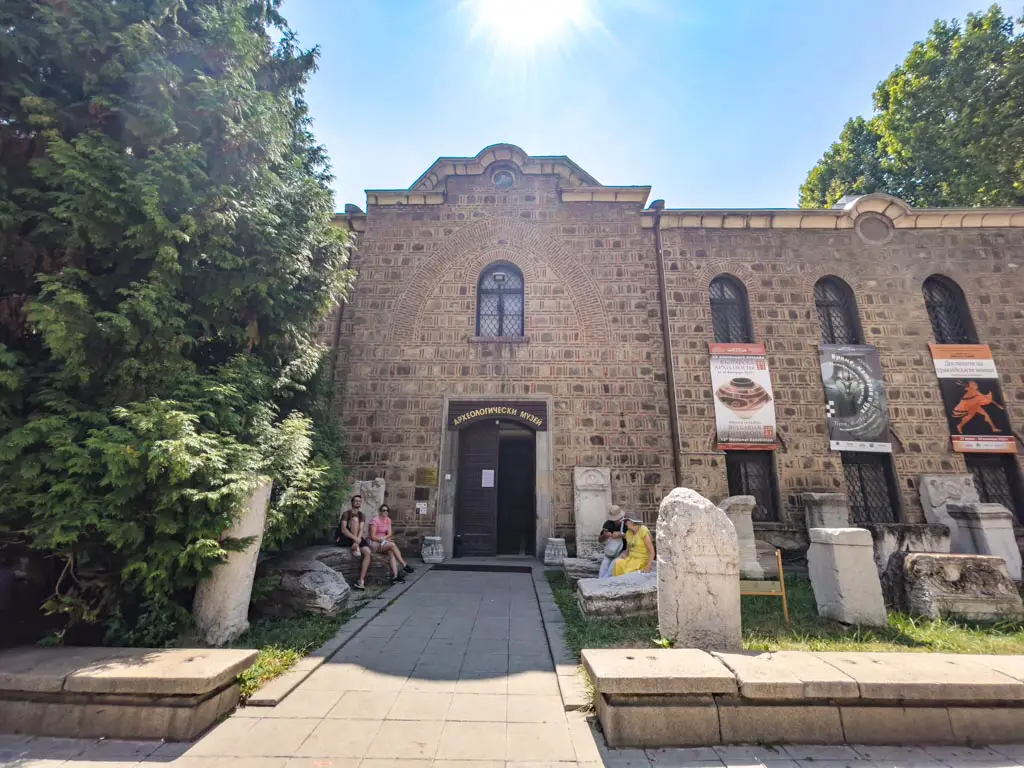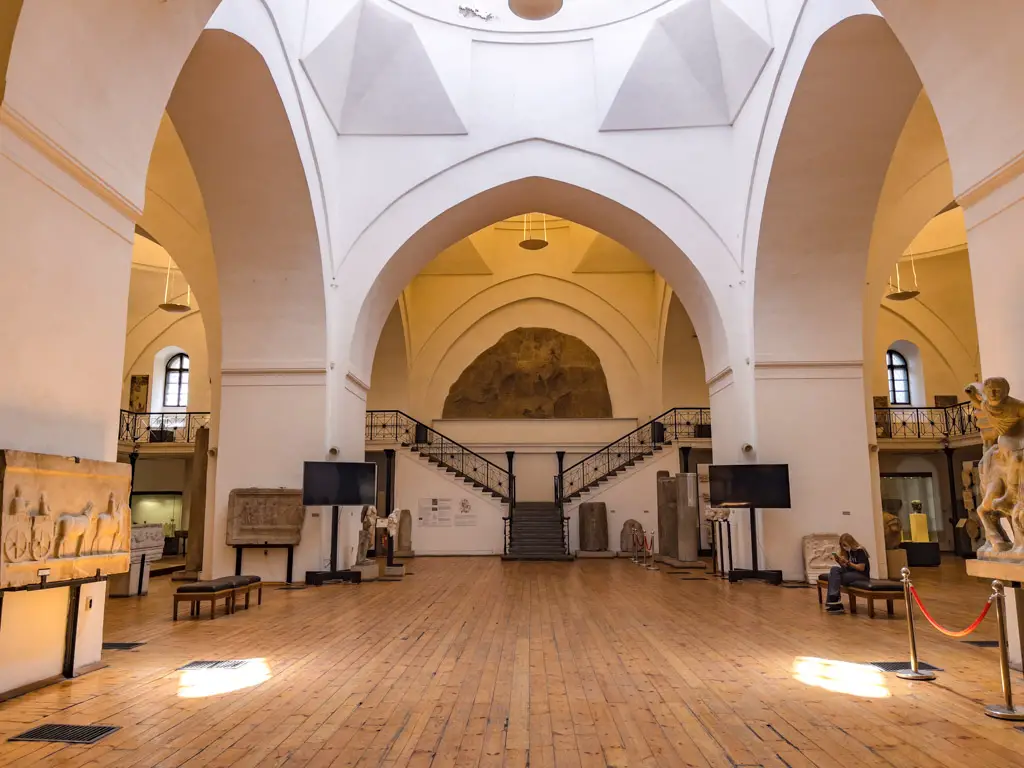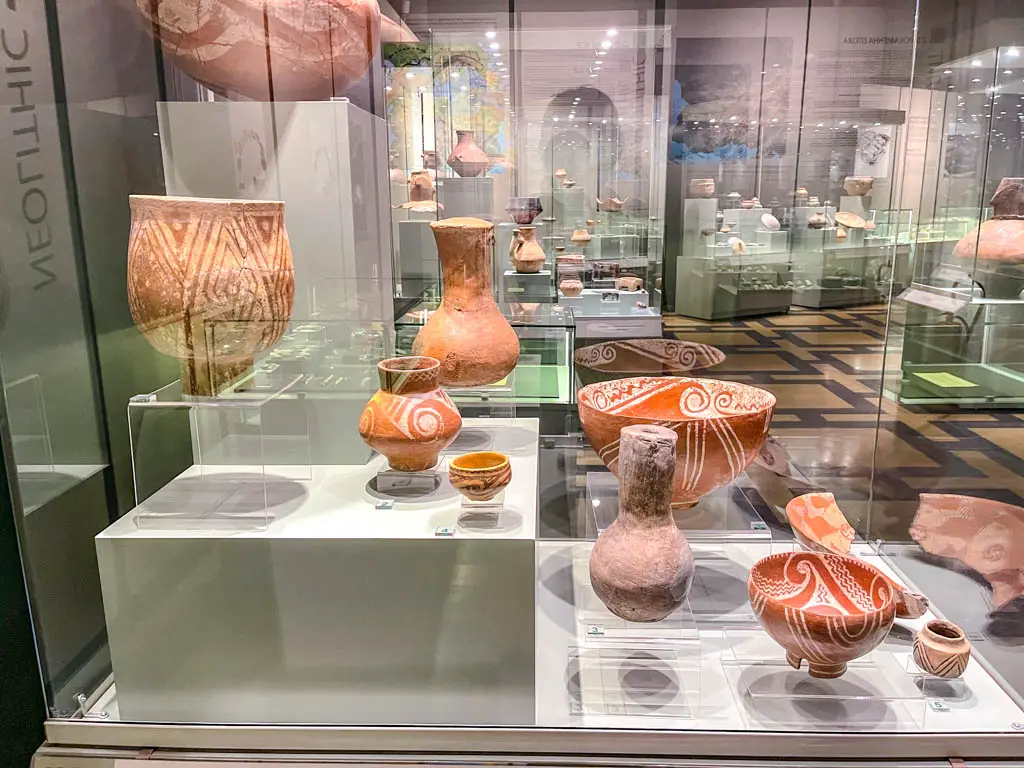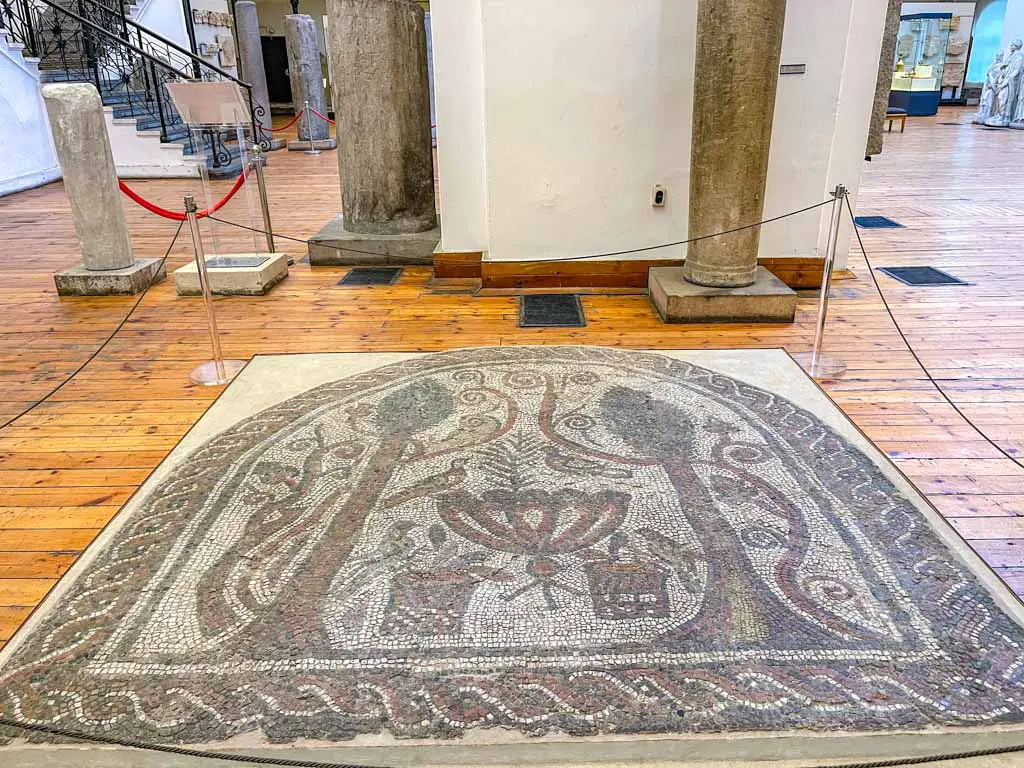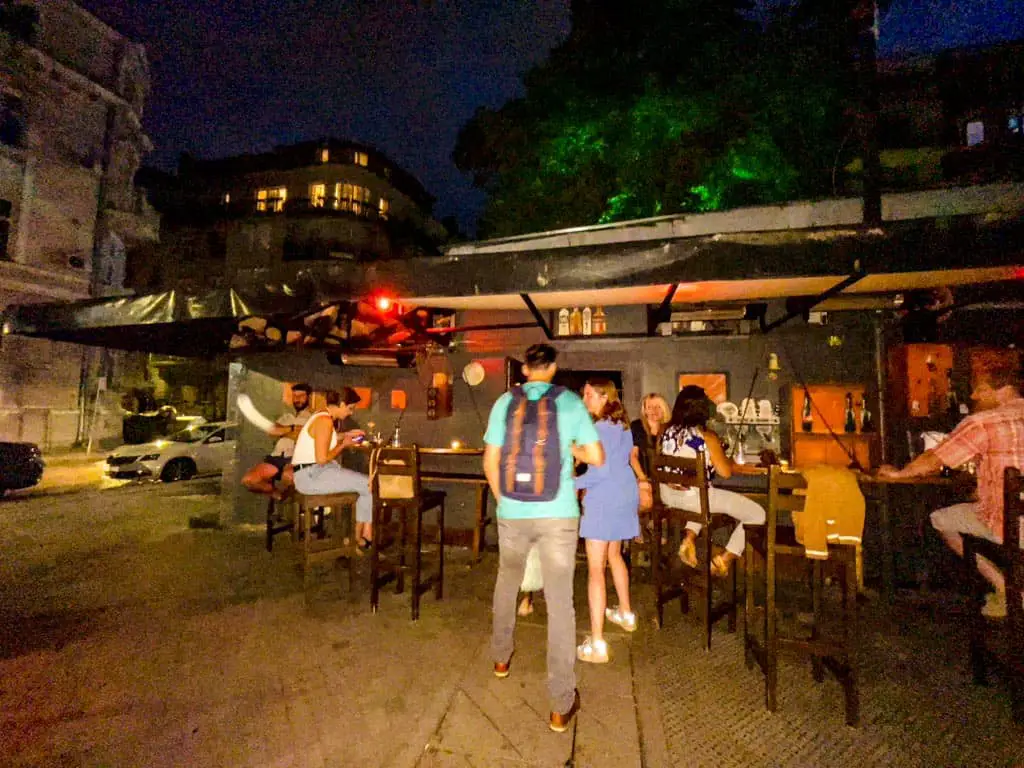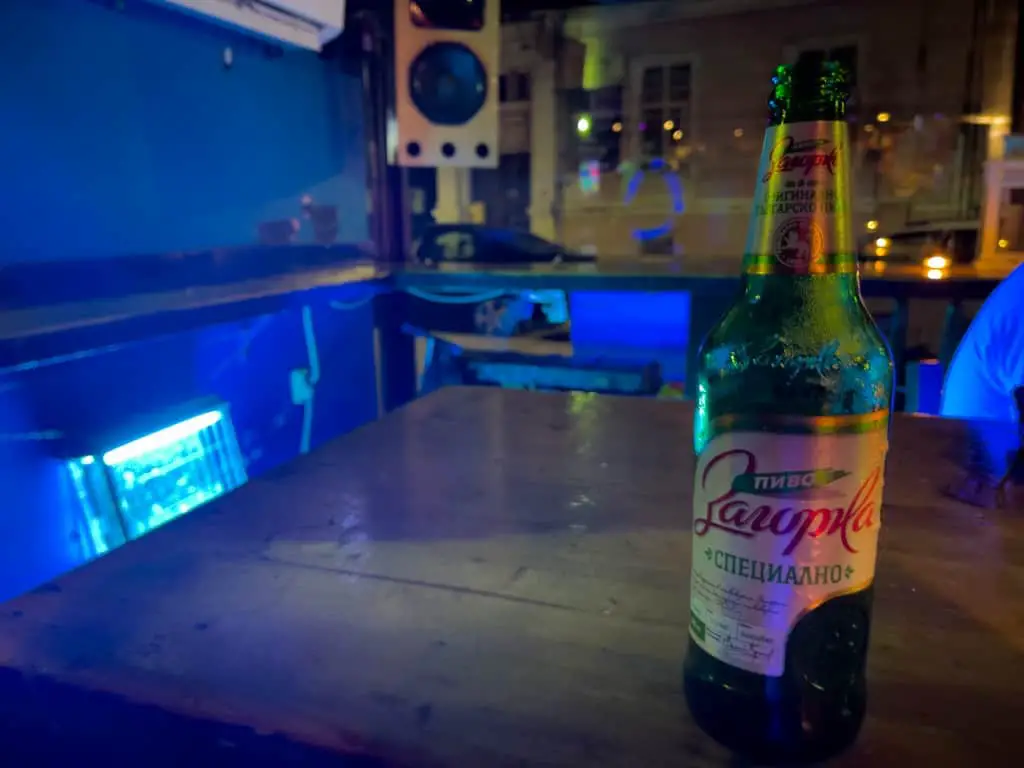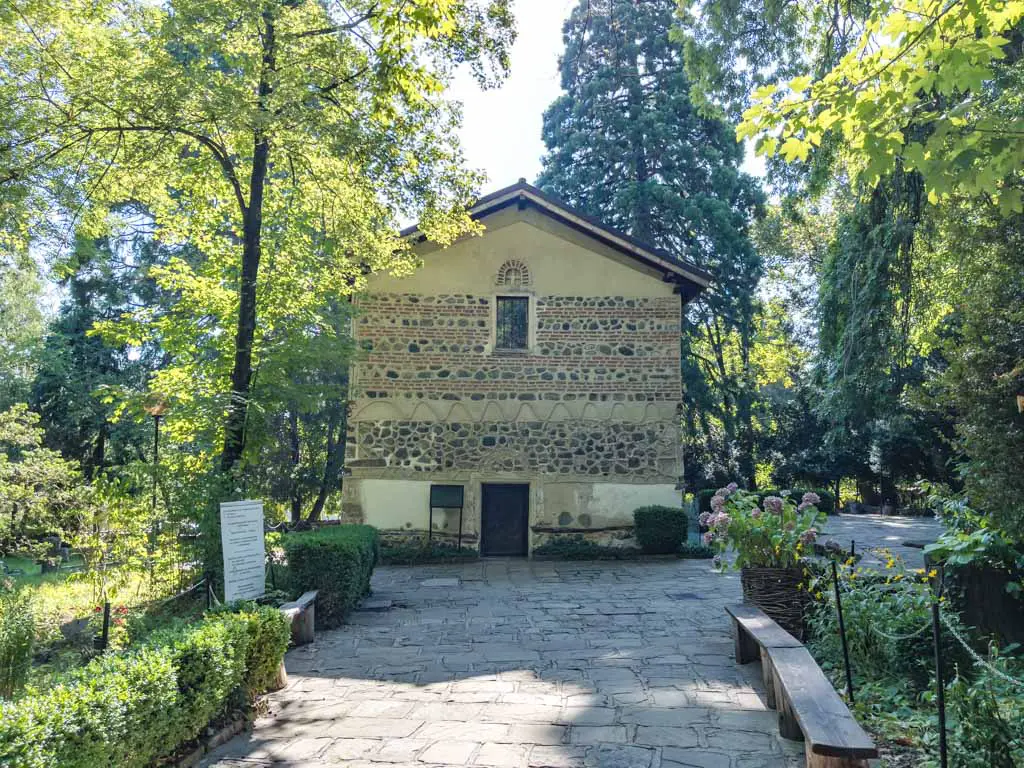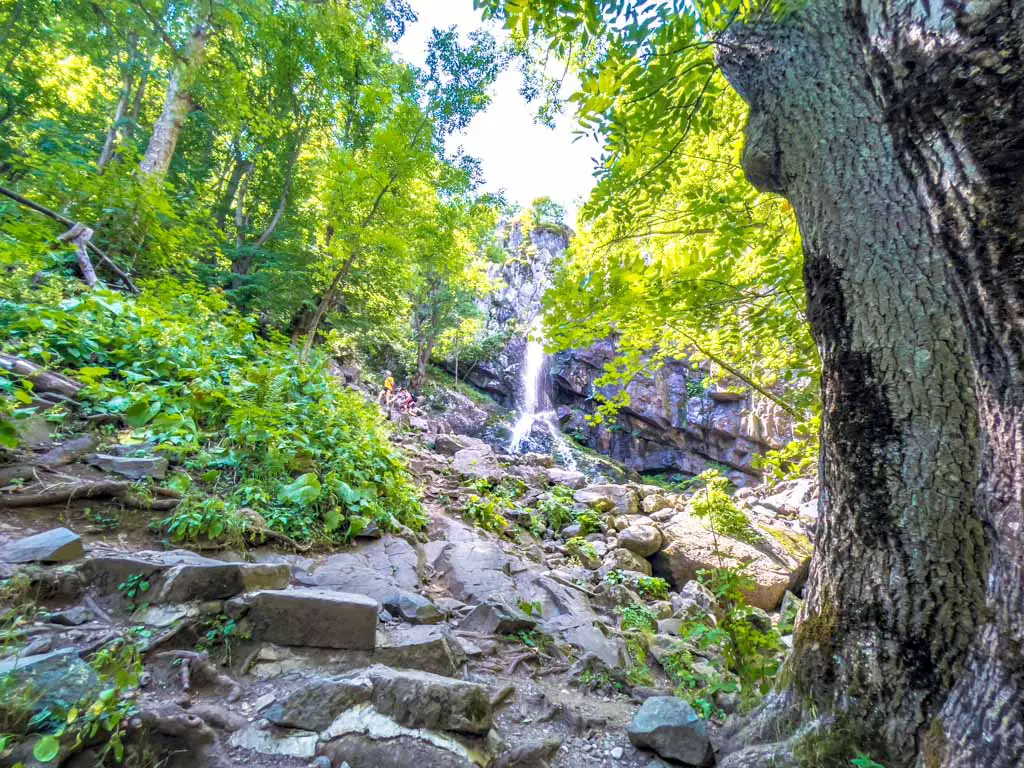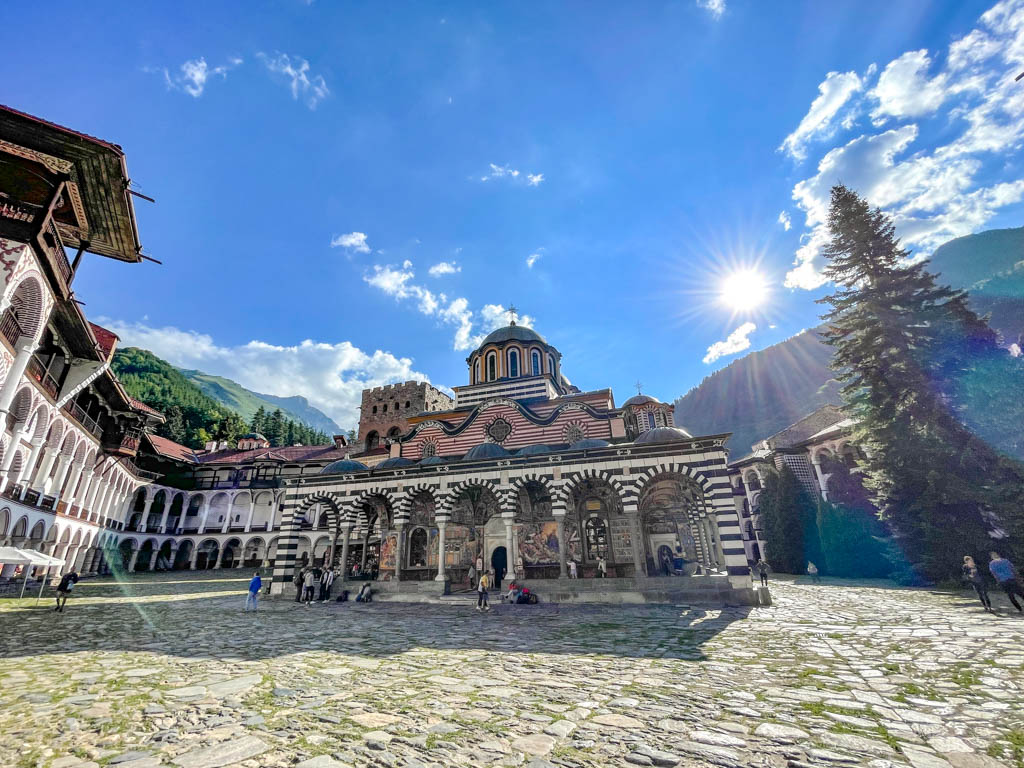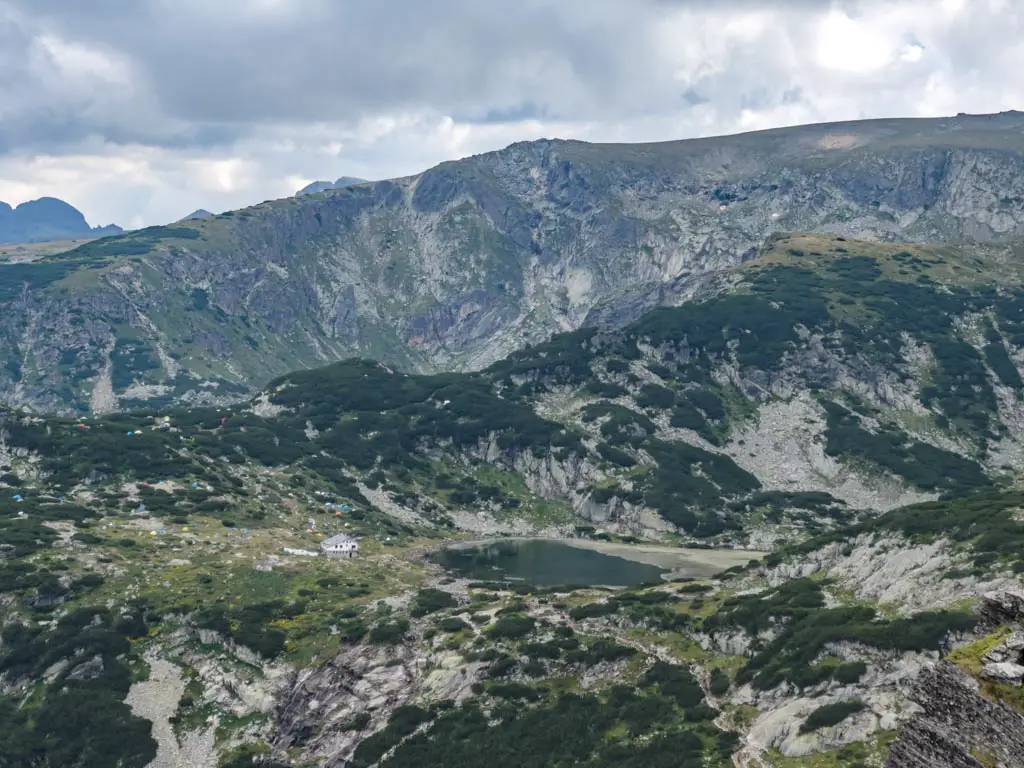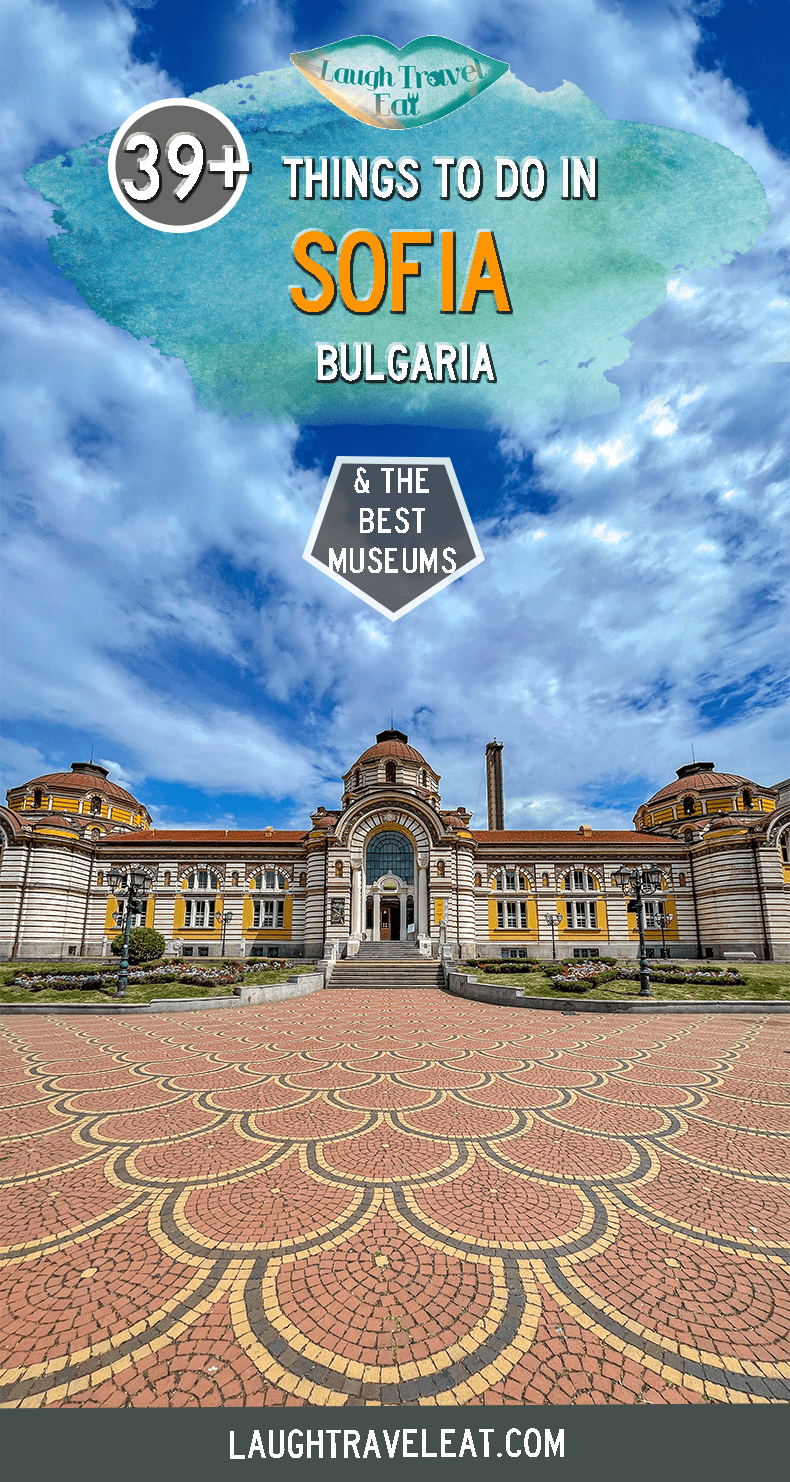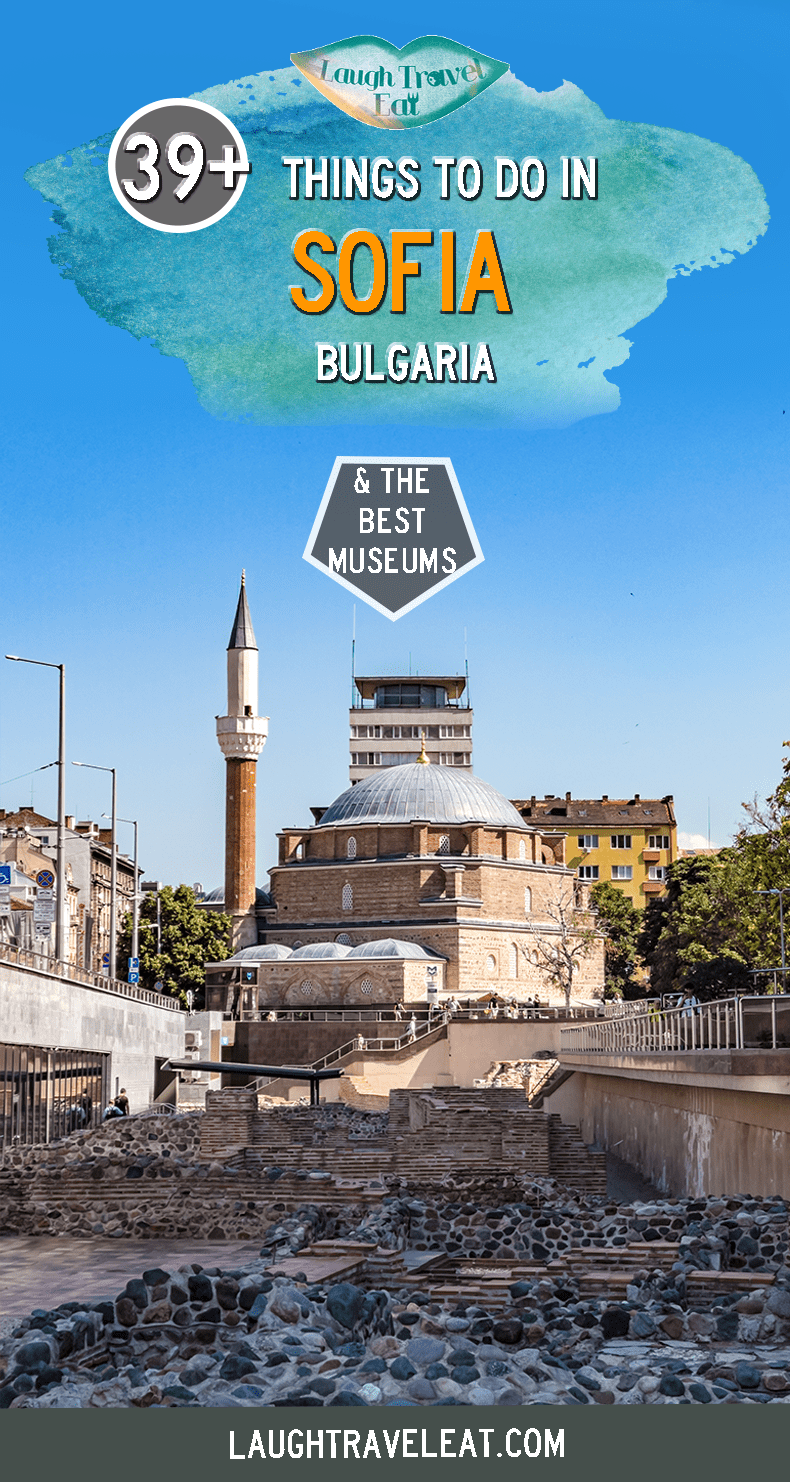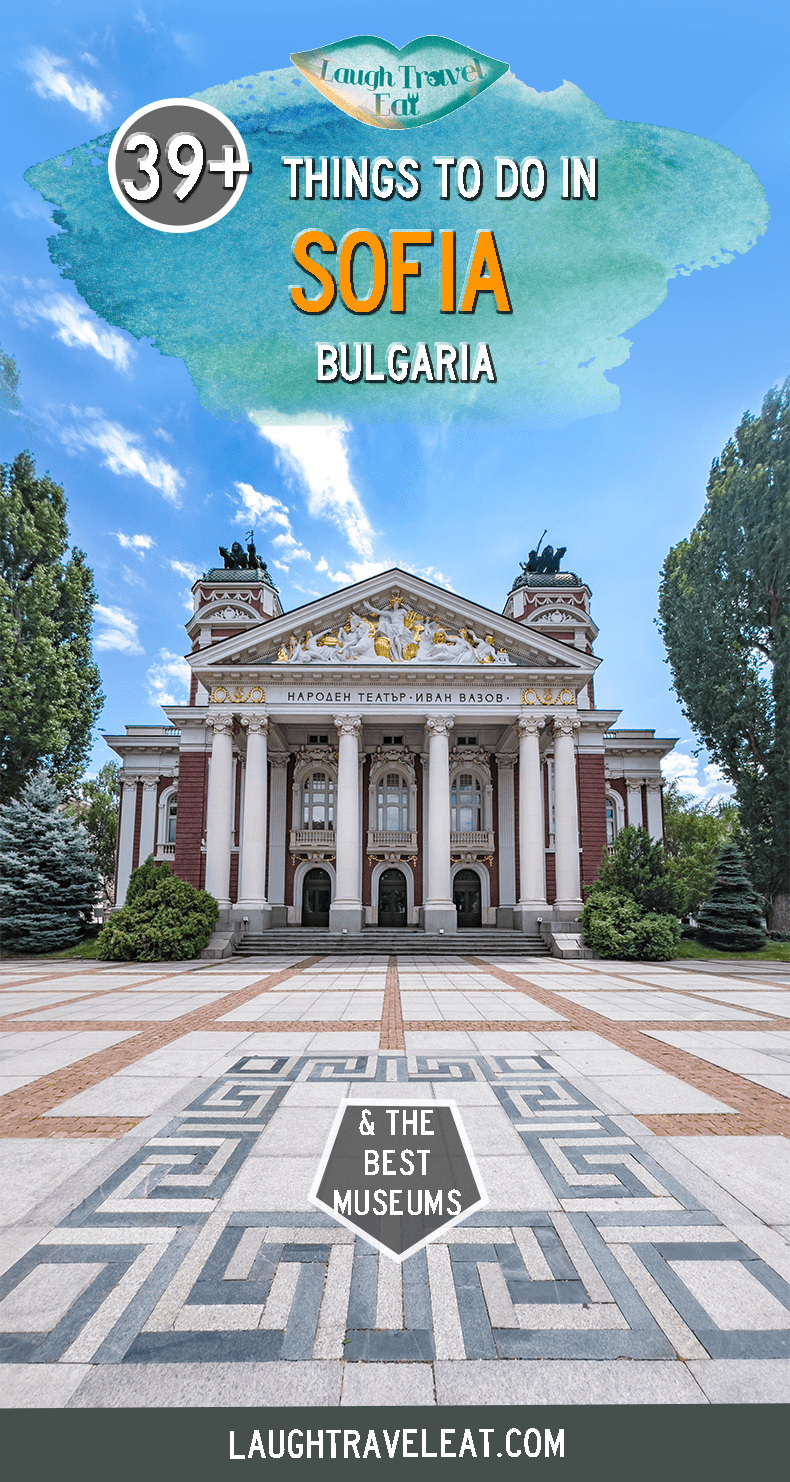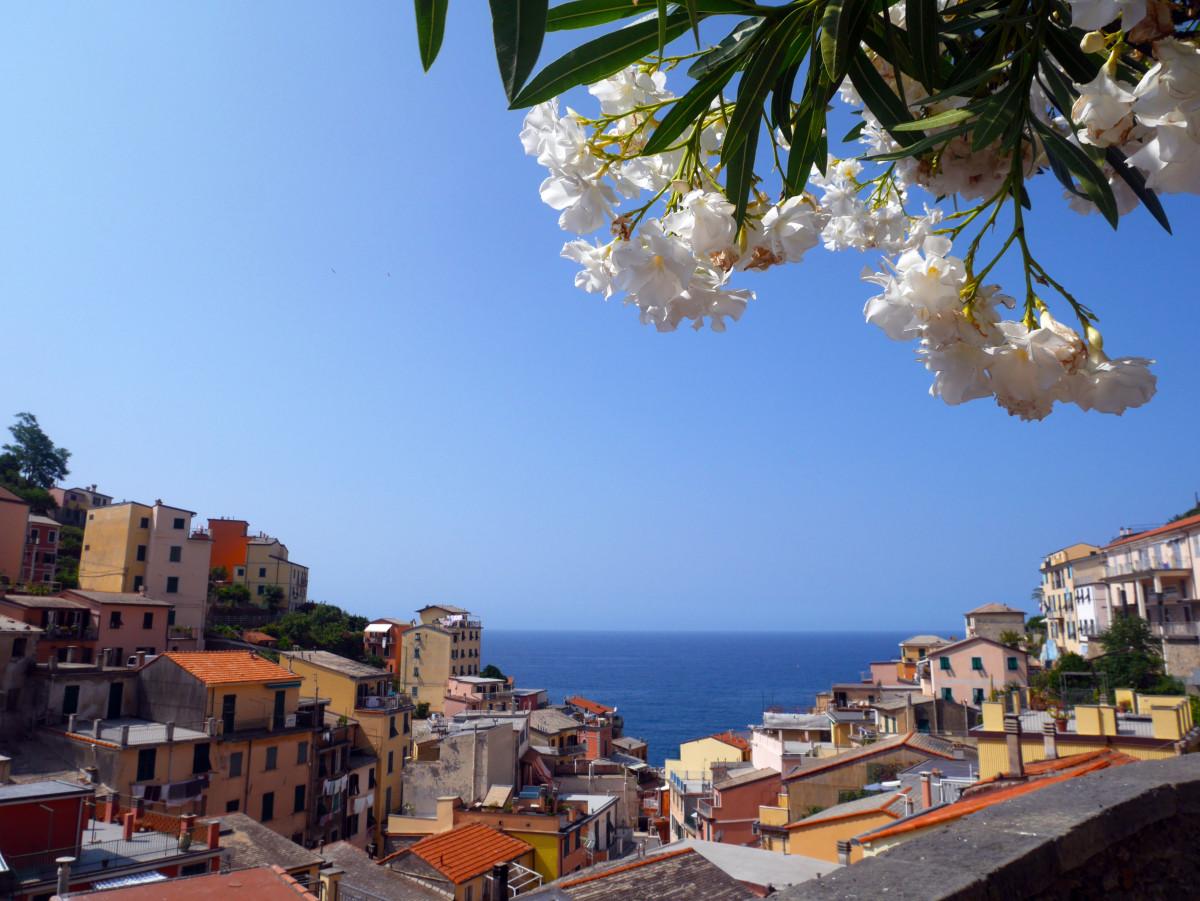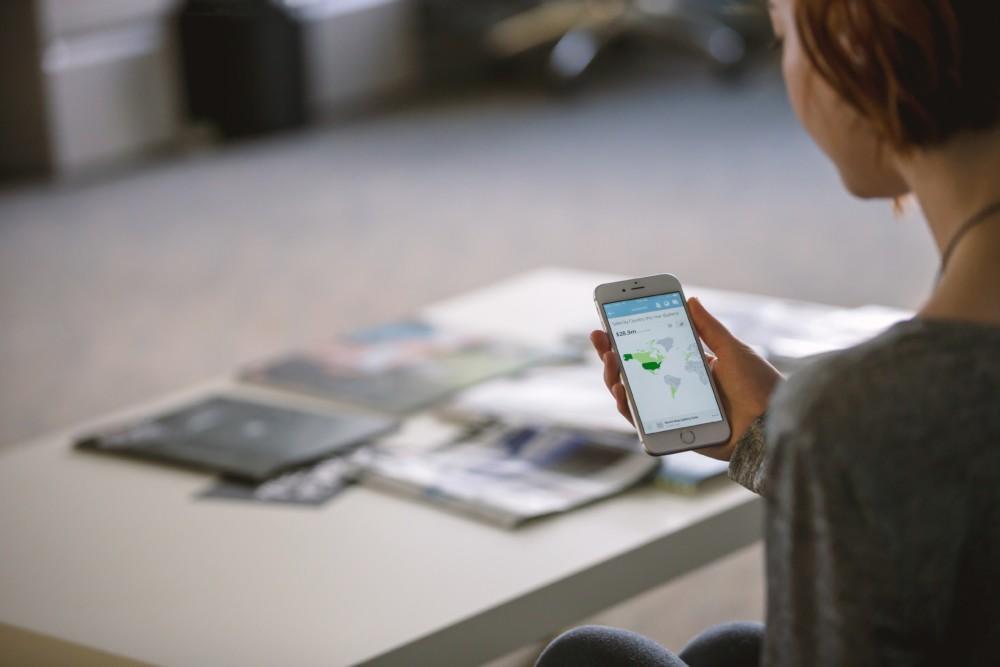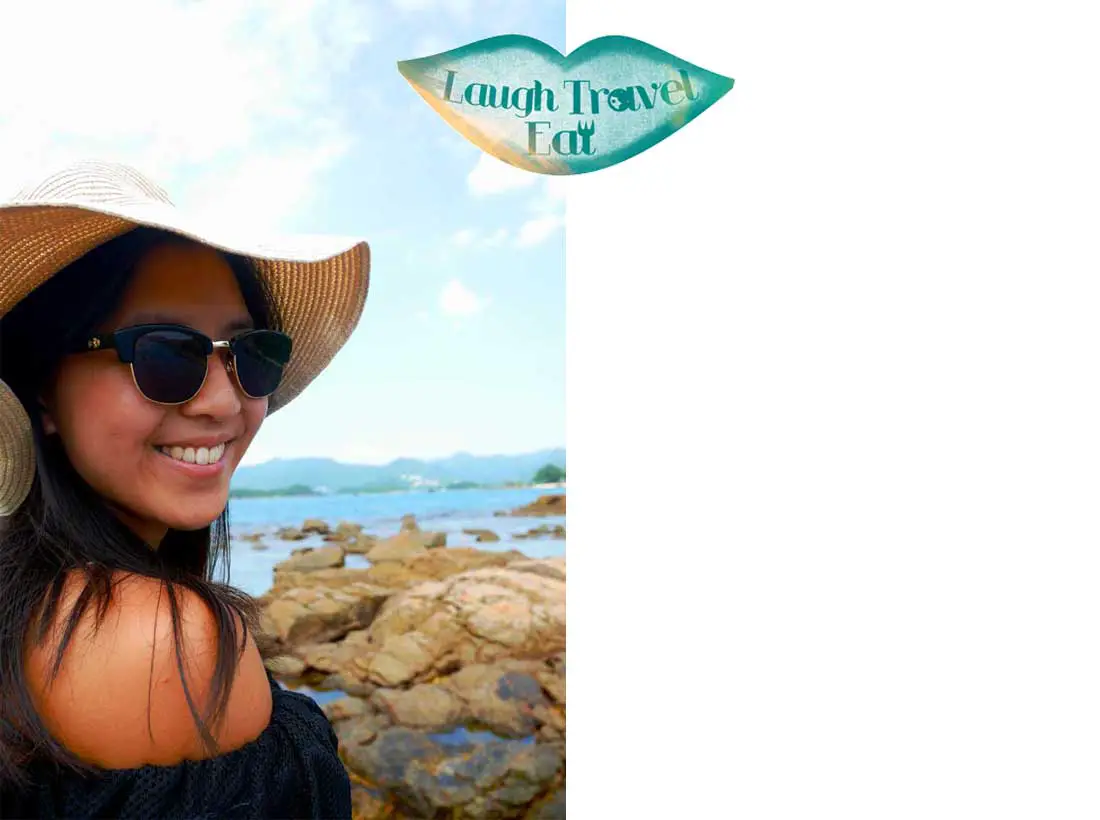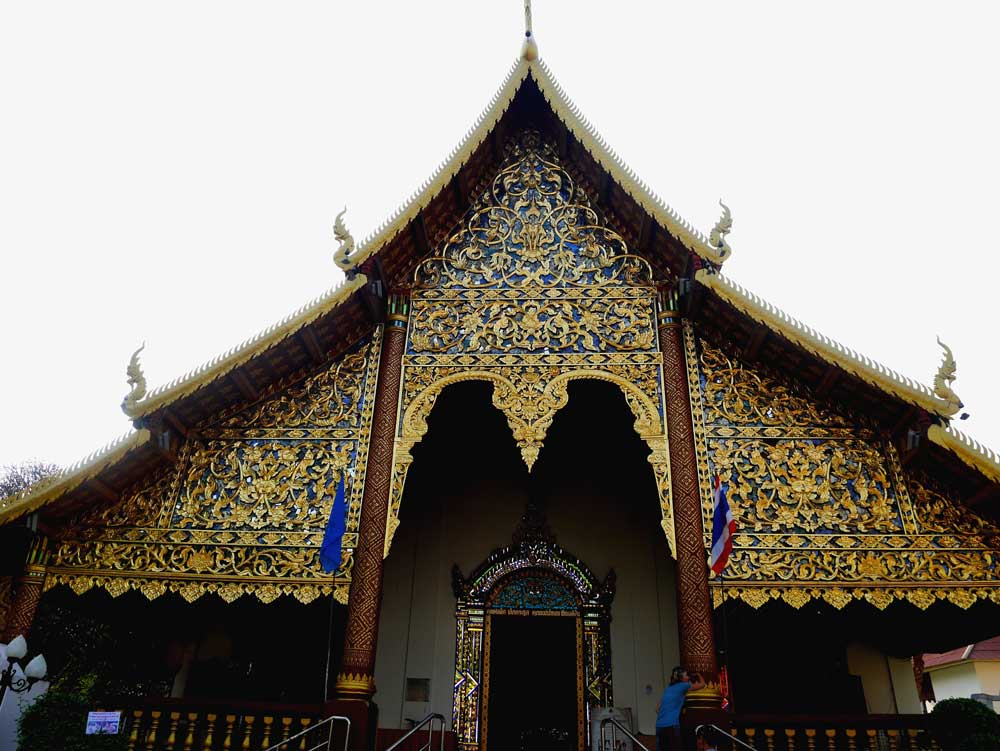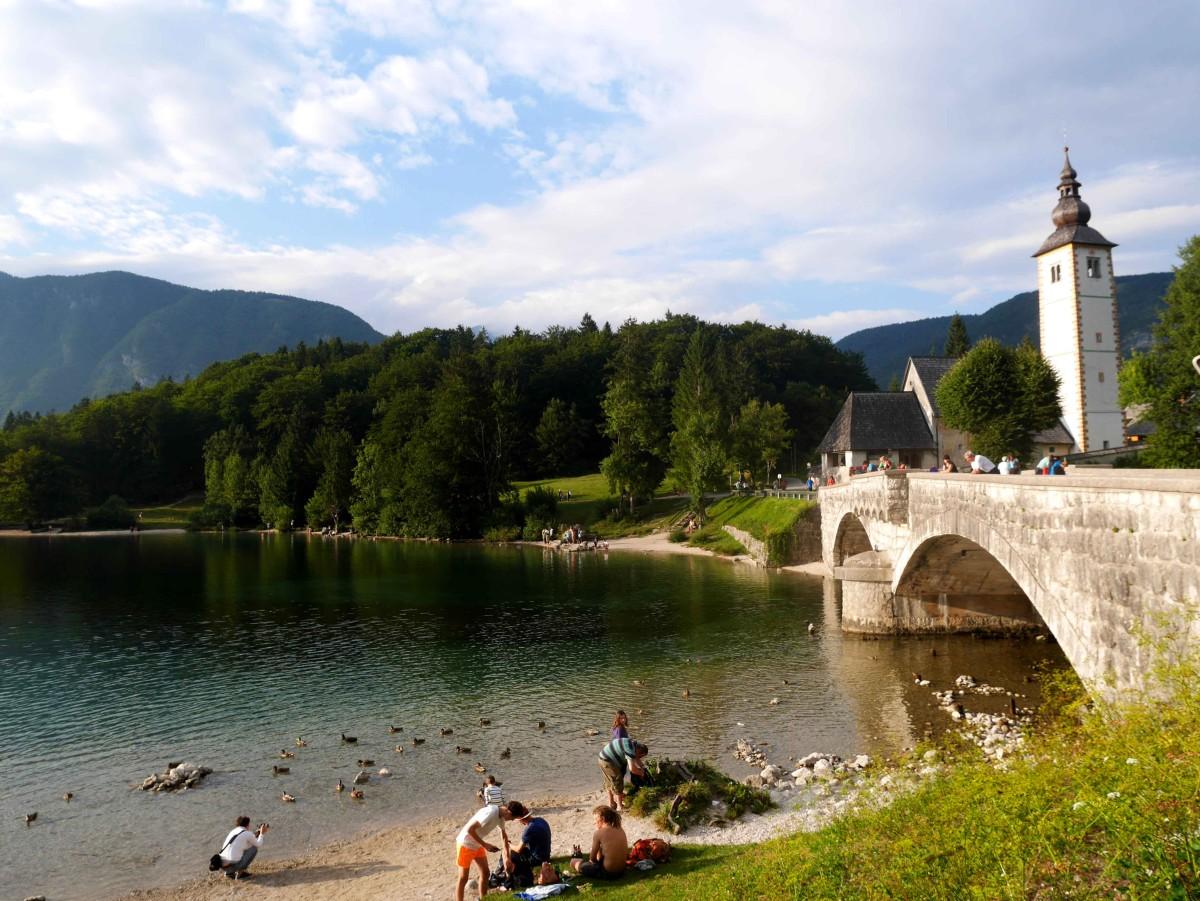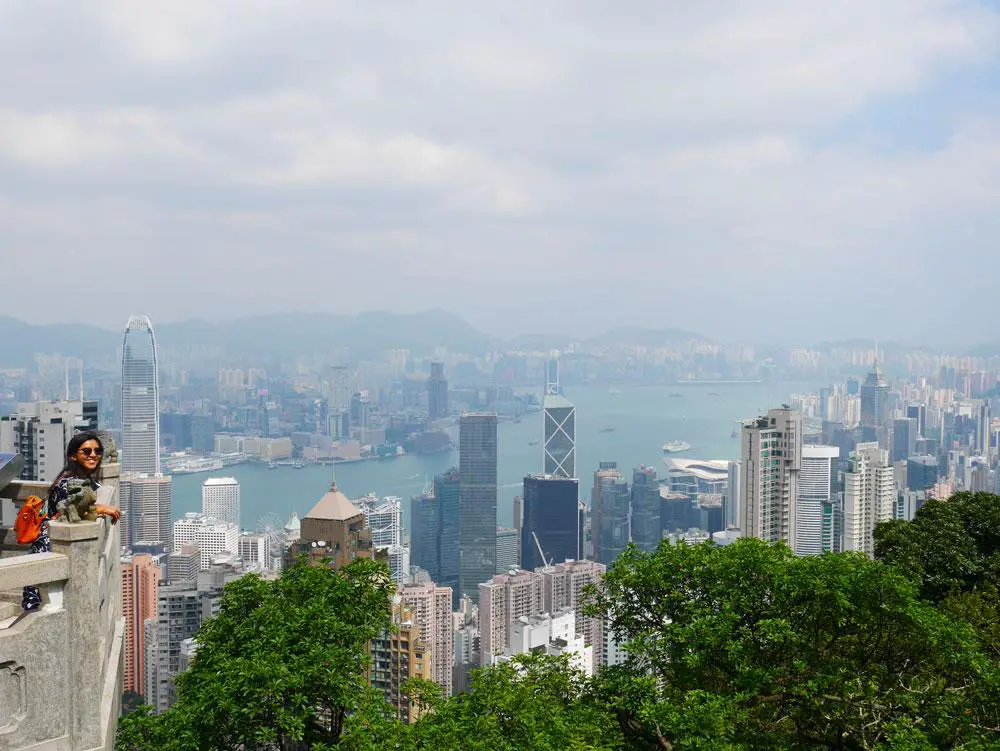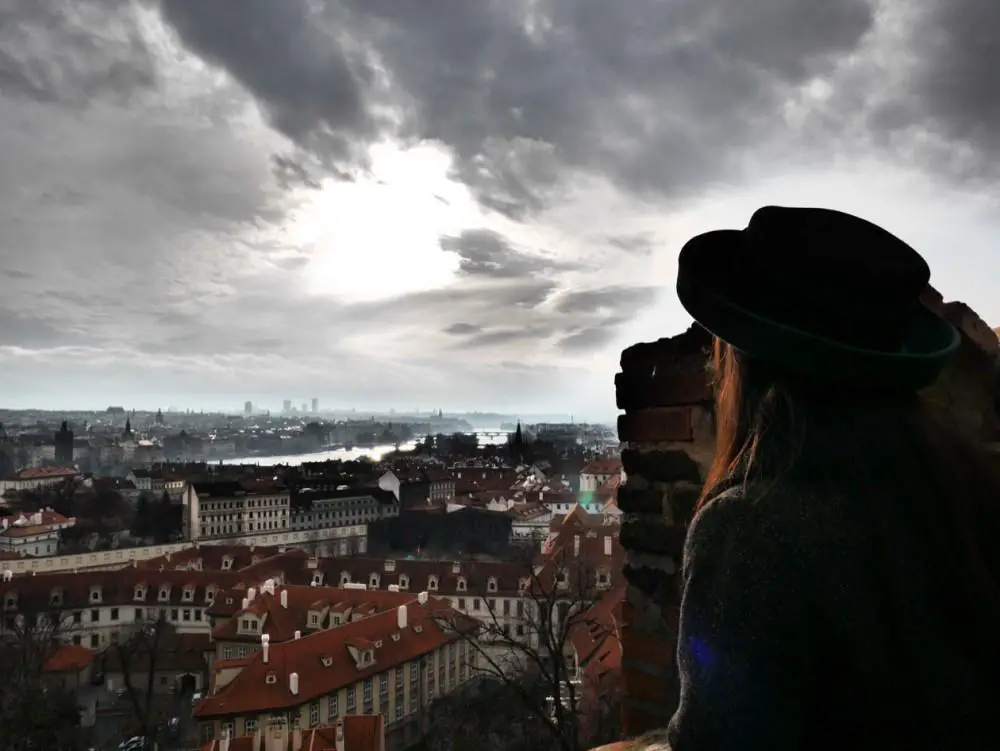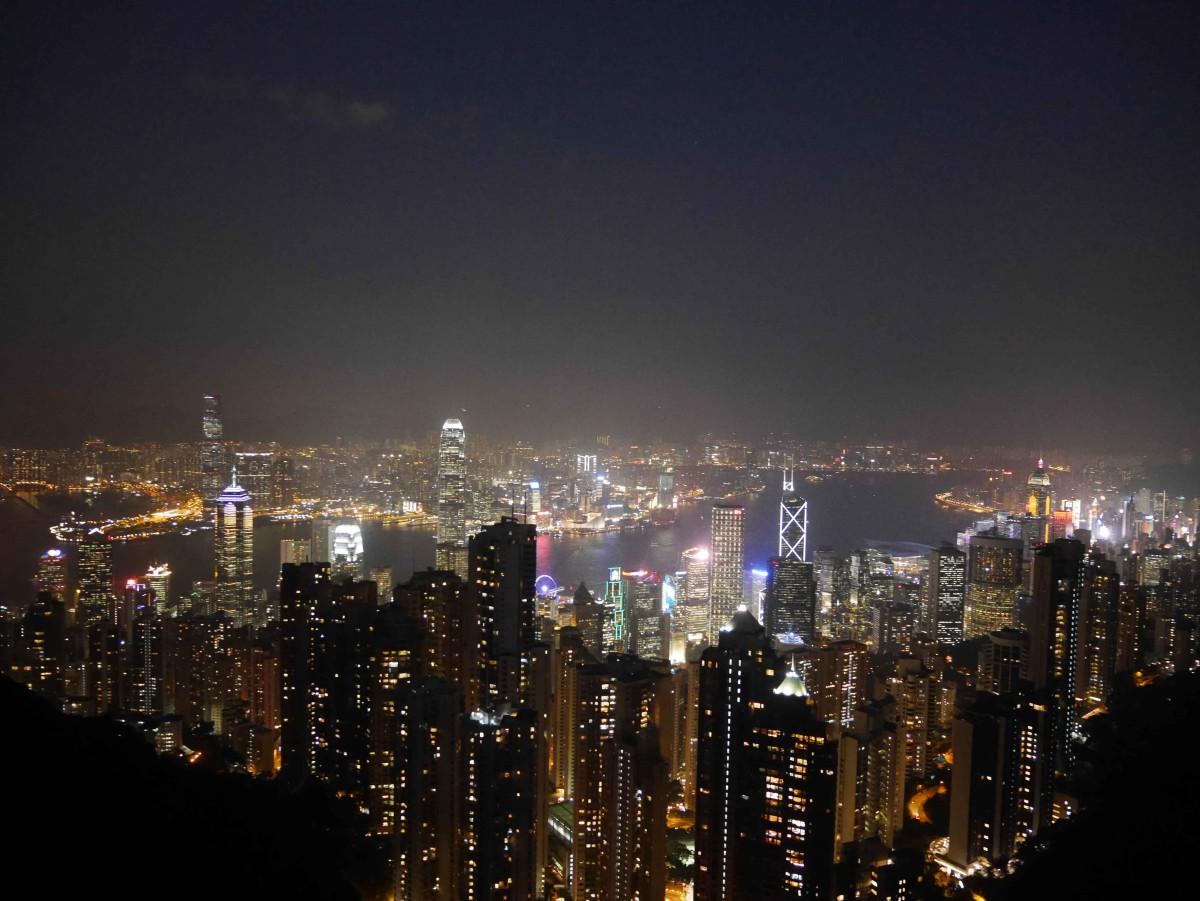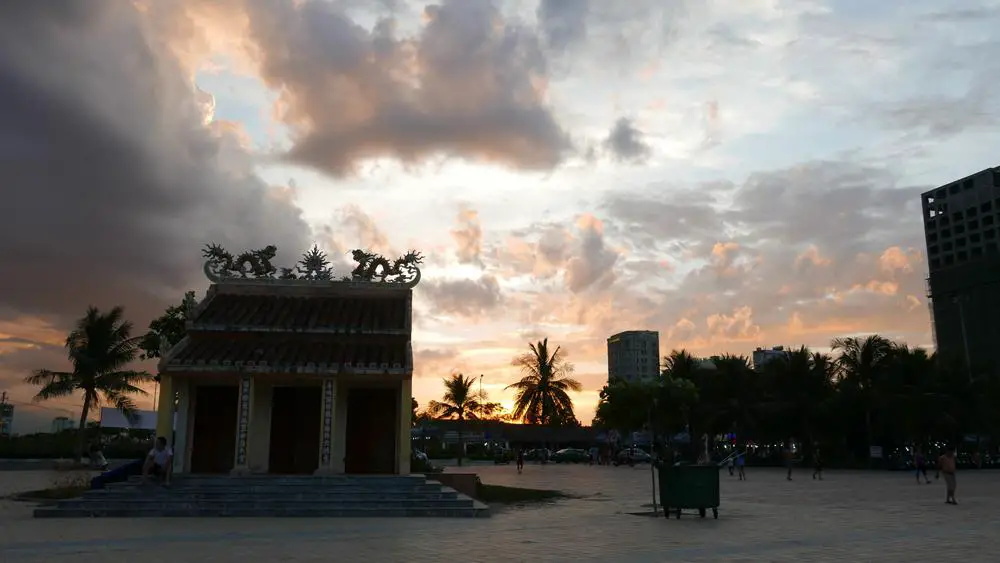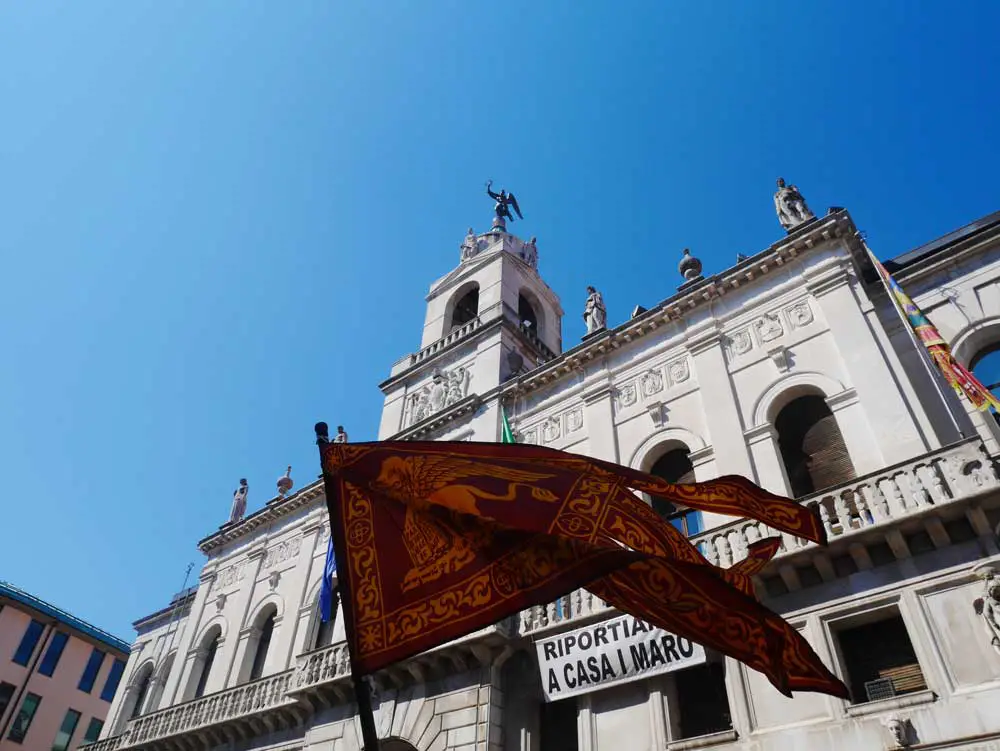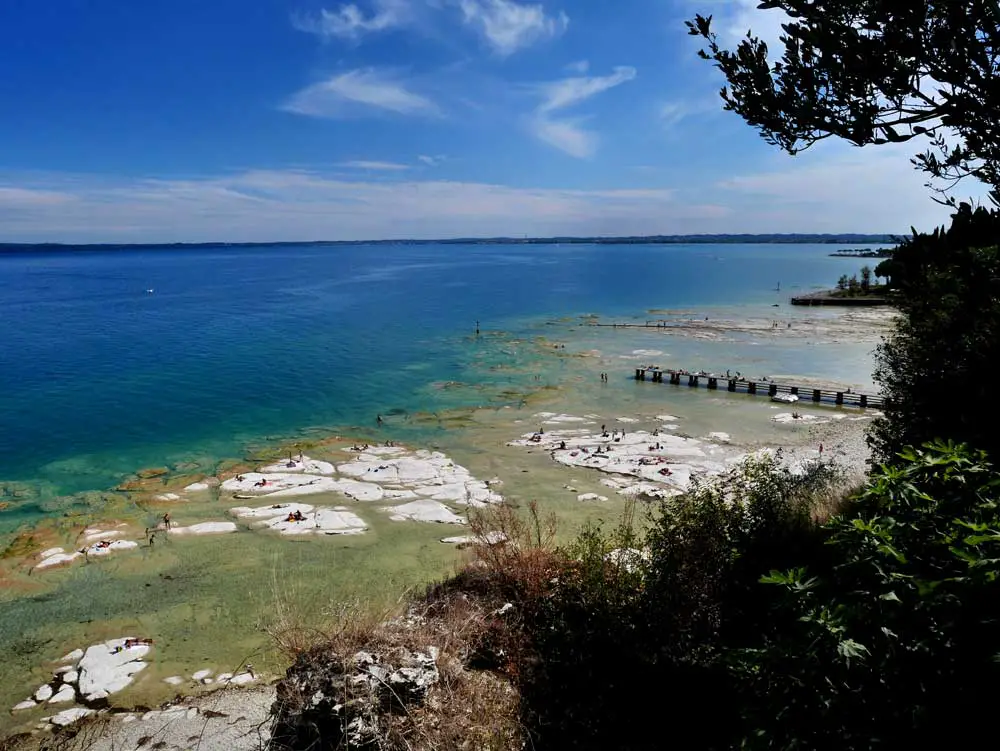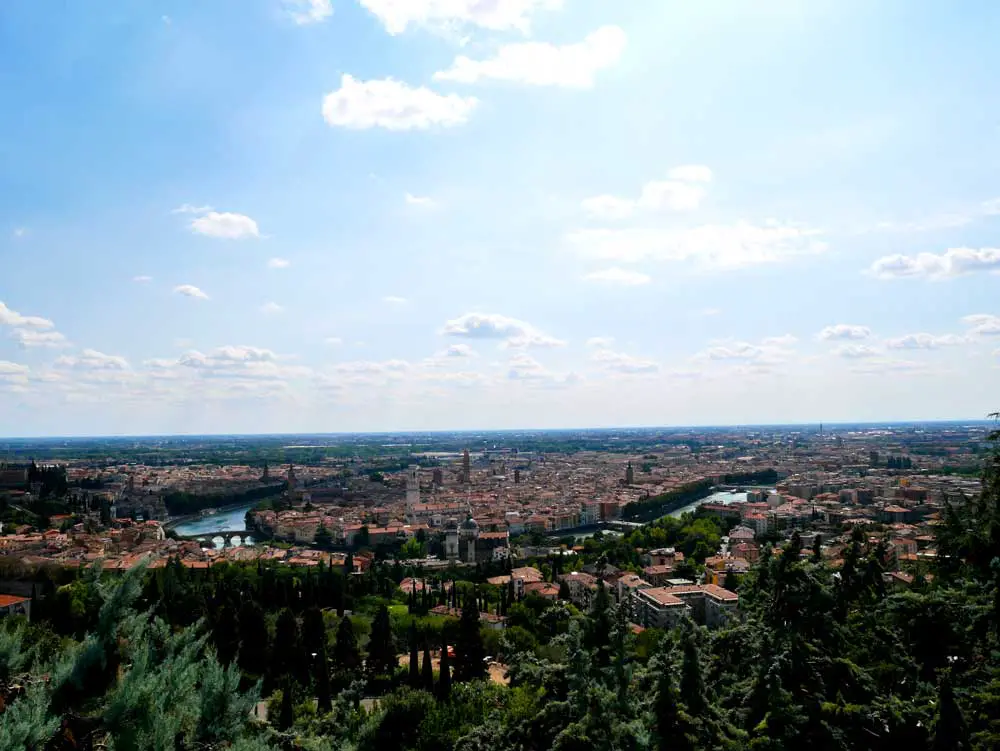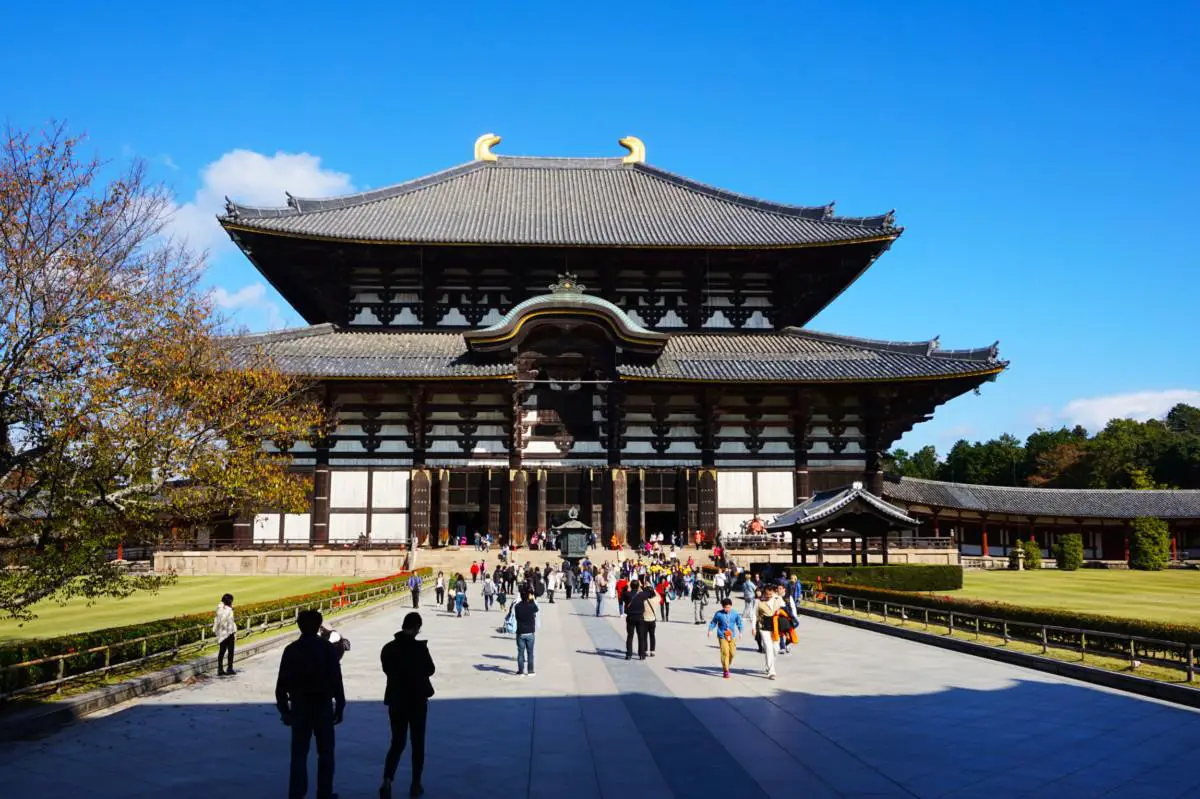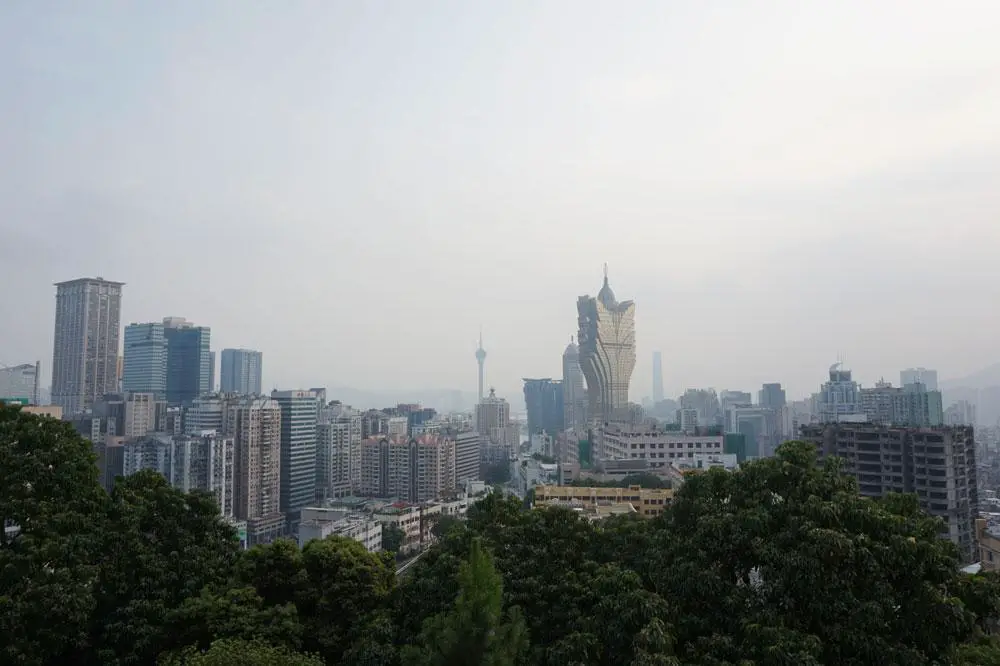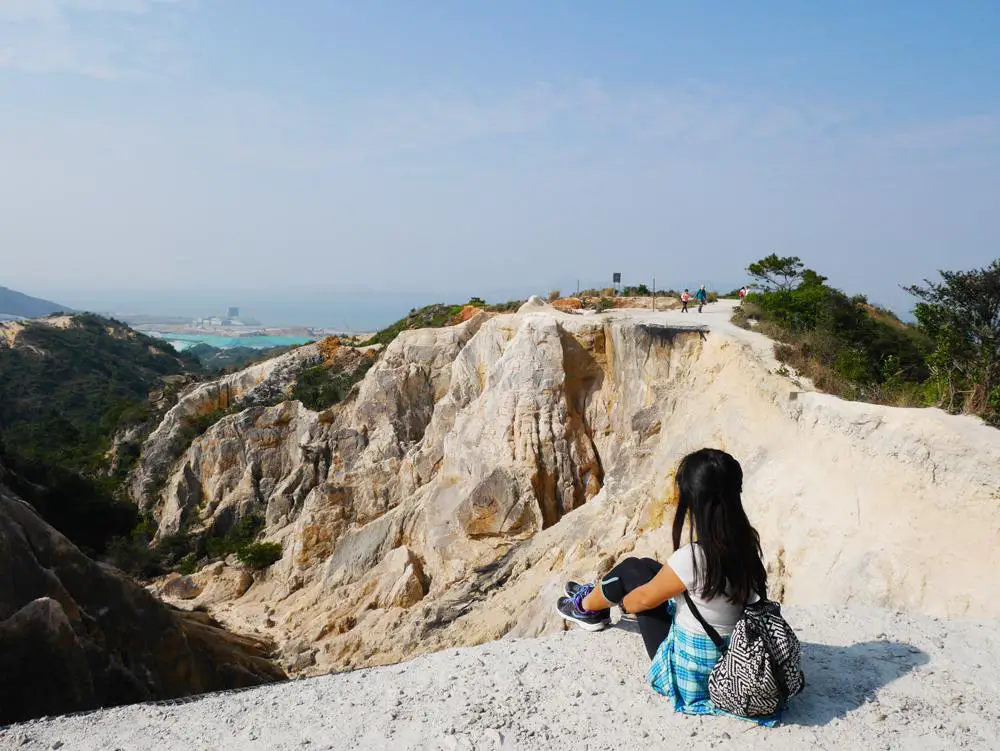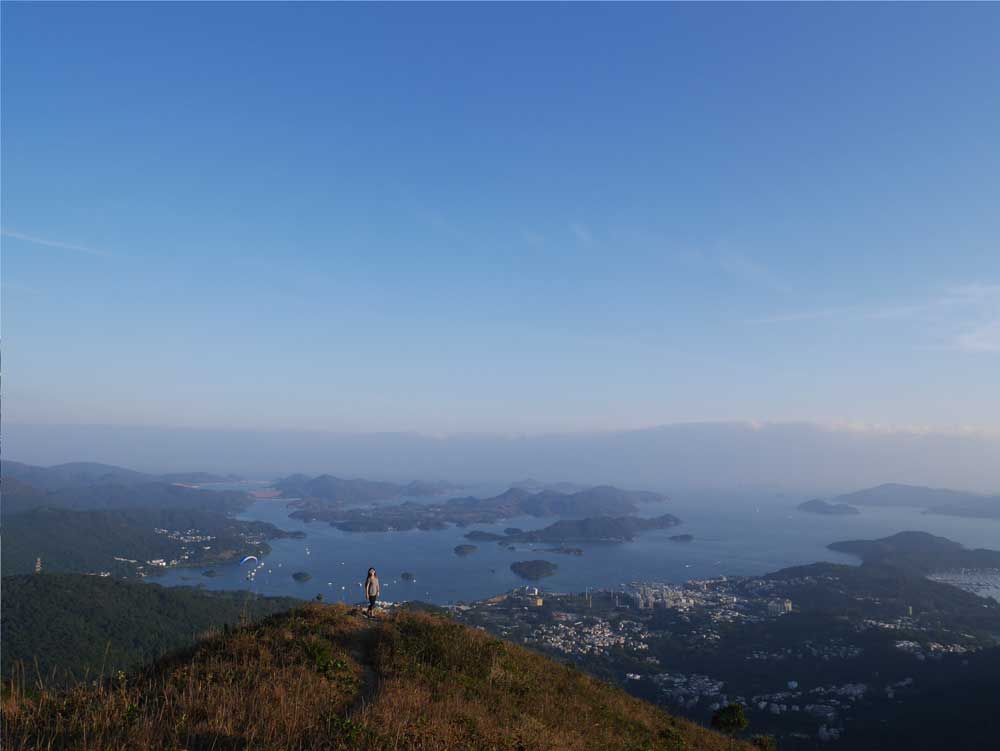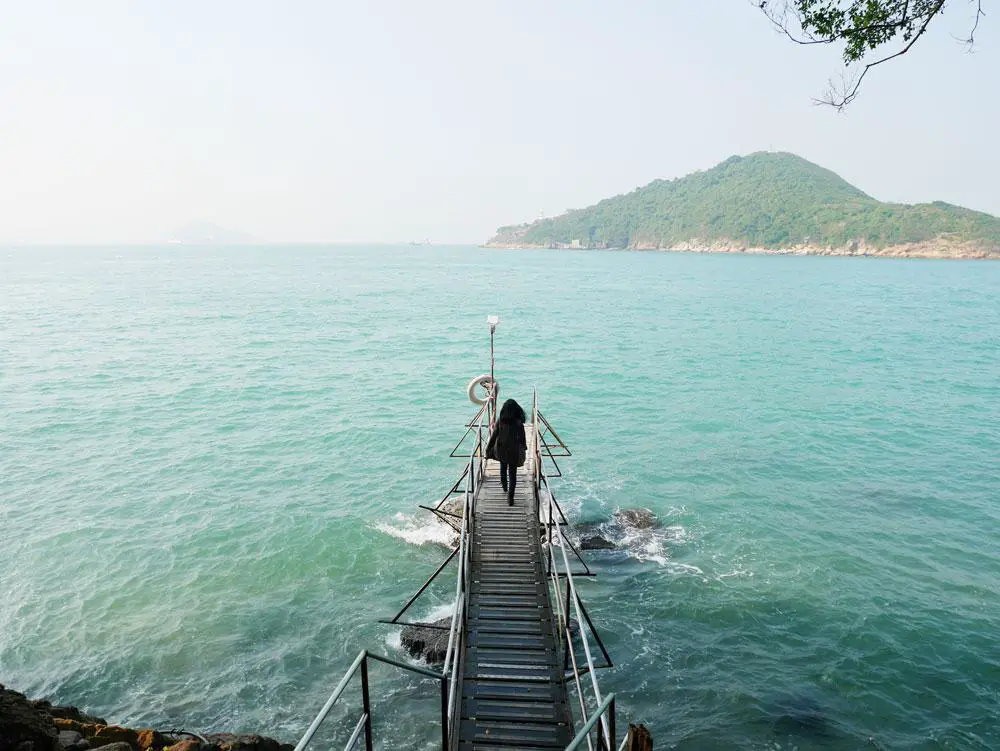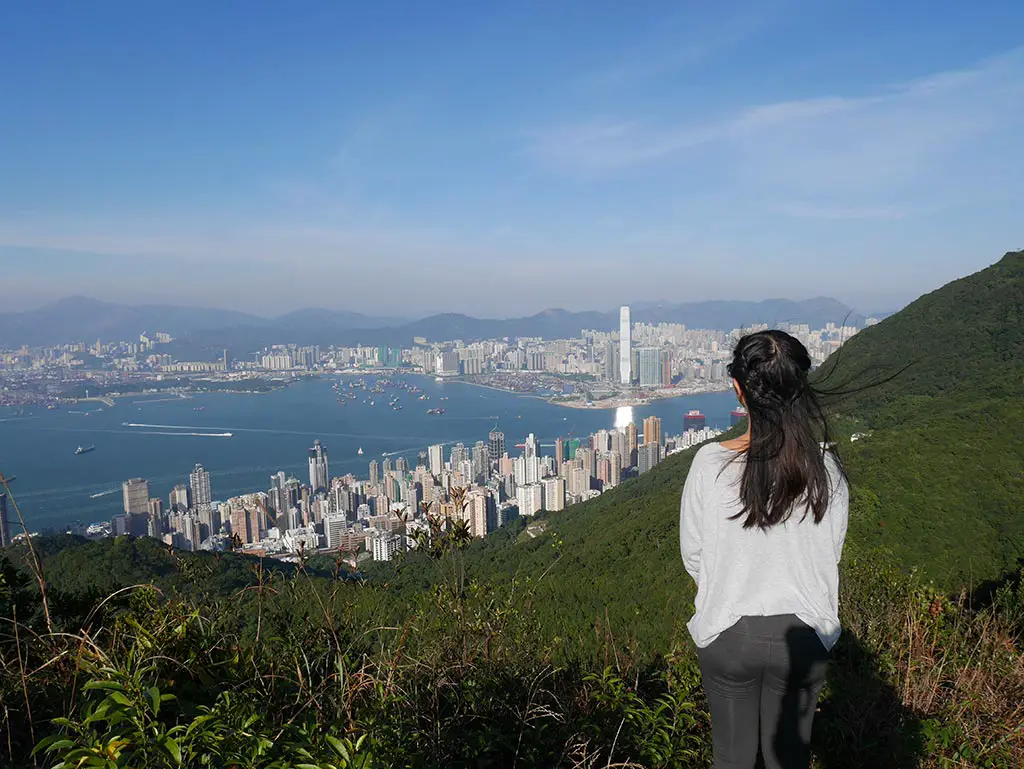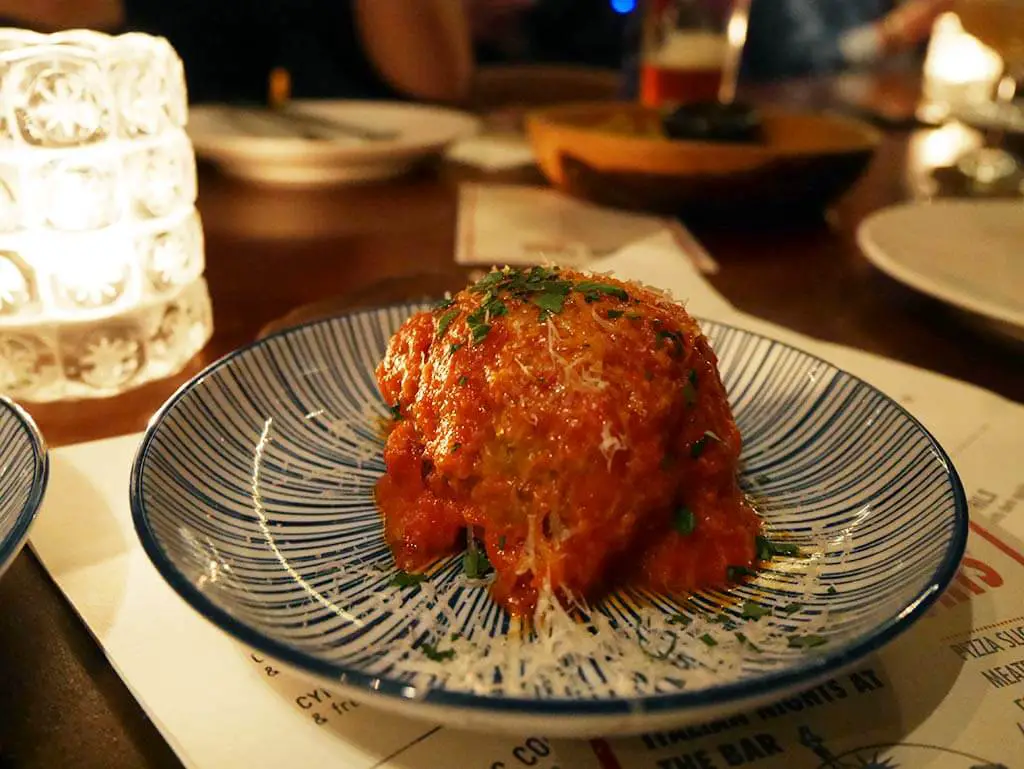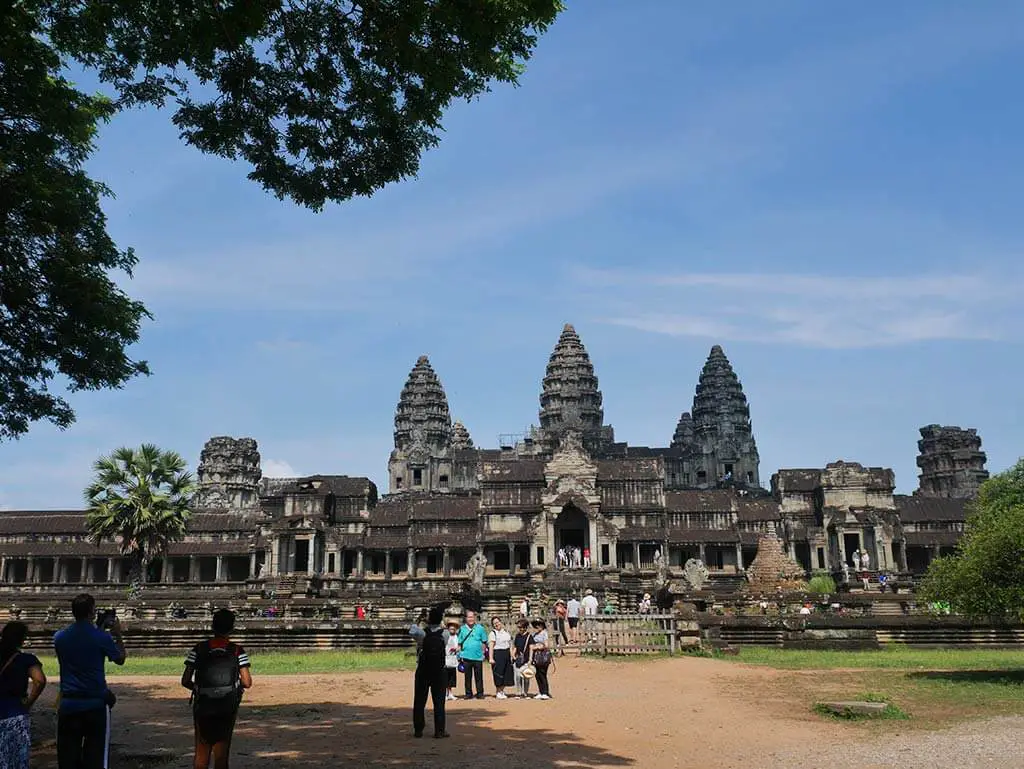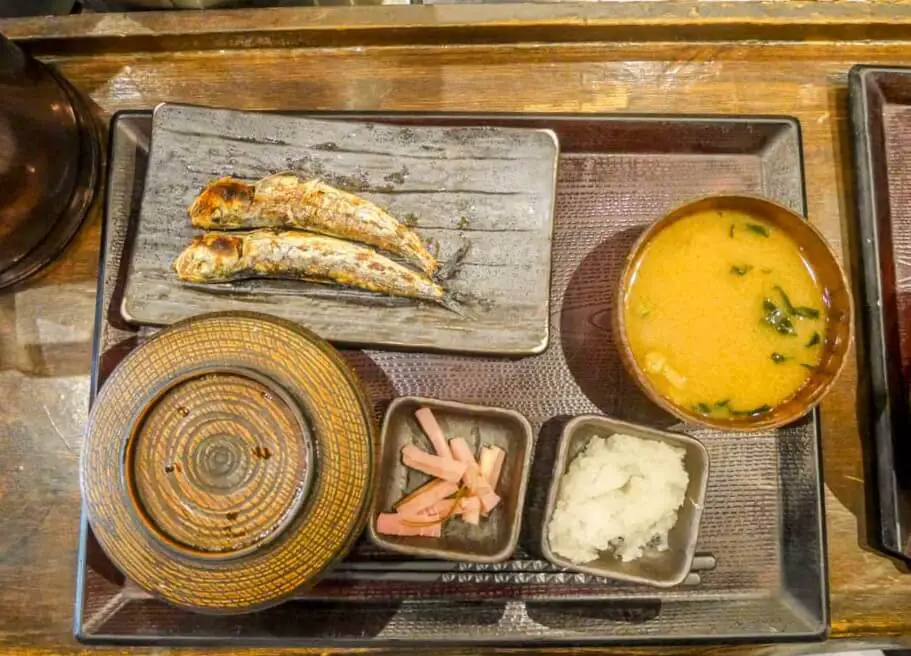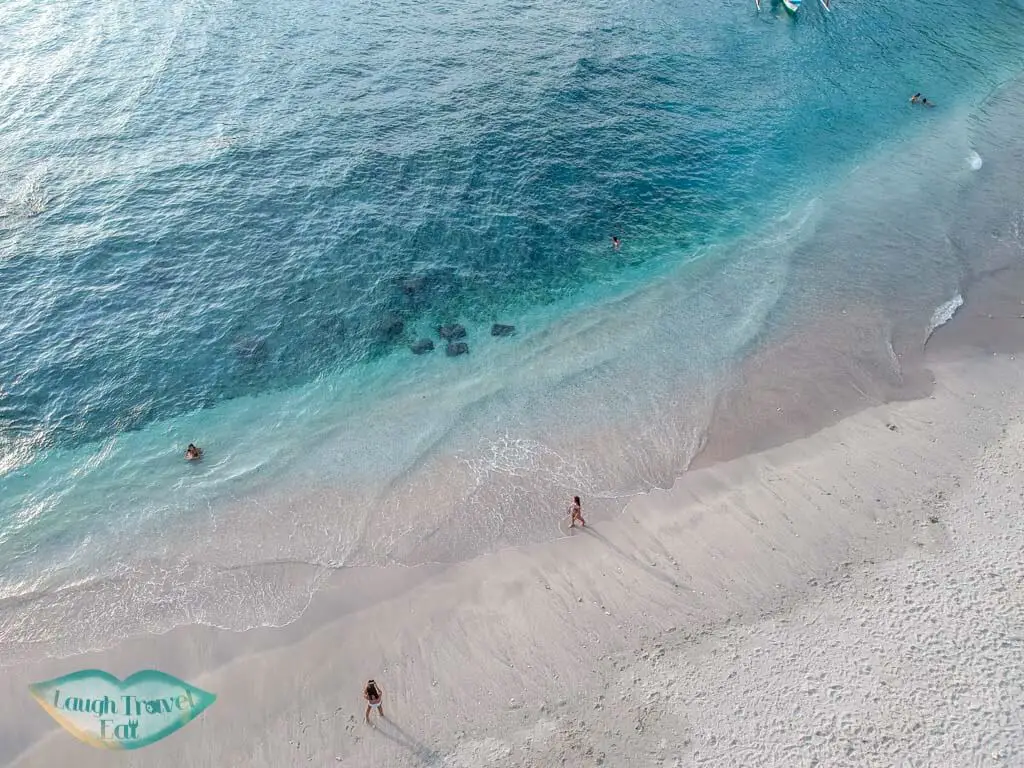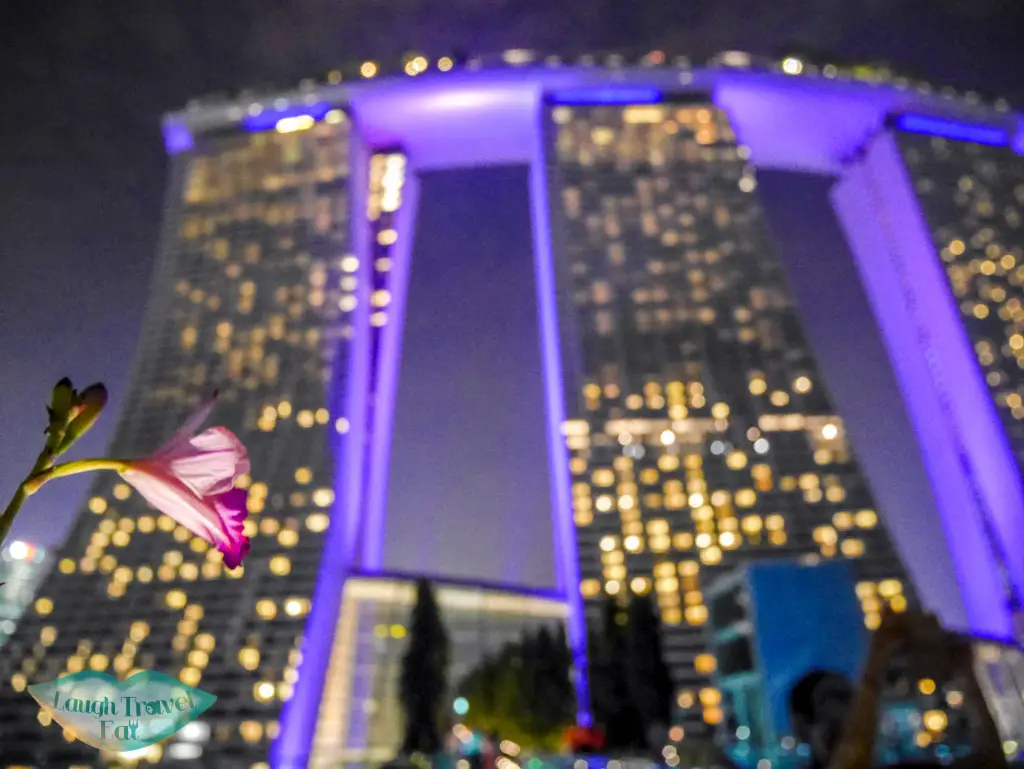If you tell me there are plenty of things to do in Sofia, Bulgaria, before my trip, I probably wouldn’t believe you. The capital of Bulgaria is one of the oldest continuously inhabited cities in the world, dating back to antiquity. While it’s not as compact as Belgrade or as Art nouveau as Zagreb, it is a city that is lived in with passionate citizens who are excited to show the city off to visitors.
> See all my Bulgaria posts here
Contents
Essential information for Sofia
A Short History of Sofia
Sofia is one of the world’s oldest inhabited cities dating back to the 5th century BC, possibly due to its hot mineral spring. Its first name was Serdica or Serdika, and it came under Roman rules in 29 BC.

The modern-day nation of Bulgaria slowly took shape as the Slavic tribes arrived in the 5th and 6th centuries. This was the first historical layer of the city. It was invaded various times by Huns and other tribes and was taken by Khan Krum into the Bulgarian Empire in the early 9th century.
It fell under Byzantine rules from the early 11th century until the late 12th century, before coming back under the new Bulgarian Empire. Like many cities around Balkan, it was conquered by the Ottoman Empire, who ruled it from 1530 to 1836.
Sofia (and Bulgaria) as we know it slowly came into shape during the 19th century and Sofia officially become the capital
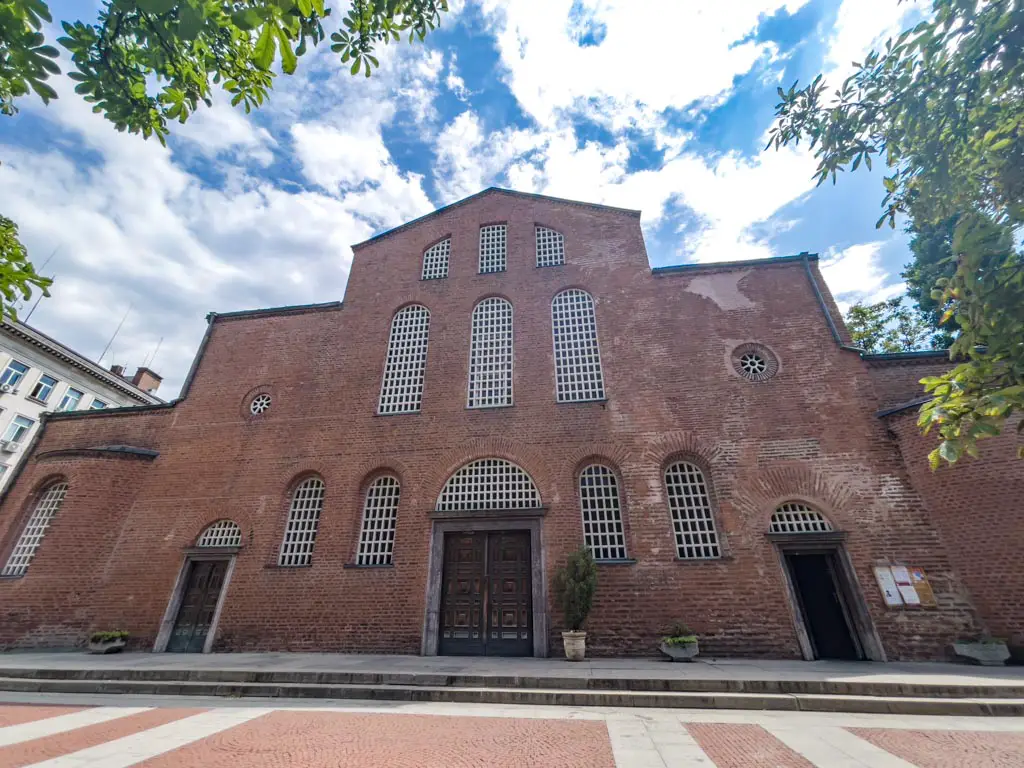
It eventually became known as Sofia as the Saint Sofia Church was what most travelers see when approaching the city. The name became the preferred way to call the city and it was made official in the 19th century.
After that, it was under the Iron Curtain until the fall of the Berlin Wall, and you can still learn a lot about how communism affected the city and country through its museums and monuments.
How do you get around Sofia?
There is a good network of public transport in Sofia, but it’s also a very walkable city. I stayed on the eastern edge of the city center and I can walk to most places in half an hour.
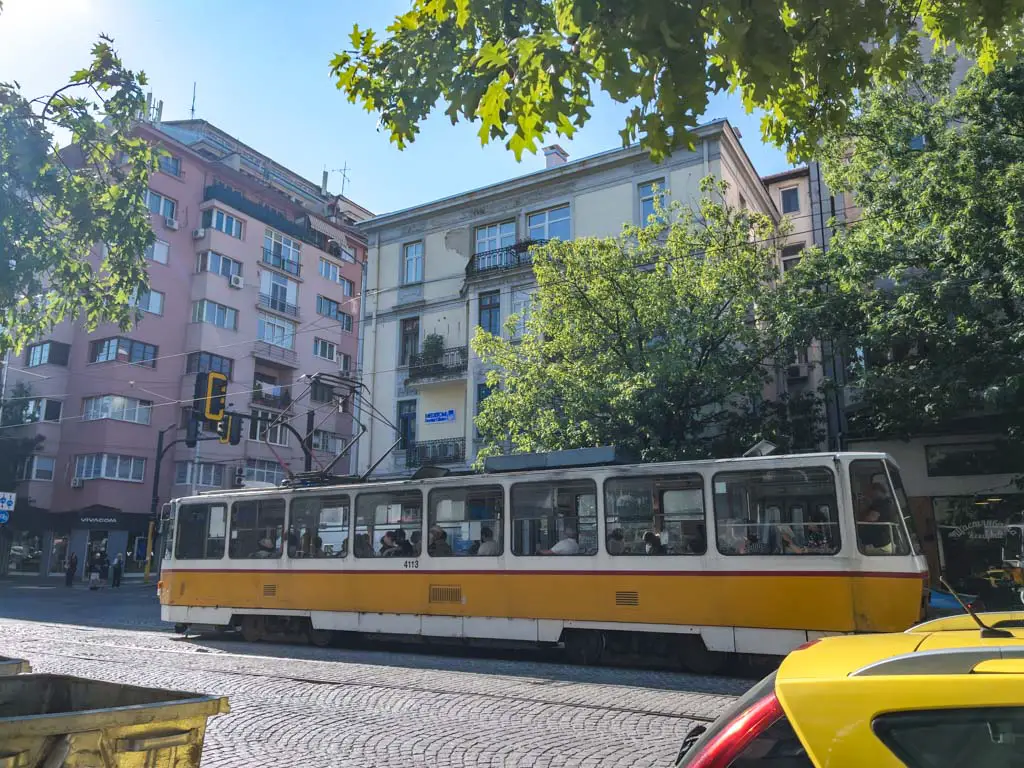
Trams crisscrossed the city center and there are many buses circling the historic center as well.
There are also a few metro lines which are useful if you’re taking day trips. The main station is Serdika in the city center, which is connected to M2.
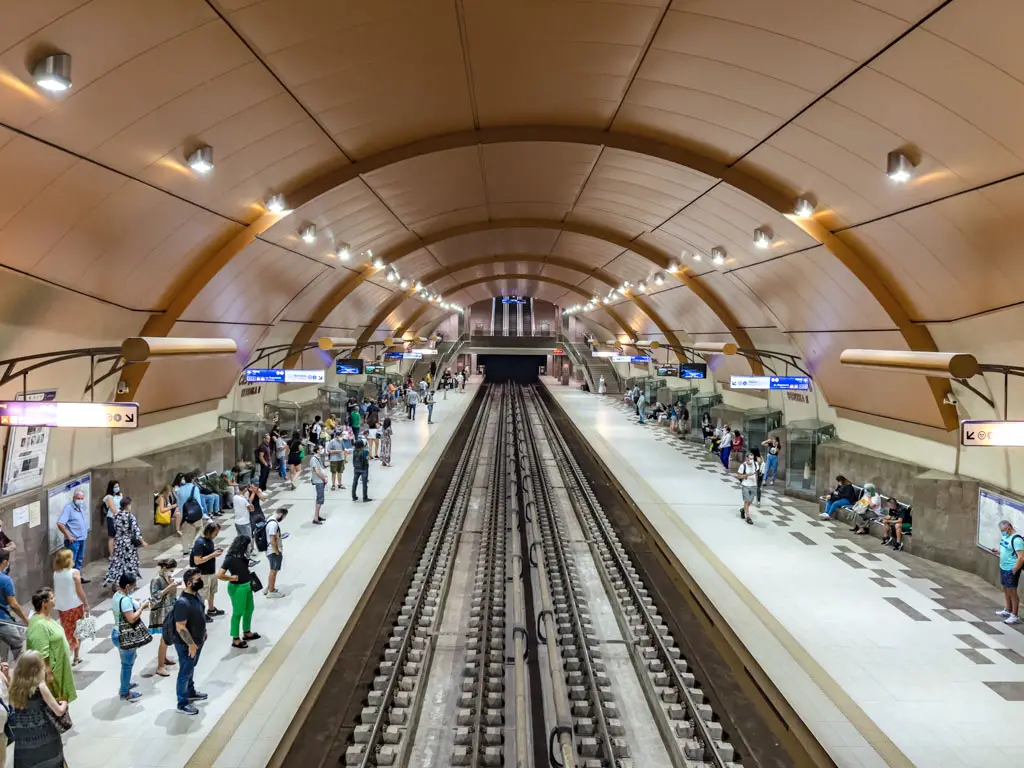
If you are taking a day trip, you can go to the metro station and pay 4 lv for a day ticket. Since one journey costs 1.6 lv, it makes sense to get it if you’re taking more than 3 trips.
Taxi in Sofia
Taxi is very affordable in Sofia and you can TaxiMe is a good taxi app that works like Uber and Grab. You can select pick up and drop off points on the app with an estimate of the price by booking, and it can connect to your credit card.
How many days in Sofia is enough?
To see the highlight, you can do Sofia in 2 days, but I recommend at least 3 days to see it probably. If you want to do a day trip as well, you’ll definitely need an extra day or two. I spent around 5 days in Sofia with 2-day trips and it was perfect.
Is Sofia a cheap city?
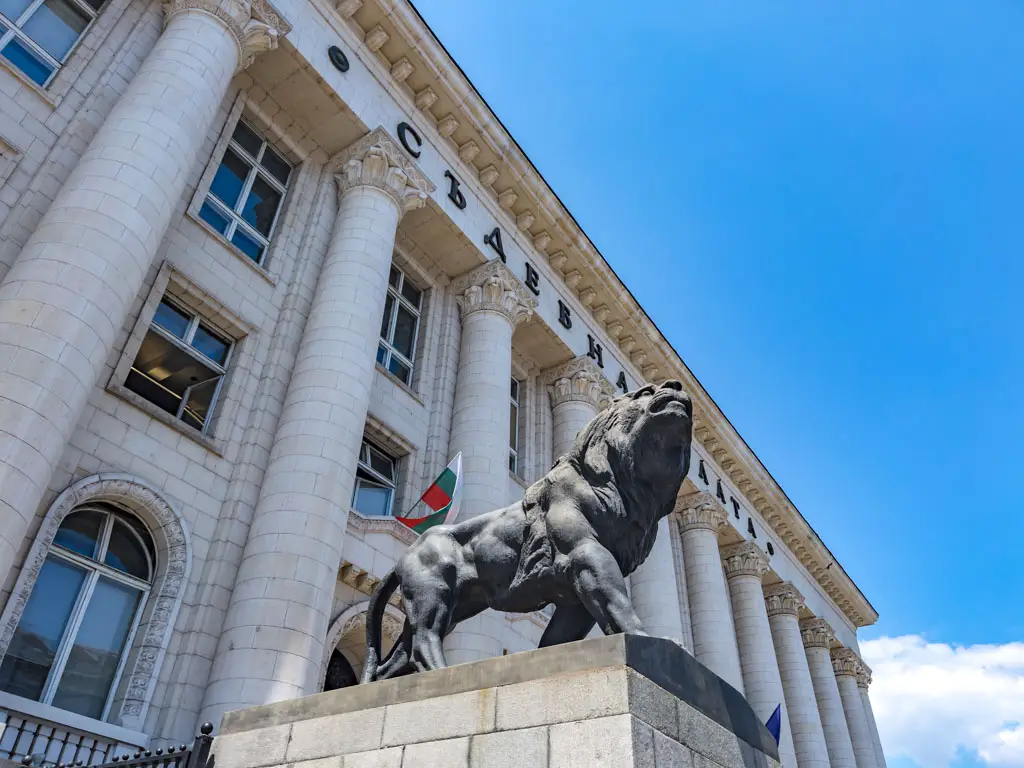
You can use your credit card in most places in Sofia, from restaurants to public transport. But it’s good to have around 20 to 50 lv on your depending on how long you are staying. A couple of museums I went to only accept cash, as well as some snack stores.
How much does a meal cost in Sofia?
For a meal at a mid-range restaurant in Sofia, the prices tend to be around 15-25 lv (7.6 – 13 euros). The most I spent on a meal was 44 lv, which was 22.5 euros at a nicer restaurant with wine and water.
Free Things to do in Sofia Bulgaria
If you are looking for the best things to do in Sofia – you can’t go wrong with free ways to check off all the must-see in Sofia. Sofia surprised me with how many free tours they have and also generally how cheap most things are. Here are my top free things to do in Sofia:
Note: although not required, it’s good to tip the tour guide at the end. Depending on the size of the group, I tipped 10-20 lv.
Take a Free Sofia Tours
A free walking tour is one of the best ways to get to know a city. Sofia’s one is called Free Sofia Tours which also runs a Communist Tour and a Pub Crawl. The tours run daily at 11 am and 2 pm in front of the Palace of Justice and last for 2-2.5 hours, but it’s best to check their calendar there to be sure.
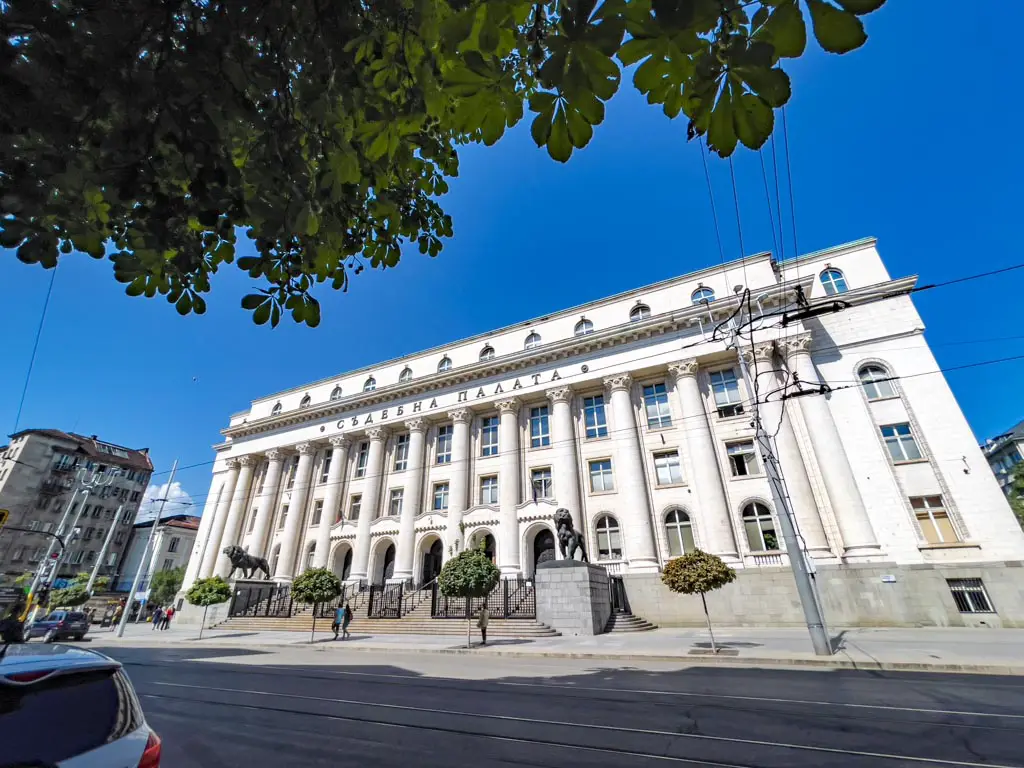
There tend to be a lot of people so they often split the group into two. There is also a Spanish tour as well.
Our guide Chris was very informative, and he gave us a good historic overview of the city as well as various interesting stories.
Balkan Bites Food Tour
That’s right, Sofia has a food tour that is free to join! It’s run by a company called Balkan Bites, which is the first company to run a free food tour in the world in 2013.

traditional cold soup 
healthy snacks
While the tour is free, you need to make a reservation online to secure a spot. A lady on my tour did it in the morning of the day in August and managed to get on the tour.
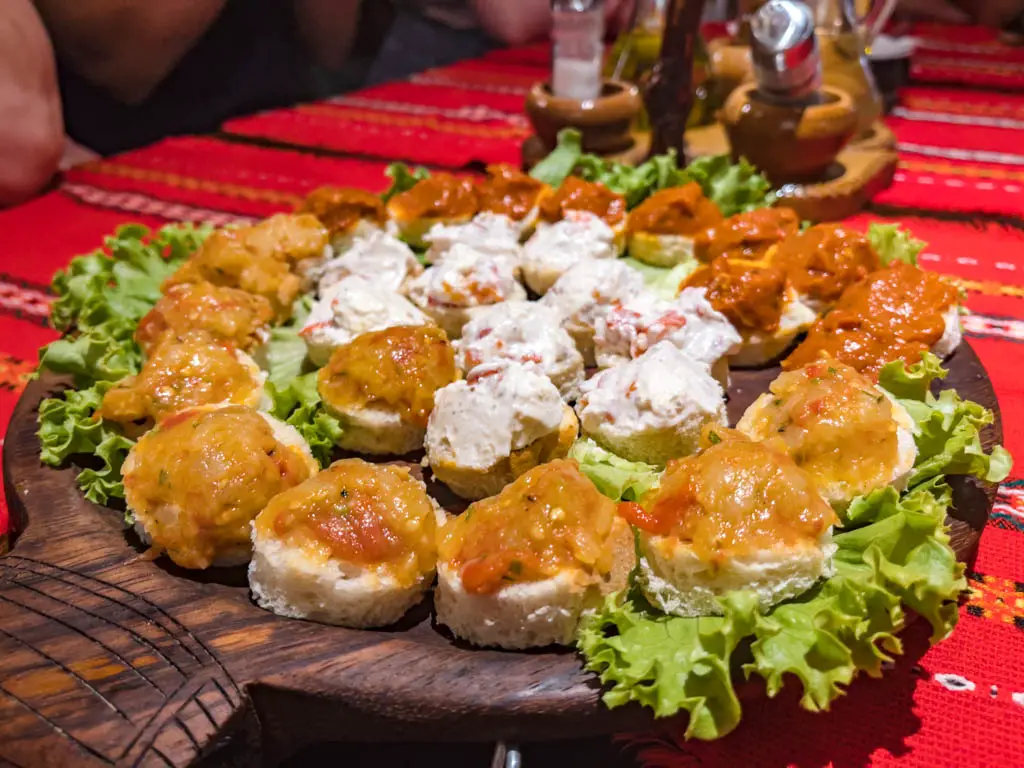
The tour meets at Crystal Garden in front of the Monument of Stefan Stambolov at 2 pm and lasts around 2 hours. It covers the history of Sofia as well as the typical Bulgarian food. But since Bulgarian food is heavily influenced by the history of the region, the company is called Balkan Bites instead of Bulgarian Bites.
Free Sofia Graffiti Tour
I wasn’t sure if I would enjoy the Sofia graffiti tour, but I ended up loving it. Our guide Toto was great and very informative. I realised that I had passed by quite a few of these graffiti already with only a passing thought of them being pretty. But Toto could tell us so much more about the graffiti’s meaning and the artists.
Because street art is always changing, it was great to have a guide who knew where everything is. The tour was started in 2016 by locals and most of the ones we saw were hidden around the city center.
The tour meets under the Sofia Statue at 6 pm and lasts around 2 hours!
Things to see in Sofia: monuments and historic sites
A lot of the major sites will be covered by the free tours I’ve mentioned above, but here is a list of all the monuments that you shouldn’t miss. I have a separate one for religious buildings!
Statue of Saint Sofia
Sofia, or Sophia, is the Greek goddess of wisdom and also in Christian theology. She’s often depicted carrying an owl and the statue was commissioned in 2000 to replace a statue of Lenin in the center of the city.
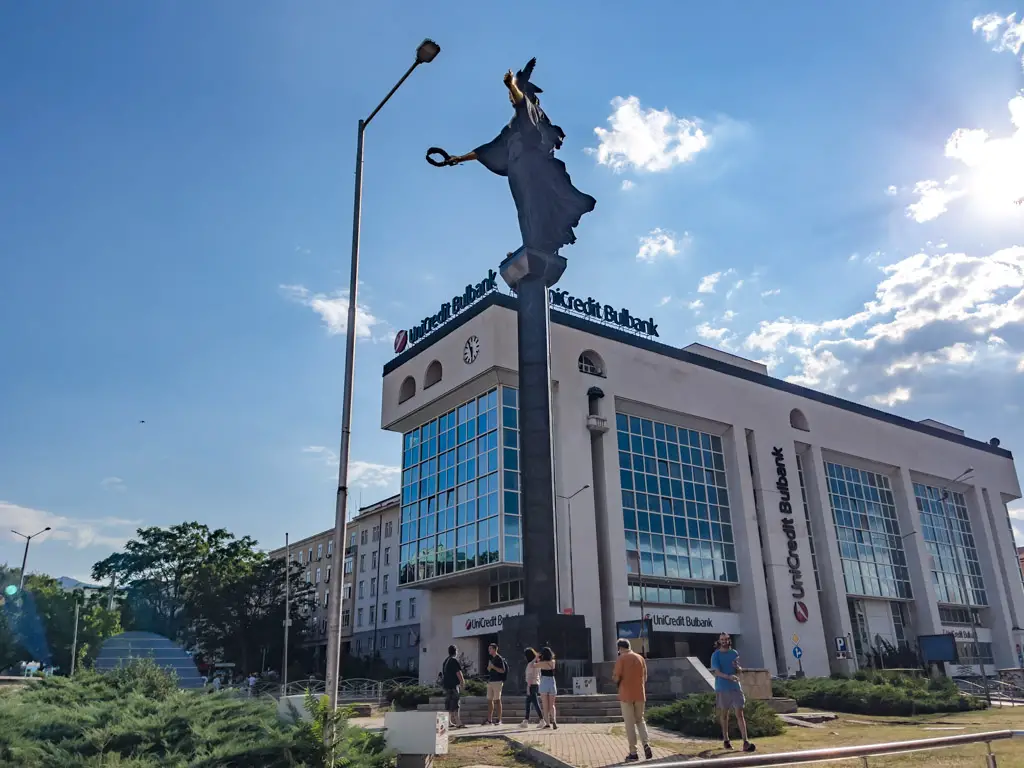
However, the design by sculptor Georgi Chapkanov is considered too pagan and provocative to be connected to the Christian Saint Sofia. She was a martyr in the 2nd century with 3 daughters – Hope, Faith, and Love as they won’t give up their Christian religion.
The statue now overlooks Independence Square standing atop a pillow with a combined height of 22m.
Ruinas Romanas Serdica
To go back to the roots of the city – quite literally – you’d need to visit the metro station Serdika. It is the name of the ancient Roman city and also where the ruins of the city are.
This part of the ruins is centered around the ancient Roman main road that goes from west to east gate in Roman times. It extends below the Independence Square and parts of it is protected by glass covering from the elements. You can also see part of the ancient city walls.
Square of Tolerance
The Square of Tolerance lies between the Banya Bashi Mosque all the way down to Serdika metro station. The name comes the proximity of various churches, mosques, and synagogues are from the square.
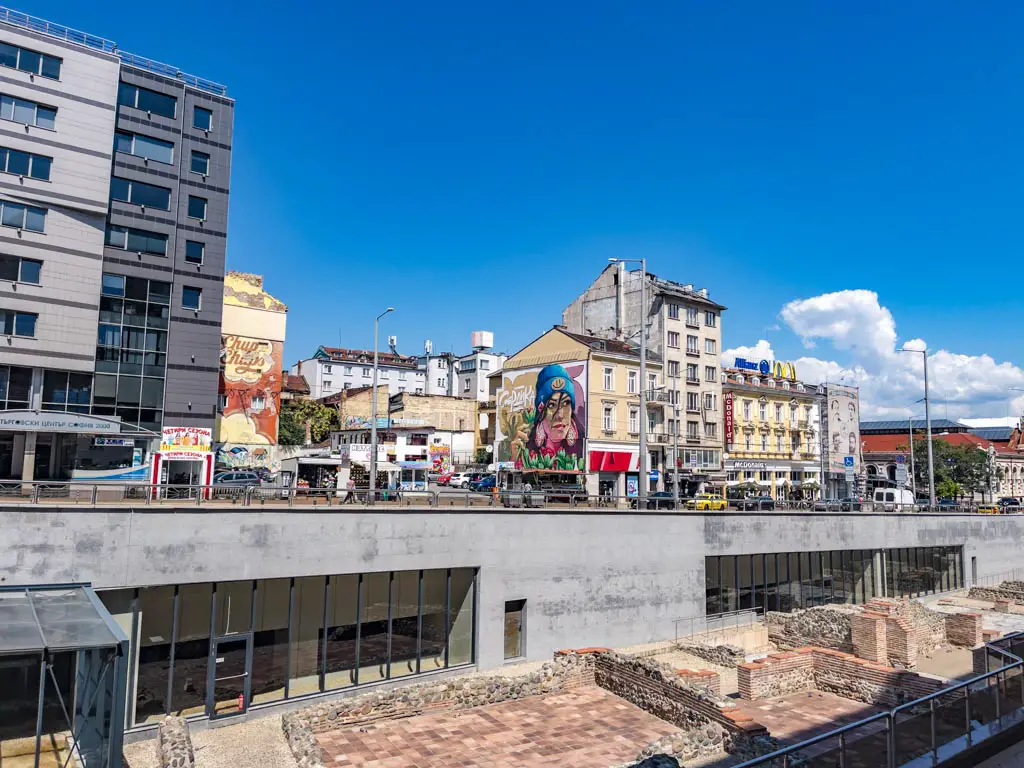
They were all built in different historical periods despite the predominant religion without a problem. And the name of the square is a reminder of all the religions coexisting in peace in Sofia. There’s even a McDoanlds to represent capitalism!
Independence Square
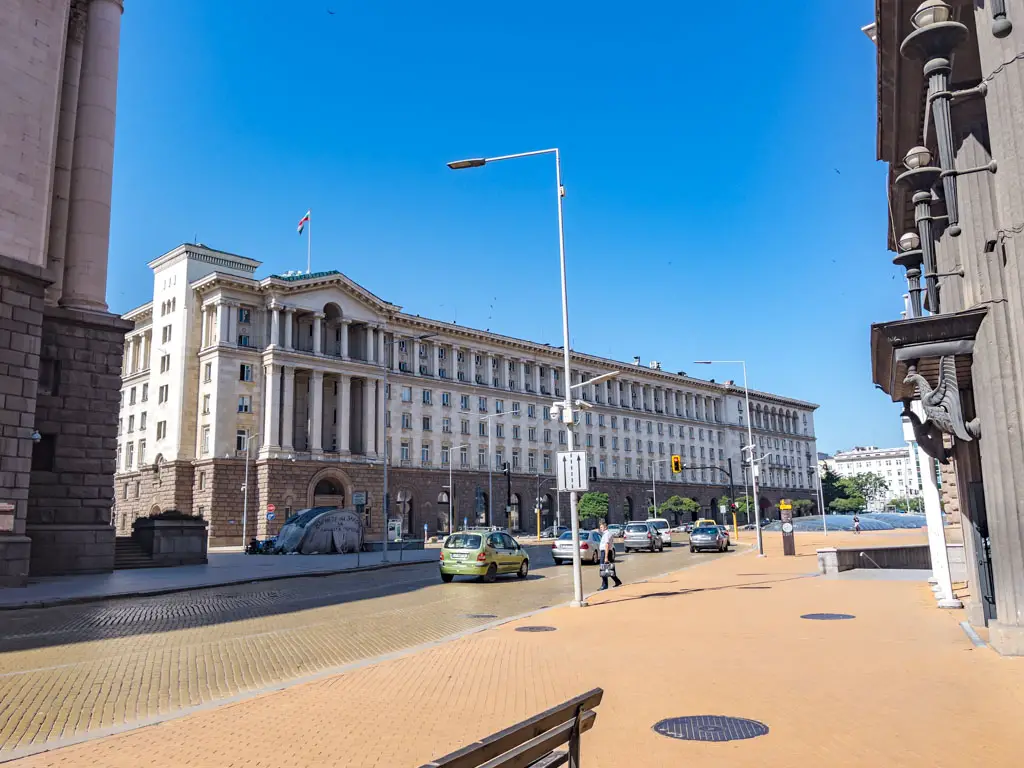
Perpendicular to the Square of Tolerance is the Independence Square, which was once the Lenin Square. It was renamed to this after independence. The eastern end is the triangular building of power, where the state government office is. On either side of the square are twin buildings were built in the 50s in the new Stalin architecture style.
The galleries are a great place to hide from the sun!
“Ivan Vazov” National Theater
Ivan Vazov was the father of literature in Bulgaria, and many things are named after him. The National Theater is the oldest in the country, built in 1906 and built in the Neoclassical style by a Viennese architect.
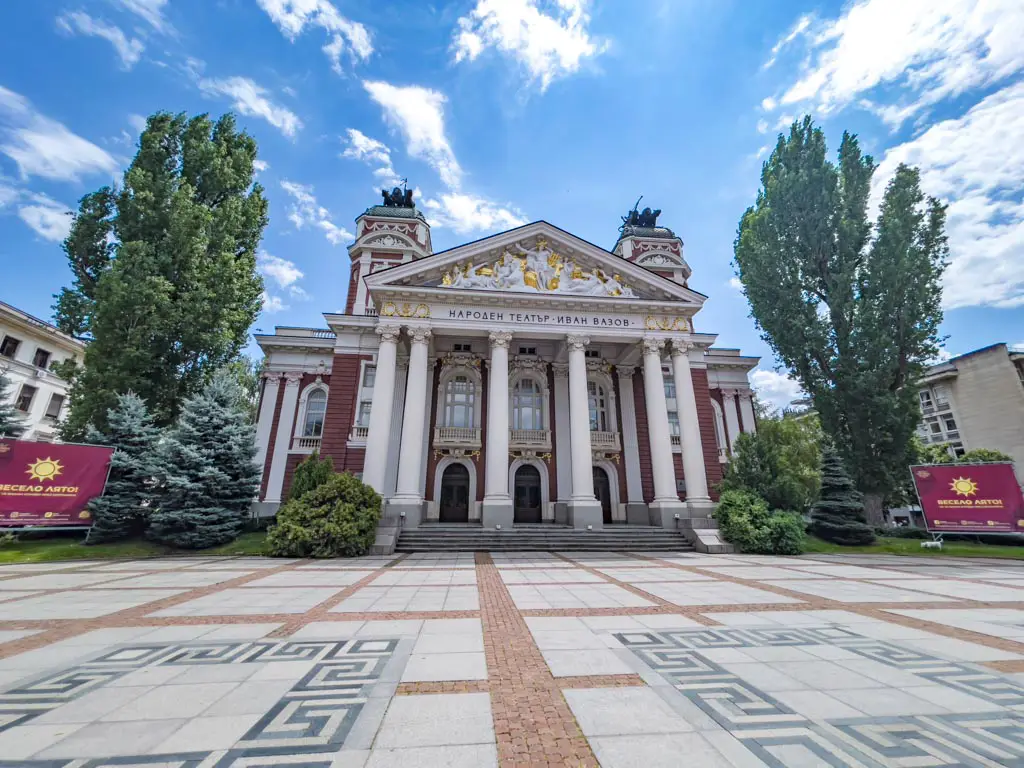
It’s on the eastern edge of the City Garden and still hosts many productions with a capacity of 750 seats in its main stage.
Lions’ Bridge
The Lions’ Bridge is on the northern edge of the town center in Sofia, spanning over the Vladaya River. Lion is the national animal of Bulgaria and the bridge was erected in the late 19th century.
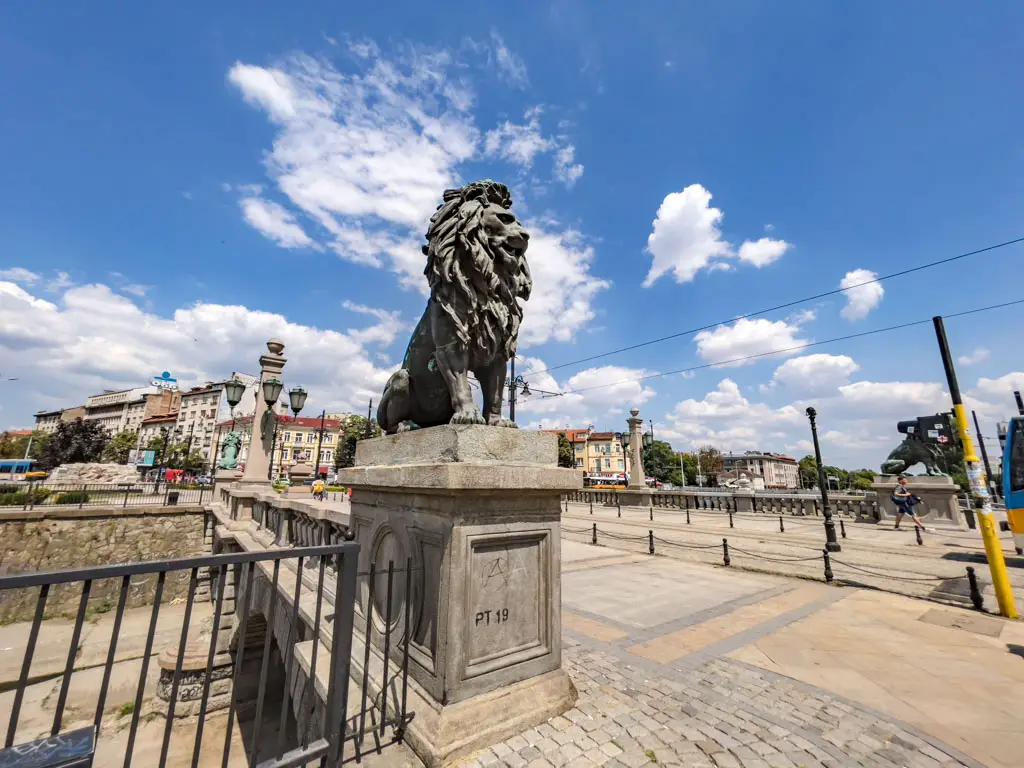
There are four bronze lion statues, designed by a family of Czech architects and sculptors.
Eagles’ Bridge
On the eastern edge of town is the Eagles’ Bridge, and the two of them are set to mark the boundary of Sofia’s city center.
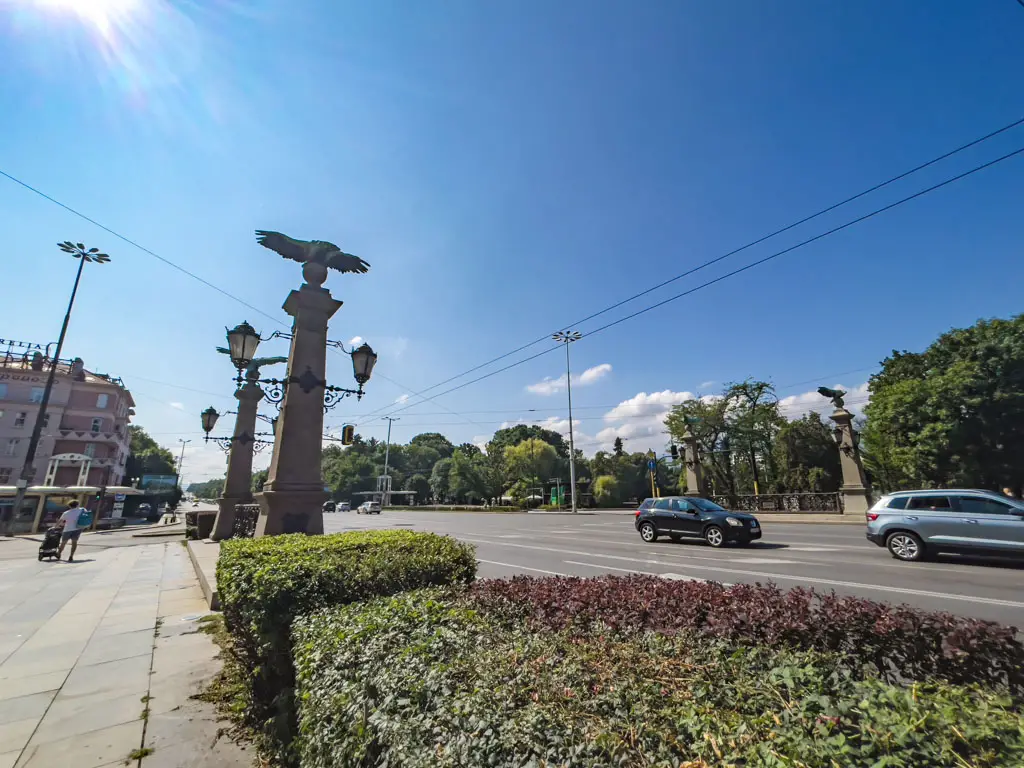
This side of town is far more urbanised and you can hardly see the river as the bridge has expanded on either side of it.
Monument of the Soviet Army
This is arguably the most controversial monument in the city. The monument itself stands at 37m tall in the center of a park, with a Soviet soldier surrounded by a Bulgarian family. It was erected in the 50s and there has been many movements for the monuments to be removed or destroyed.
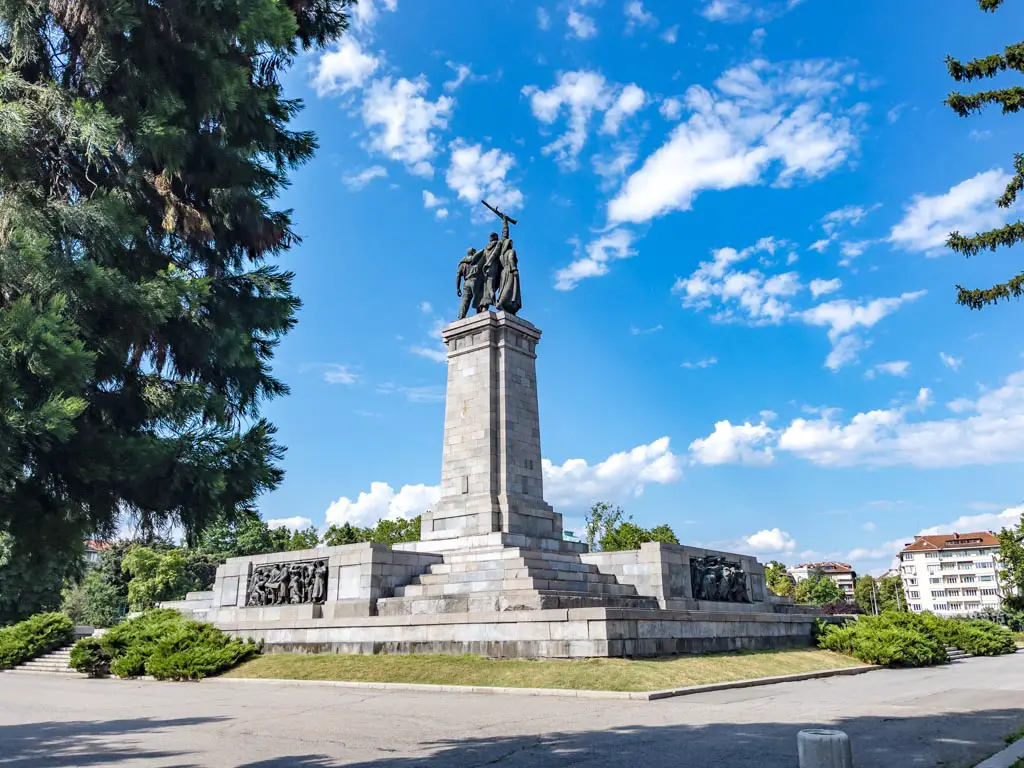
There has been many cases of vandalism and graffiti. Most notably in 17th June, 2011, when one of the facades was painted to represent American comic book heroes.
What to See in Sofia: Church edition
The majority of Sofia’s population are Orthodox Christians, so naturally, there are a lot of churches in Sofia. A large number of them had been converted into mosques under the Ottoman rules, making the switch back after gaining independence.
There are many churches in Sofia, so I’ll over cover the ones that are more famous I visited and thought it’s interesting to atheists.
Do remember that you need to dress modestly to enter churches – covering your shoulders and knees. Most churches in Bulgaria also don’t allow photos inside but are free to enter.
St Alexander Nevsky Cathedral
St Alexander Nevsky Cathedral is the largest and most iconic church in Sofia. It was built in the 1920s after Bulgarian was liberated in the Neo-Byzantine style and serves as the Bulgarian Orthodox cathedral.
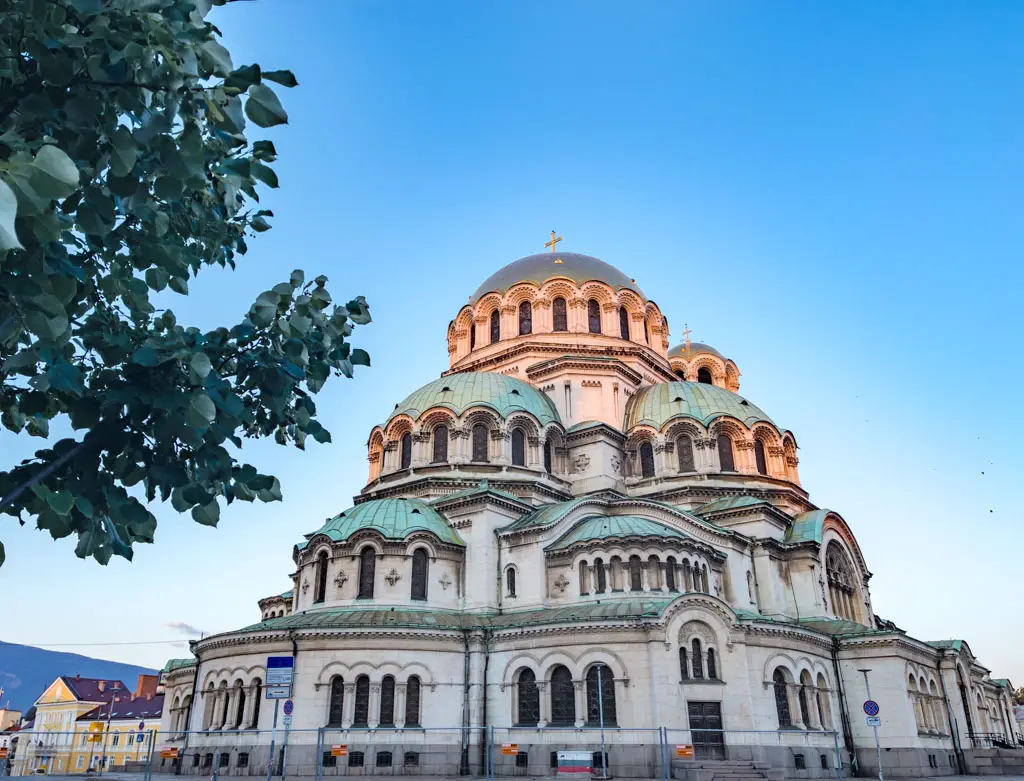
It is one of the largest churches in the world, being able to hold 5,000 worshipers. It’s named after the Russian Prince Alexander Nevsky to commemorate the Russian soldiers who died in the Ruosso-Turkish war that liberated Bulgaria from the Ottoman at the end of the 19th century.
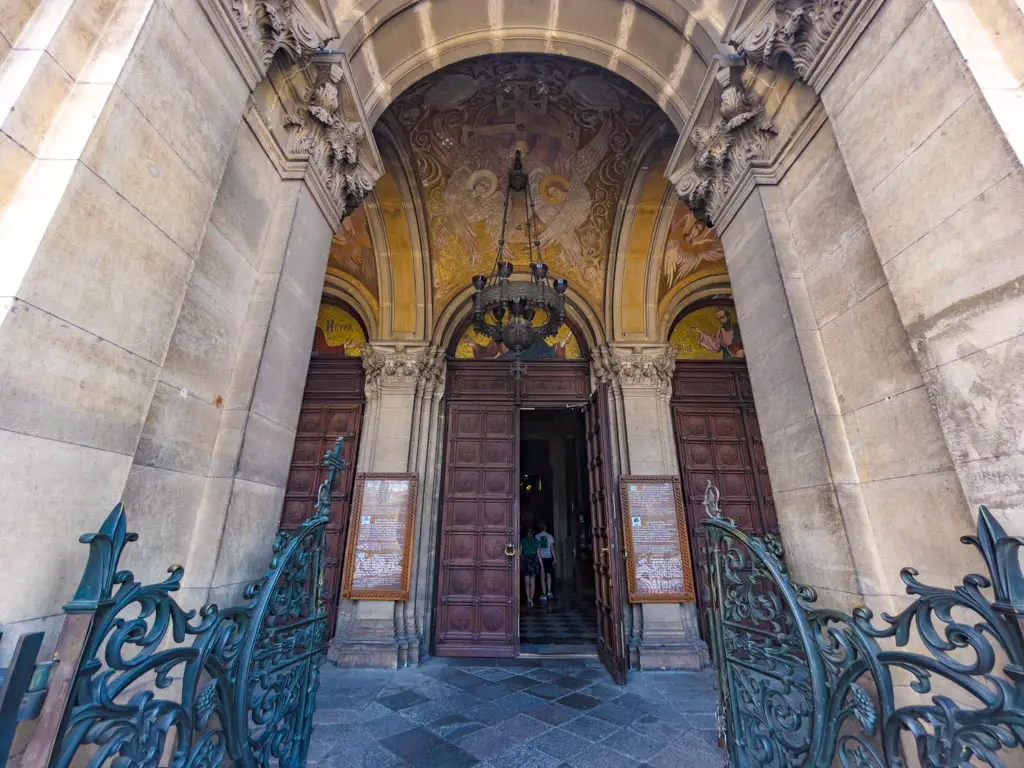
It’s free to enter but photos are not allowed. The dome is 46.3m high with detailed fresco that’s worth a visit.
St. Sophia Church
The less ornate St Sophia Church is located near St Alexnader Nevsky and is where the city get its name from. The church dates back to the 4th century under the Byzantine empire on a site that has always been a place of worship.

The emperor Justinian I built many churches across the Byzantine kingdom and was built around the same time as Hagia Sofia in Istanbul.
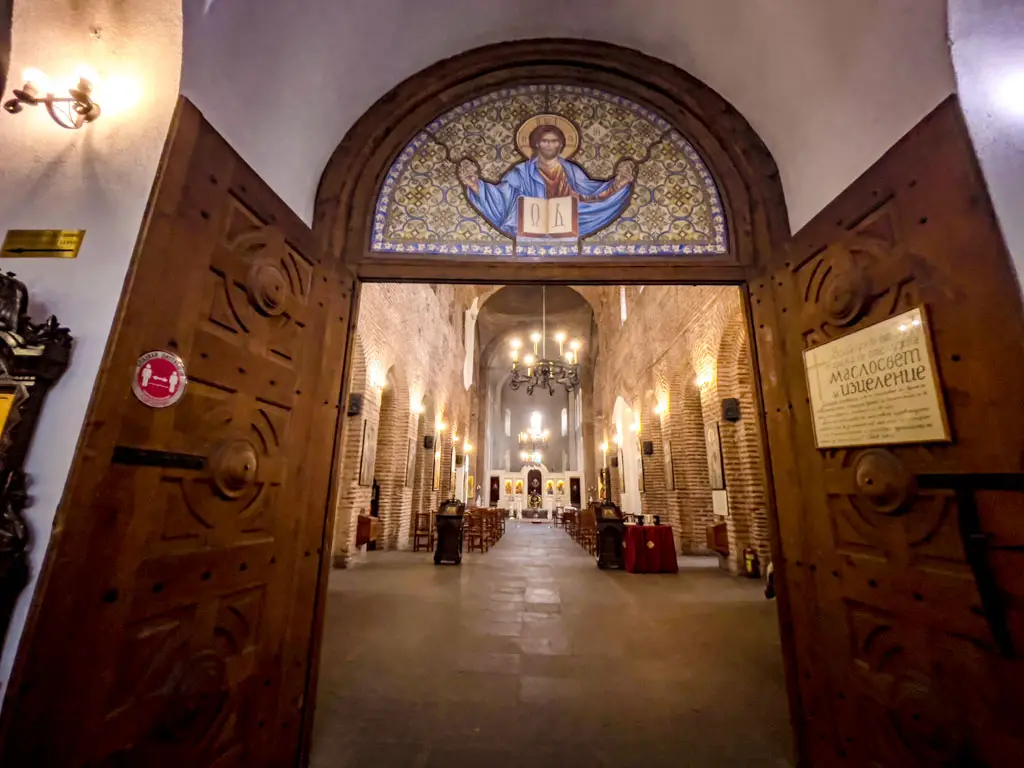
For a long time, the church lies outside the city limit on a slight hill, and it’s the first thing people see when they approach the city, which is why it became the name of the city in the 14th century.
Sveta Nedelya Church
The Saint Nedelya Church is a 10th century church south of the Serdika ruins. It started out as a wooden church that became a cathedral. While it is an important church in its own rights as the Holy Sunday Church, it’s most famous for the many times it had been destroyed.
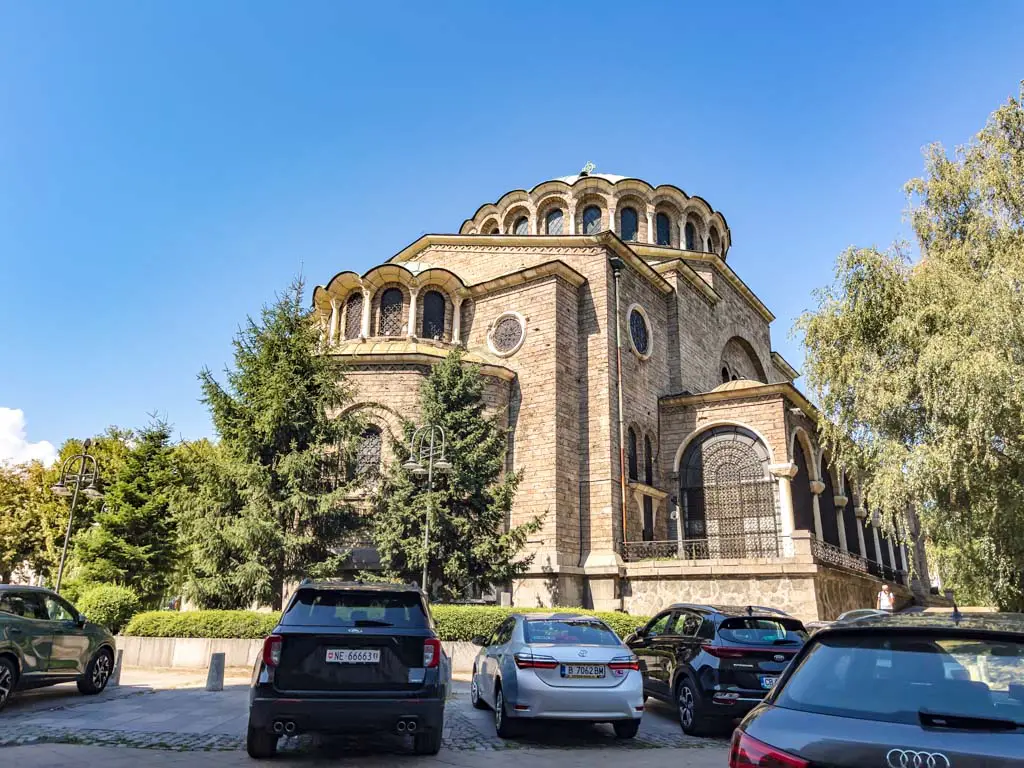
The most recent attempt was in 1925 during an assassination attempt on the Tsar. As the cathedral is where important funerals were hosted, the left party activist at the time first assassinated a general, then blew up the church. Luckily, Boris III was late as he attended a funeral of a soldier who had saved his life earlier that month. Over 200 people were killed and 500 injured. The cathedral was rebuilt in the 30s.
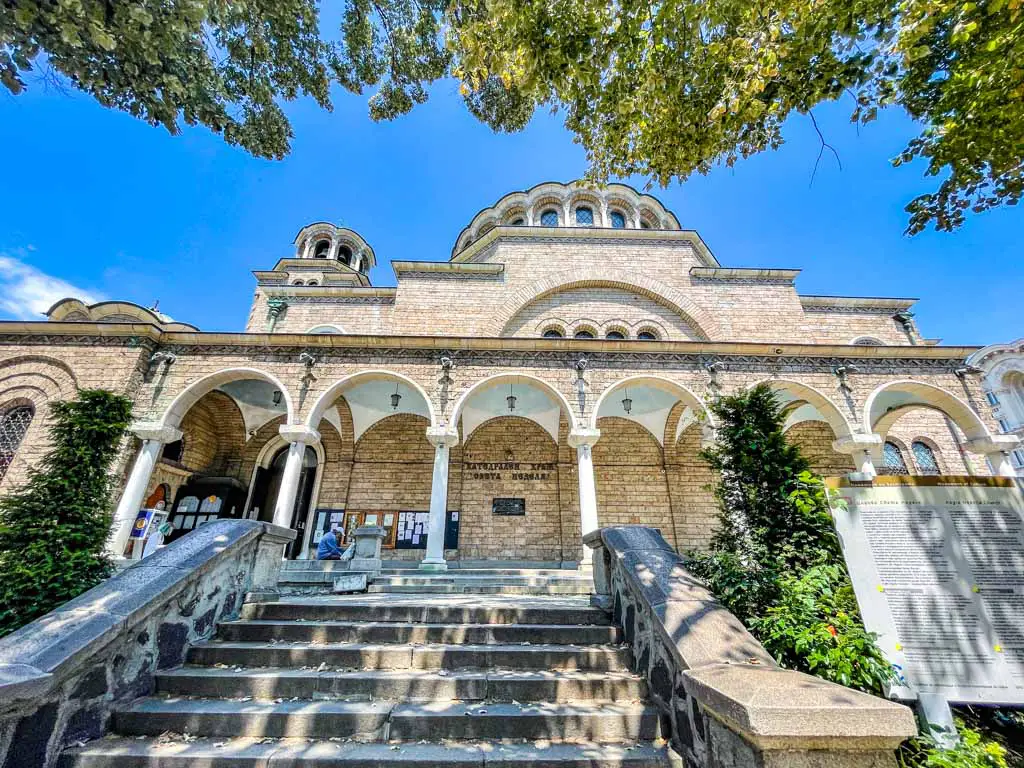
The current church we see was built in 1933 in the Byzantine Revival style by architect Ivan Vasilyov. It’s free to visit the church.
Saint Petka Church of the Saddlers
The small church between the Serdika metro station and the ruins are sat slightly higher than the ruins, marking its medieval origin. It was built in the 11th century for – as the name gave it away – the saddlers.
This is because churches built at the time were financed by locals under the rule of the Ottoman, and this church was mostly financed by the saddlers.
It’s a church that you would definitely pass through in the heart of Sofia!
St George Rotunda
The red brick rotunda is surrounded by more Roman ruins from the age of Serdica and has seem many religions passing under its roof. It is the oldest still functioning church in Bulgaria built in the 4th century.
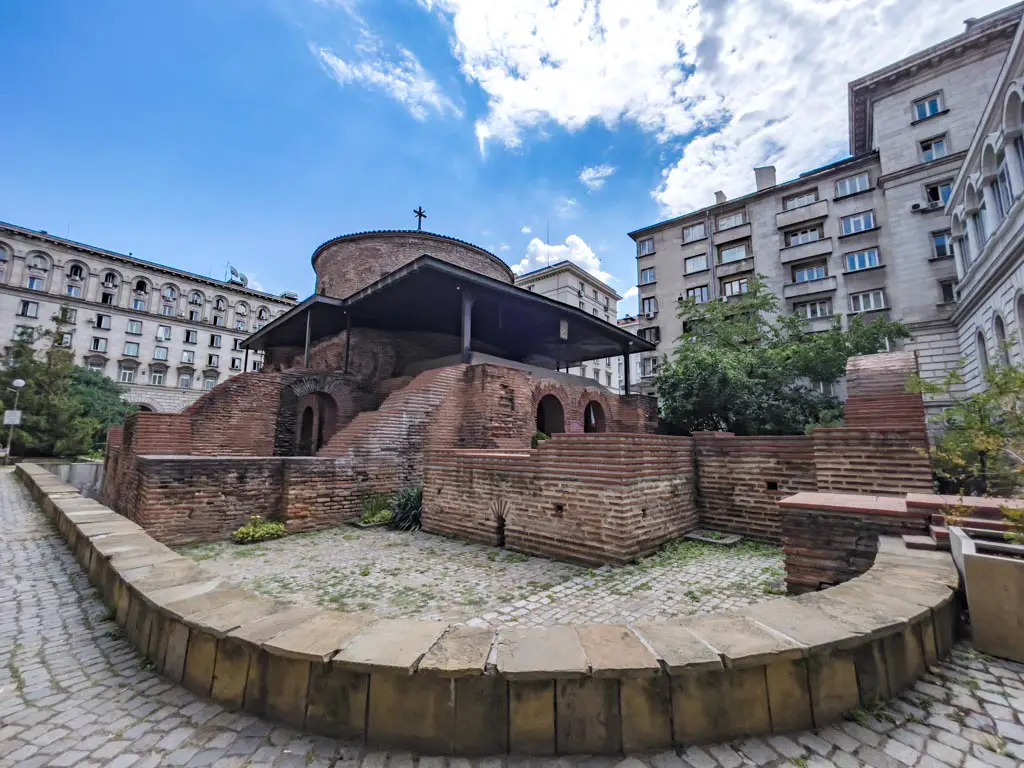
It was a bathhouse until Christianity came then turned into a church for mass baptisms. At the end of the 14th century, the Ottoman came and it was one of the few churches that were converted into a mosque.
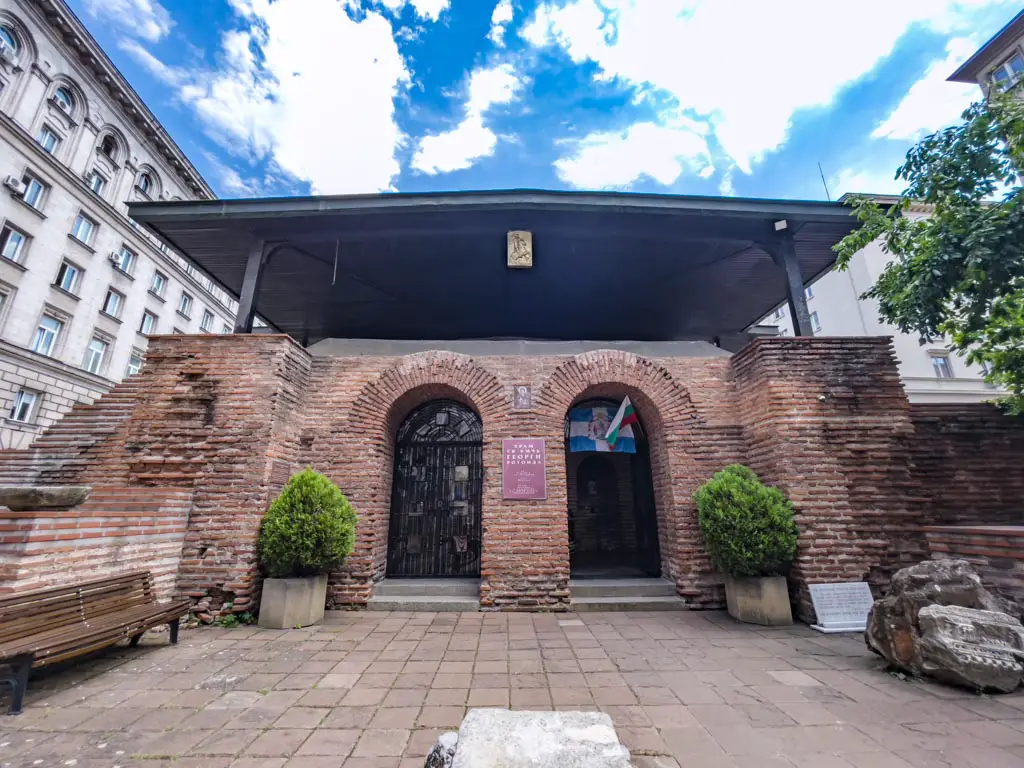
After liberation of Ottoman rules, this was turned back into a church and restored. It was almost demolished under communist rules as they wanted to turn this into a parking lot, but a young archeology student convinced them to preserve it.
It’s free to enter and the small round church has a beautiful fresco and mosaic on the ceiling.
St Joseph Cathedral
The more modern looking Cathedral of St Joseph is the seat of the Roman Catholic Church that was rebuilt after WWII. It’s located next to the western gate of Roman city and the ruins are in a part next to the church.
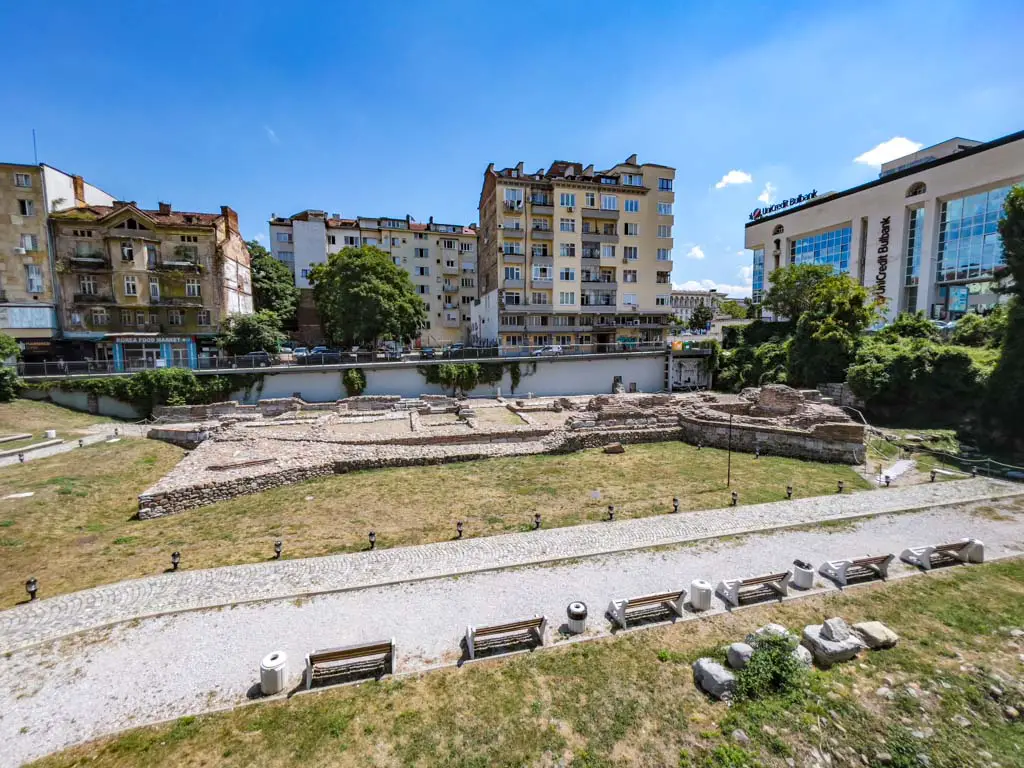
It’s also very close to the Square of Tolerance and distinctive with the white walls.
Seven Saints Church
The Sveti Sedmochislenitsi Church means the seven saints church and it is a mosque turned church in Sofia.
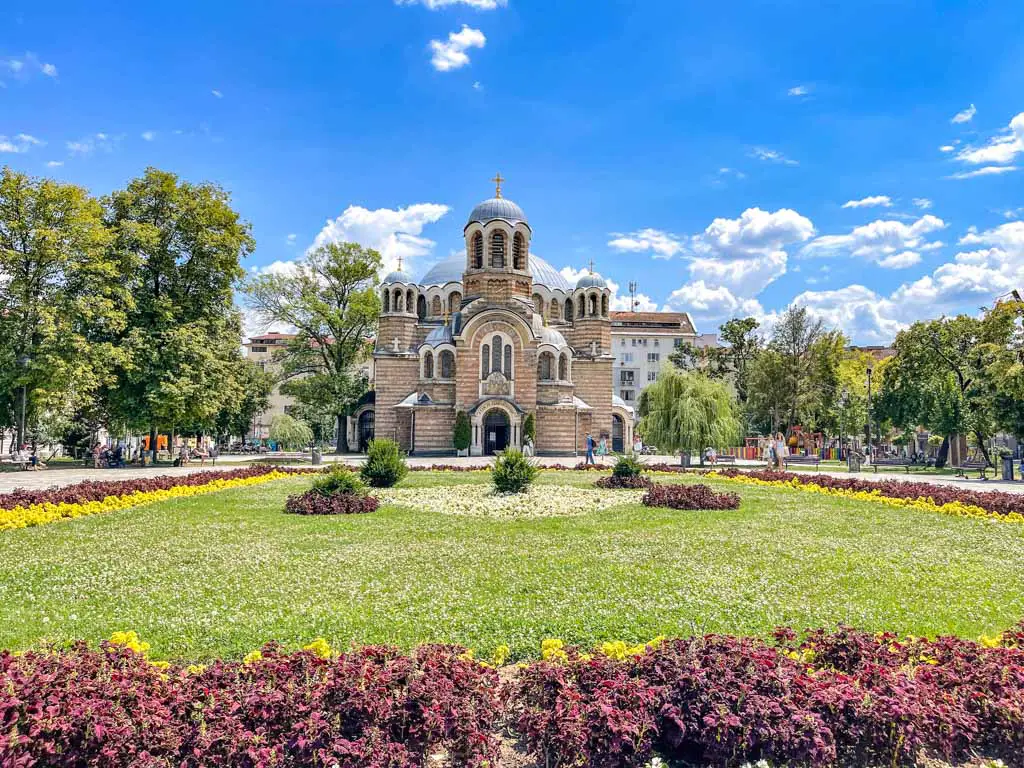
The brick building we see now was built in the early 20th century, but before that it was the Black Mosque built in 16th century by the Ottoman. It was named after the dark granite that used to build it but part of it collapsed during an earthquake in the 19th century.
It was used as a military warehouse and prison after that before it was rebuilt and converted into a church in the early 1900s.
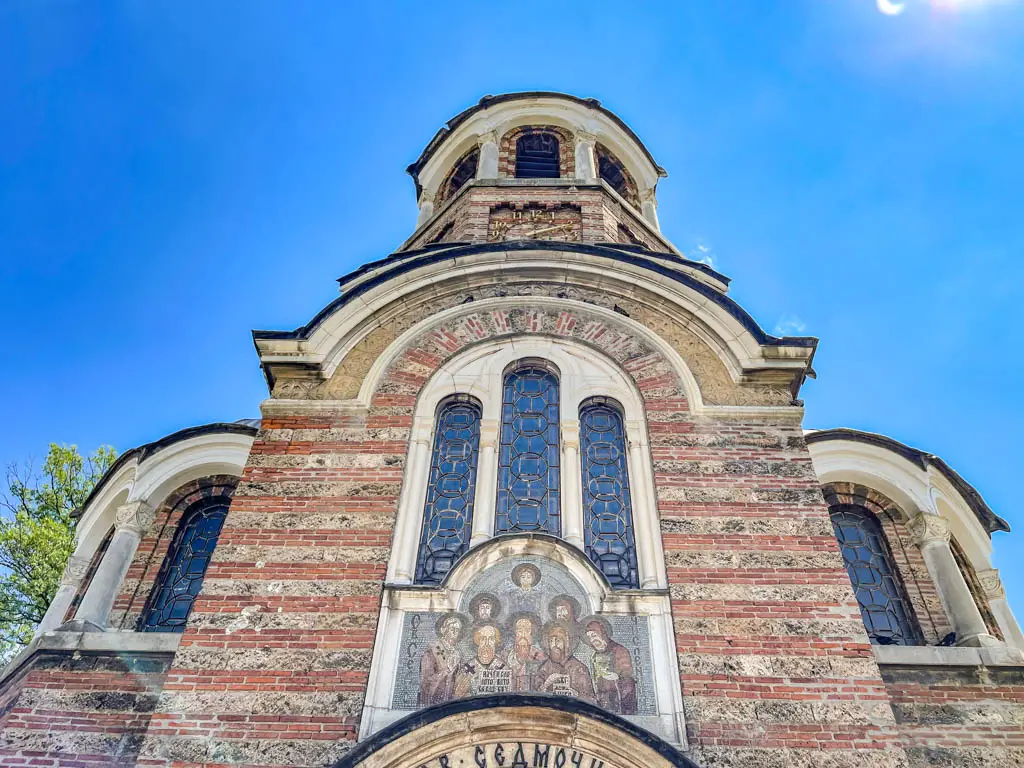
The seven saints can be seen in the mosaic above the door. They are all Bulgarian saints that were teachers and educators.
Church of St Nicholas the Miracle-Maker
Adjacent to the City Garden is the Russian church St Nichalos the Miracle-Maker. Its architectural style sets it apart from the other churches in Sofia. It was built as the official church of the Russian Embassy next door on the site that once stood a mosque, which was destroyed in the late 19th century.
The style is inspired by the Russian Revival reminiscent of the 17th century with the white-green colour palette and golden dome. The domes are much smaller and narrower than other churches in Sofia and the fresco inside the church are with a bright teal background.
Sofia Synagogue
The Sofia Synangogue is the biggest Synagogue in Sofia and southeastern Europe. It is also near the Square of Tolerance but hidden in plain sight on a residential street. It was built at the beginning of the 20th century in Morrish Revival style with the capacity to hold 1,170.
The interior is equally as beautiful with the largest chandelier in the city.
Note: you have to go through a security check to go on but they’re fairly friendly
Admission fee: 5 lv
Opening times: Sun – Fri 9:00 – 17:00
Address: Exarch Joseph Street 18, 1000 Sofia Center, Sofia, Bulgaria
Banya Bashi Mosque
The Banya Bashi Mosque stands on the northern end of the ancient Serdika complex and was built in the 16th century. It is the only functioning mosque in Sofia with a 15m diameter dome and a tower.
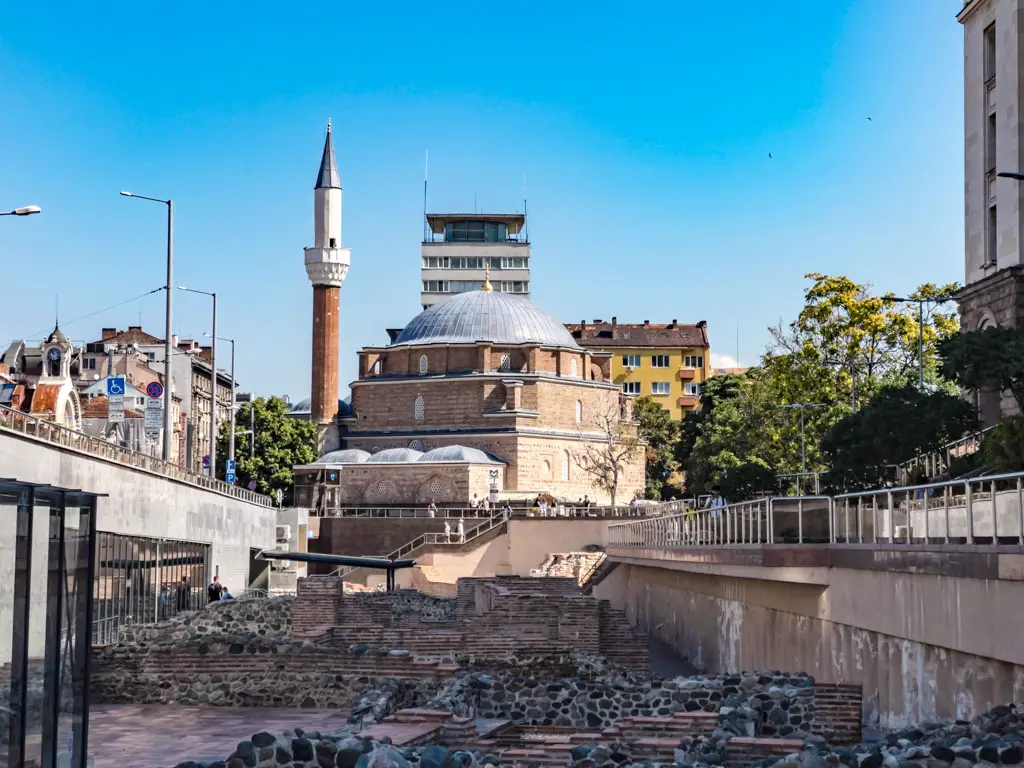
It was designed by the famous architect Mimar Sinan, who built over 300 major structures including Stari Most in Mostar. The name Banya Bashi means many baths, and it is built atop natural thermal spas.
Other Cool Places to visit in Sofia
If you are all history-out and want to find other cool places to visit in Sofia, here are a few spots that is perfect for a sit and read or just some down time:
Vitosha Boulevard
Vitosha Boulevard is named after the mountain not far from Sofia which can be seen from the boulevard. It is the main boulevard of Sofia that stretches between the Palace of Justice and the National Palace of Culture Park. The boulevard is 2.7km (1.7 miles) long and a great place to do some shopping.
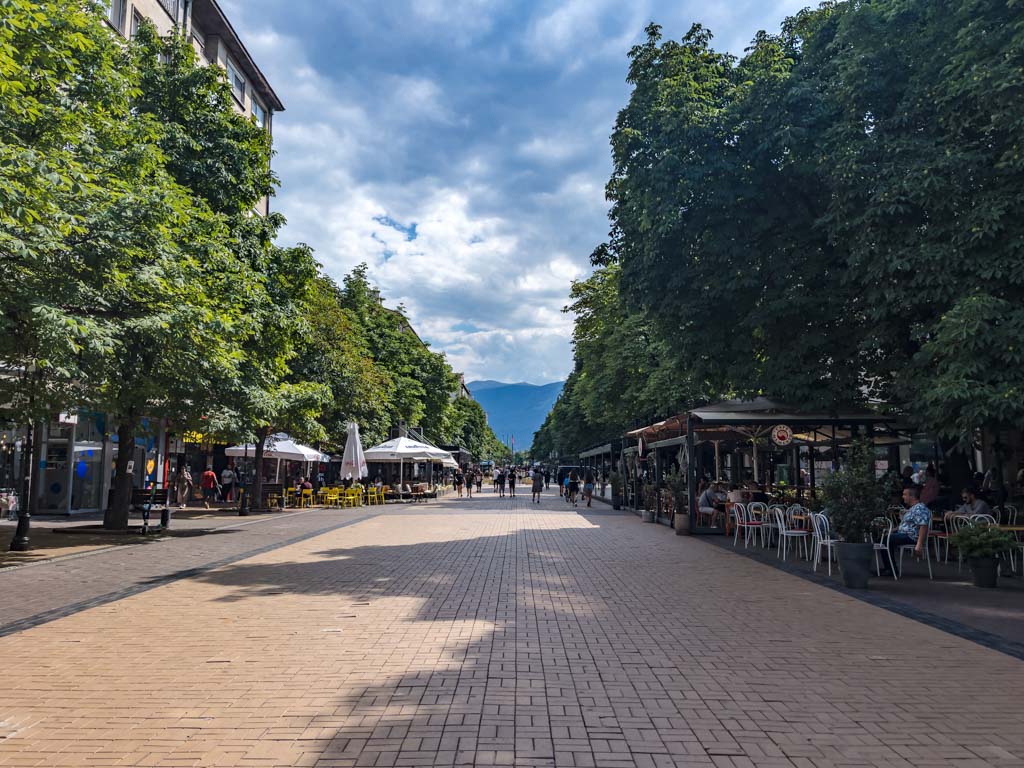
It is paved with the famous yellow brick that was imported at the beginning of the 20th century and is still holding strong today.
Crystal Garden
Crystal Garden is one of the many parks in Sofia and it’s a popular meeting place for tours as well as home to the Monument of Stefan Stambolov.
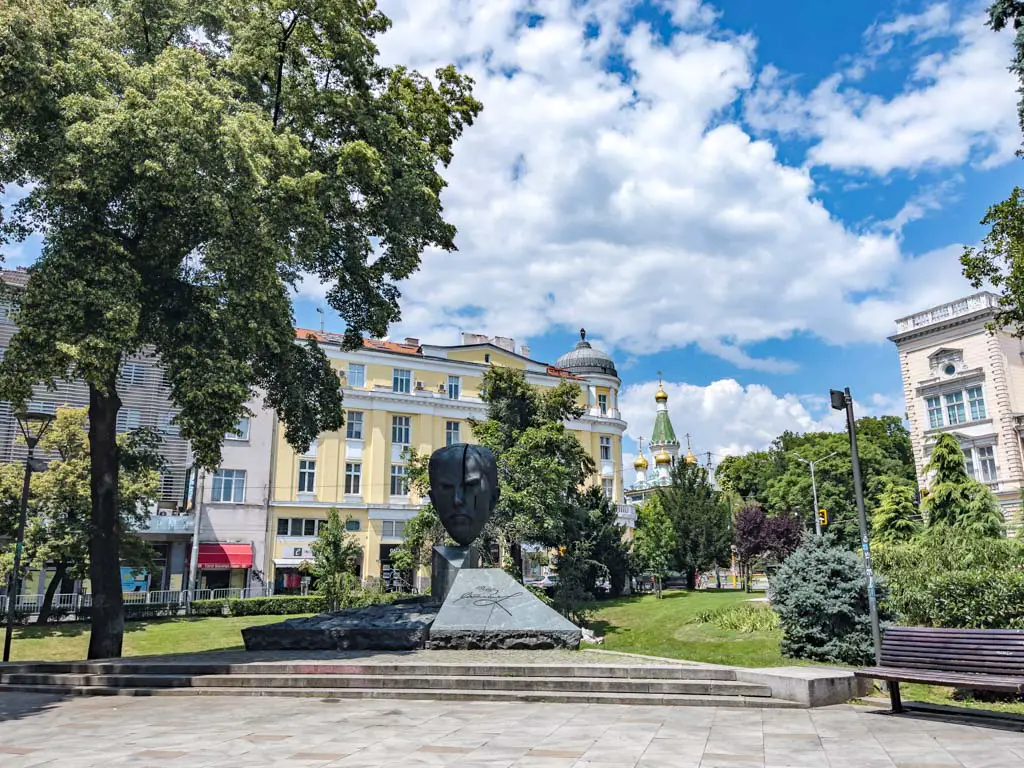
He was a politician who was assassinated and died from a head ax wound in 1895 right by the garden. There are a few bars near the garden and it’s a popular drinking spot for locals in the evening and night.
Women’s Market (Zhenski Pazar)
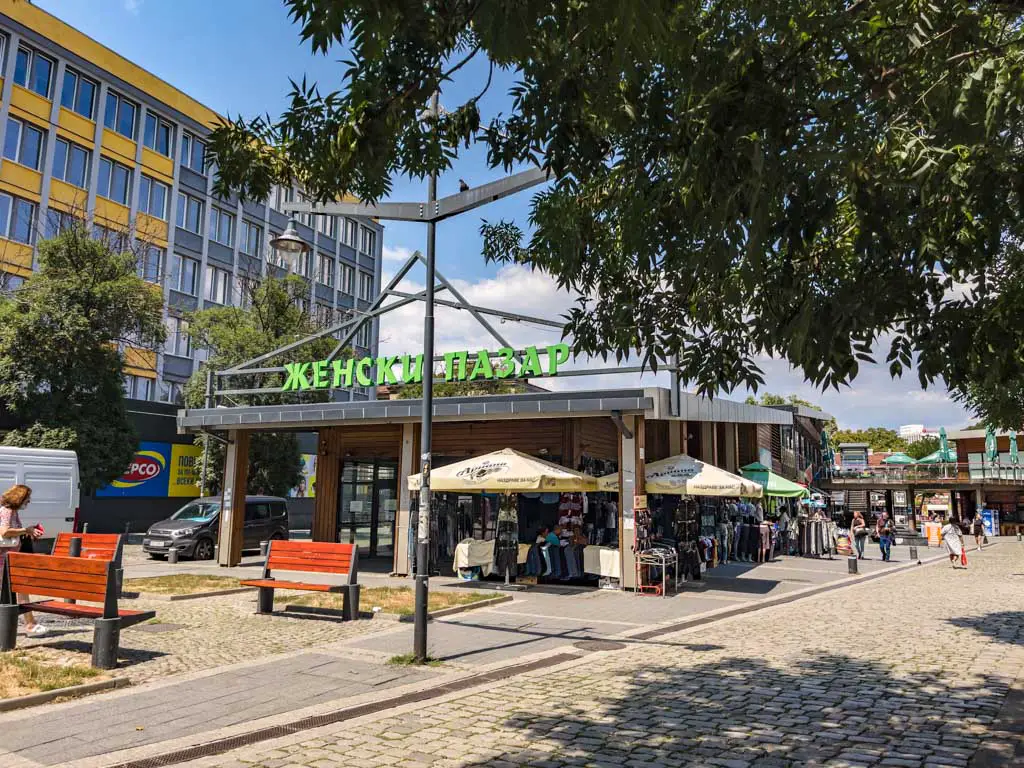
The Women’s Market is just south of the Lion’s Bridge and an open-air market that sells everything, but mostly fruits and produce. It was established after the liberation from the Ottoman in 1878, and it’s a lovely place to explore and see the local life.
Unlike the Ladies Market in Hong Kong, the name of this market stems from the fact that women weren’t allowed to go shopping anywhere besides this market on Fridays.
National Palace of Culture (and Park)
At the end of the Vitosha Boulevard is the National Palace of Culture with a long fountain in front of it. It is a multi-purpose building for conferences and concerts built in the communist era in 1979.
The leafy park is also popular with people especially with the water fountain that keeps the summer temperature lower.
Things to do in Sofia: museums edition
One of the best things to do in Sofia when it’s too hot or too cold is to visit a museum. Or if you’re a history fan!
Sofia History Museum
The Sofia History Museum is housed in the former Central Mineral Baths. The striped art nouveau building was built in the beginning of the 20th century and in use until 1986. It was a place to go on Sunday for a bath and gossip. Everyone was equal and naked inside.
Nowadays, it’s the place to go to learn about Sofia and Bulgaria’s history. It covers the history from religion to the short-lifed monachy from 19th to 20th century with some audio-visual as well.
Address: площад Бански 1, 1000 Sofia Center, Sofia, Bulgaria
Opening times: 10:00 – 18:00
Admission fee: 6 lv, can pay by card
The Red Flat
The Red Flat is an audio-guided tour of an apartment set up to reflect the life of a family in the communist era in the 80s in Sofia. Visitors should first head to The Gift for tickets, then walk to the flat around the corner to visit the flat.
The audio guide has 46 stories spread over 5 rooms telling the story of typical life during that time and it was a great insight. It is a must-do if you enjoy museums, and stories, and want to see a glimpse of life during the communist regime.
Address: GIFTED urban culture hub, 24 Ivan Denkoglu st, 1000 Sofia, Bulgaria
Opening times: 10:30 – 18:00
Admission fee: 18 lv, can pay by card
National Ethnology Museum
For those interested in culture, the National Ethnology Museum is a good place to visit. It is housed in the building was once the town hall for ottoman administration in the 19th century. It was then used as the royal family residence, prime minister cabinet, and then become the national gallery and ethnographic museum in 1944.
While the museum is not centered around the history of the building, you can still see one of the oldest elevator in Europe and also the architecture of the building.
The museum starts on the upper floor and while it’s not the best laid out, there are interesting tidbit about wedding and customs. I also had a lovely chat with the old old lady who’s there to do her weaving which is a UNESCO World Heritage trade. Downstairs are better exhibits of daily life from farming to cooking through the ages.
Note: it shares the same building with the National Gallery.
Address: Av. da Ilha da Madeira, 1400-203 Lisboa, Portugal
Openint times: Weds – Sun 10:00 – 18:00; Tues 14:00 – 18:00
Admission fee: 6 lv, cash only
Bulgarian Archaeological Museum
While it is one of the top museums in the city, I find the archaeological museum lacking in Sofia. There is a great Stone Age exhibition on the second floor with one of the best summaries I’ve seen, but everything else seems a bit random and wasn’t well laid out.
It is also far smaller than the other museums at the price of 20 lv, the ground floor exhibits with minimal signage and explanation is fairly underwhelming. It is mostly stone marking/inscriptions from the Roman era.
Address: пл. „Атанас Буров“, 1000 Sofia Center, Sofia, Bulgaria
Opening times: Mon – Fri 10:00 – 18:00; Sat – Sun 10:00 – 17:00
Admission fee: 20lv, can pay by card
Unique Things to do in Sofia
For something even more off-beat, here are some unique things you can do in Sofia:
Drink some Hot Springs water
Not too far from the Sofia History Museum, aka the former Mineral Baths, there are a series of taps next to a tram stop where citizens and tourists alike can get access to the hot spring water for free.
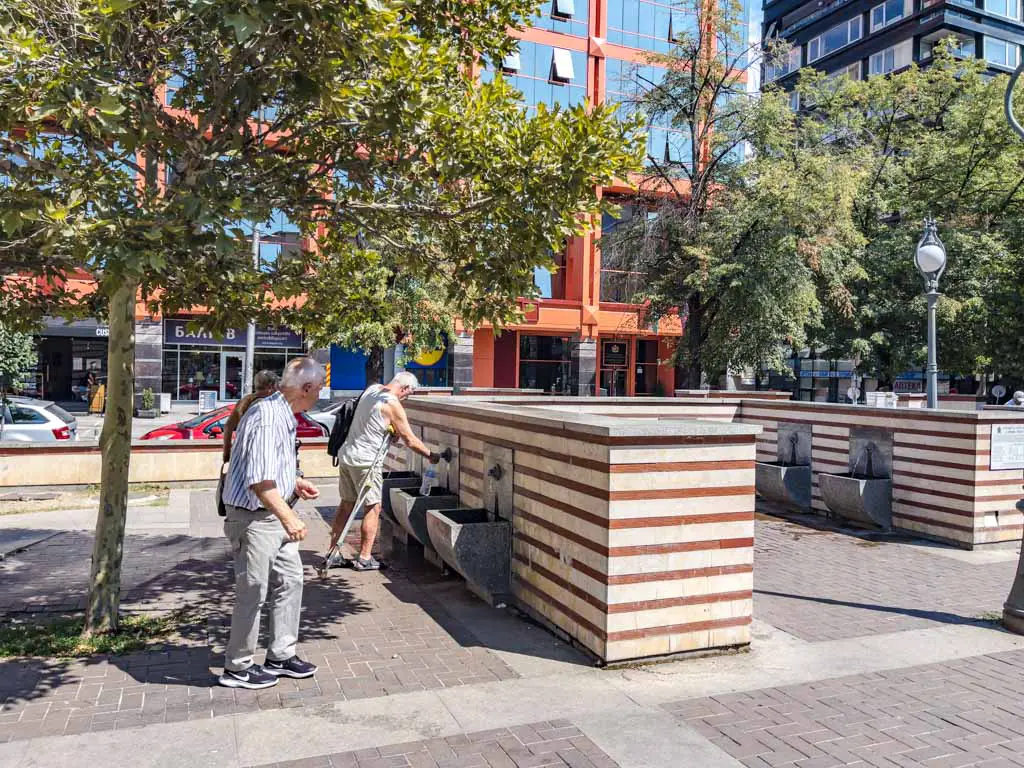
The water is 40 degrees and is probably nicer to drink if you visit in the winter.
Follow the Yellow Brick Road: Boulevard Tsar Osvoboditel
While walking around Sofia, one might notice that there are yellow bricks here and there. These special bricks were brought to Sofia in 1911 and said to be a gift for the Tsar’s second marriage from the Austro-Hungarian.
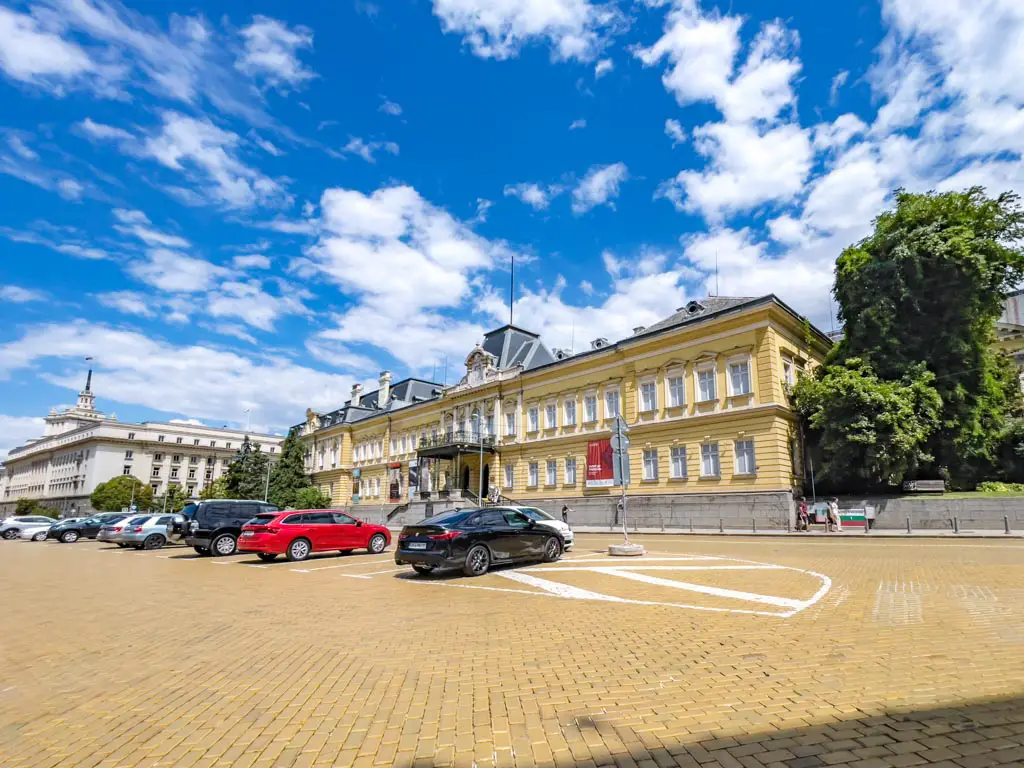
But actually, the administration wanted to get something special and took credit from a German bank to buy them. And this was a cover story for the general public.
While the yellow bricks get slippery in rain, they have lasted for a century plus!
Look out for Martenitsa on trees
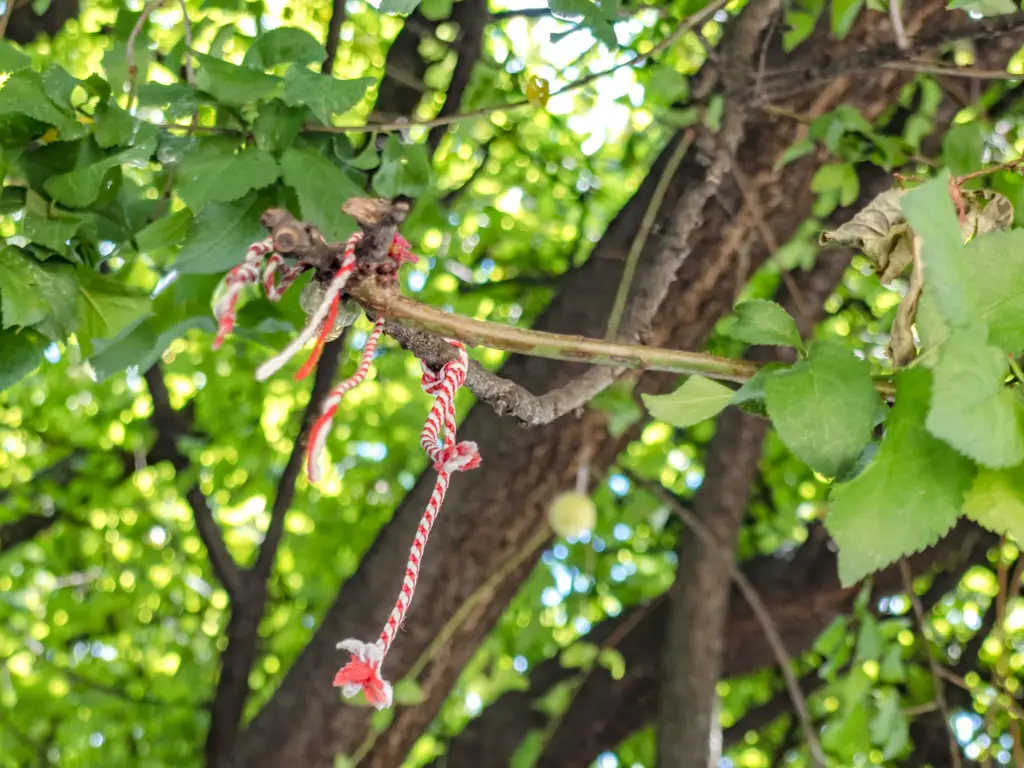
Bulgarians take spring very seriously and one of their traditions involves Martenitsa. Martenitsa is white and red rope bracelets made, given, and worn by everyone during springtime and are left on the first tree that blooms when spring actually arrives.
So if you look around Sofia, you might find trees dangling with bracelets!
Best Bars in Sofia Bulgaria
Looking for the best bars in Sofia? The nightlife in Sofia is the most active on Fridays and Saturdays, but most places are open every night. Here are some recommendations for your nightlife in Sofia:
Note: most bars and clubs allow smoking indoors in Sofia, so be aware if this would bother you!
New Sofia Pub Crawl
A pub crawl is a great way to make new friends, and the New Sofia Pub Crawl runs daily from the Crystal Palace. You can simply show up at 9pm and join the group off for a night of bar hopping. They’ll take you to five locations with a drink at each, and the venues are different every night!
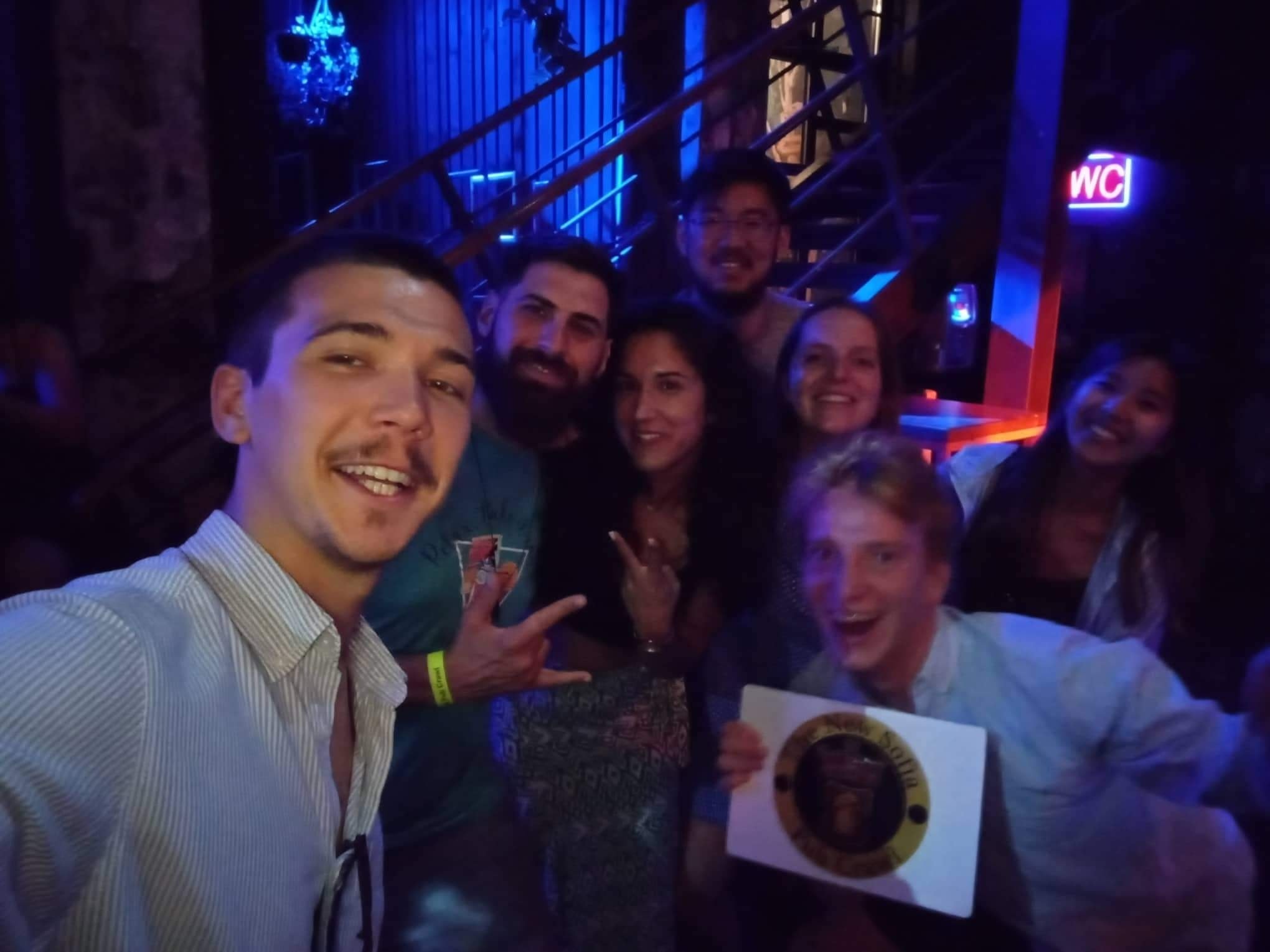
This is a great way for solo travellers to enjoy a night out and make new friends. I went on a Sunday night and it was a lot quieter, but I had a lovely chat with the other people in the group.
You can also book online and pay on spot or pay online.
Note: remember to bring your ID card and some cash for the evening!
Meeting time: 9pm
Meeting place: Crystal Garden
Cost: 30 lv – includes one drink at each location, usually a beer or a shot
Hambara
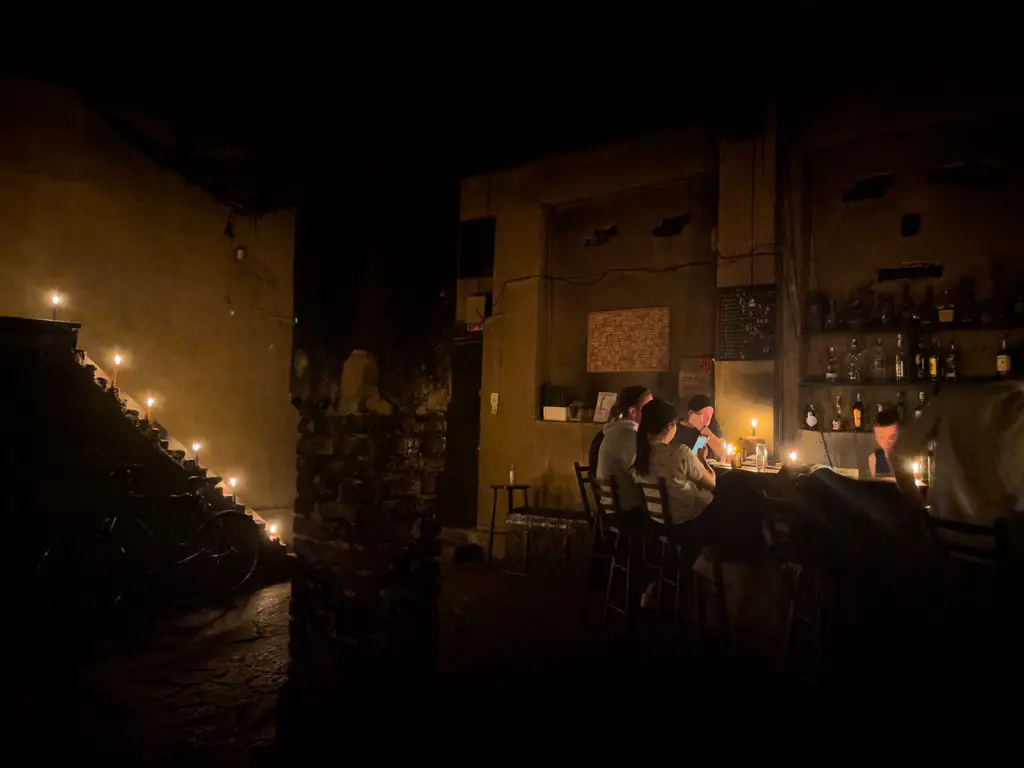
Hambara Bar is set back in an alleyway on a quiet street that you won’t notice at all if someone hasn’t told you. The bar is lit by candlelight only, giving it a unique atmosphere. It was almost like you travelled back in time if it isn’t for the bar and how everyone is dressed!
Note: people are allowed to smoke inside
Address: ul. “6-ti septemvri” 22, 1142 Sofia Center, Sofia, Bulgaria
Opening times: 21:00 – 4:00
McCarthys Irish Pub
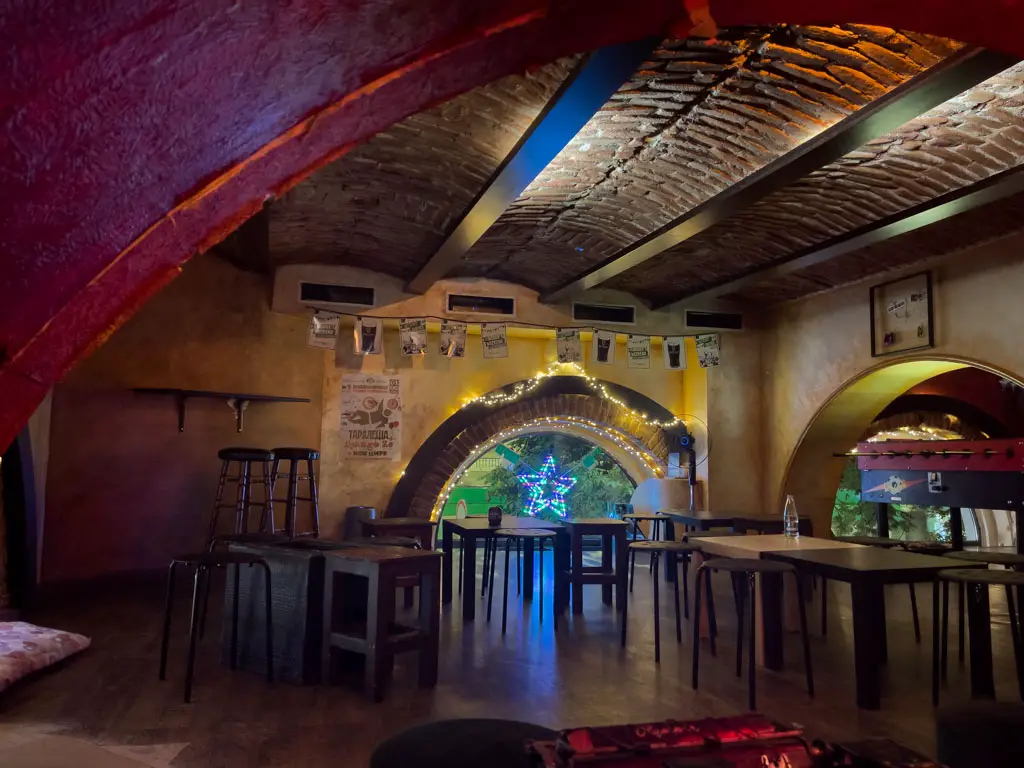
Also hidden in plain sight, the McCarthys Irish Pub is on the second floor of a building across a Mcdonald’s near the start of the Vitosha Boulevard. It’s a lively and social place that frequently hosts live music and other events and good music.
Address: ул. „Алабин И. Вл.“ 29, 1000 Sofia Center, Sofia, Bulgaria
Opening times: 17:00 – 2:00
Bar “Bar”
The Bar called “Bar” is right by Crystal Garden with two outdoor terraces and cheap drinks. It’s lively during the day and also at night, and one of the most popular places for tourists and locals alike.
Address: ul. “6-ti septemvri” 7, 1000 Sofia Center, Sofia, Bulgaria
Opening times: 11:00 – 3:00
Day Trips from Sofia
If you have extra time after doing everything I’ve listed for Sofia or simply want a change of sceneries, there are easy day trips to do from Sofia:
Vitosha Mountain
The Vitosha Mountain is the backdrop of Sofia standing at 2,292m high. It is accessible by public transport and only a 20 minutes drive. There are many hiking trails on Mount Vitosha and it’s popular for locals on the weekend as well.
Note: in the summer months, the cable car to Aleko only runs during the weekend.
Boyana Church and Boyana Waterfall
The easiest day trip and value for time is the Boyana Church and Boyana Waterfalls. The Boyana Church is one of the most famous churches in the area known for its fresco. And the start of the hiking trail up to Boyana Waterfall is only 5-10 minutes walk away.
Together, the two make for a perfect half-day or day trip, depending on how fast or slow you want to take the trek!
More information in a blog post coming soon.
Rila Monastery and Rila Lakes
Although not quite as close, the Rila Monastery and Rila Seven Lakes are two other popular day trip destinations. It can be combined as a day trip or done separately, as although they are both in Rila, they are not close together.

Rila Monastery 
Rila Lakes
The Rila Monastery is the largest monastery in Bulgaria and dates back to the 10th century. The Seven Rila Lakes are glacial lakes known for their beauty and is actually not too difficult a hike.
The best option for people who are not looking to rent a car and drive is to book a self-guided tour to both.
Where to Stay in Sofia
It’s easy to walk around Sofia’s town center and the best place for visitors to stay. That said, its comprehensive transport system means that you can definitely stay further out and still be within easy reach of the city. Here are some of my top picks for Sofia:
(with air conditioning because the summer can be very hot)
Budget & Midrange
- Visito Aparthouse is a value of money apartment near the train station and with good public transport.
- Best Western Plus Bristol Hotel is slightly south of the old town, with great reviews near shopping and restaurants.
- Sofia Place Hotel by HMG is slightly dated but overall, with great amenities.
- Central Hotel Sofia is a choice for those who want a more modern and sustainable choice.
Splurge:
- Grand Hotel Sofia is smack at the heart of the city with spacious rooms and friendly staff. While there is an elevator, it is a little dated.
- Rosslyn Thracia Hotel Sofia is a stone’s throw away from the Vitosha Boulevard with helpful staff.
- InterContinental Sofia, an IHG Hotel and Hyatt Regency Sofia are solid choices near the Cathedral Saint Alexandar Nevski.

Pin me! 
Pin me!

Pin me! 
Pin me!
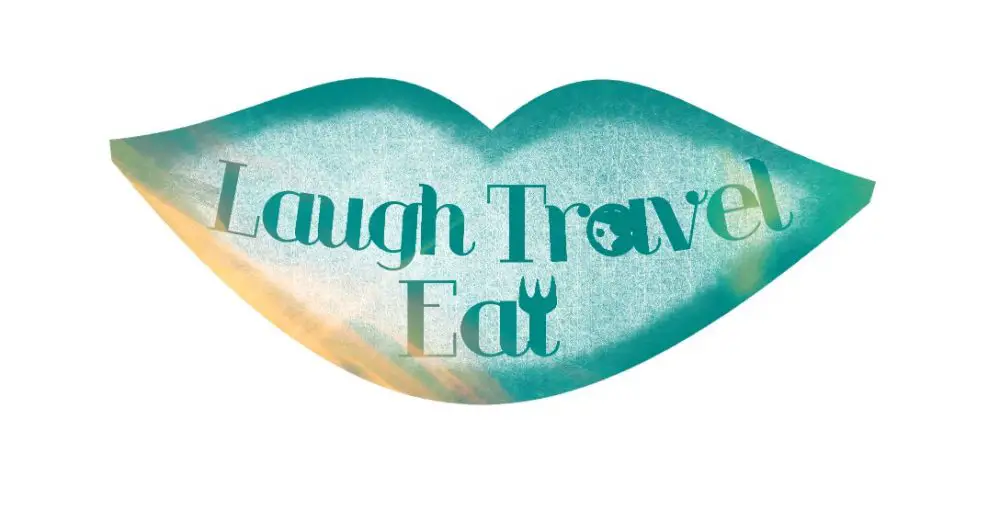

 中文 (香港)
中文 (香港)